FINDING REFUGE IN ISRAEL


NOVEMBER/DECEMBER
Thousands of Ukrainians seek a new home SHIDDUCH RENAISSANCE The latest dating apps for Millennial Jews
FEMTECH INNOVATIONS | INSIDE THE SMITTEN KITCHEN | HANUKKAH GIFT GUIDE
Teens find a warm welcome at Meir Shfeyah





give.mazon.org/hadassah
of
“[A] rare look inside Jewish homes, synagogues and other spaces, which the Jewish community normally keeps fairly locked down from outsiders.”
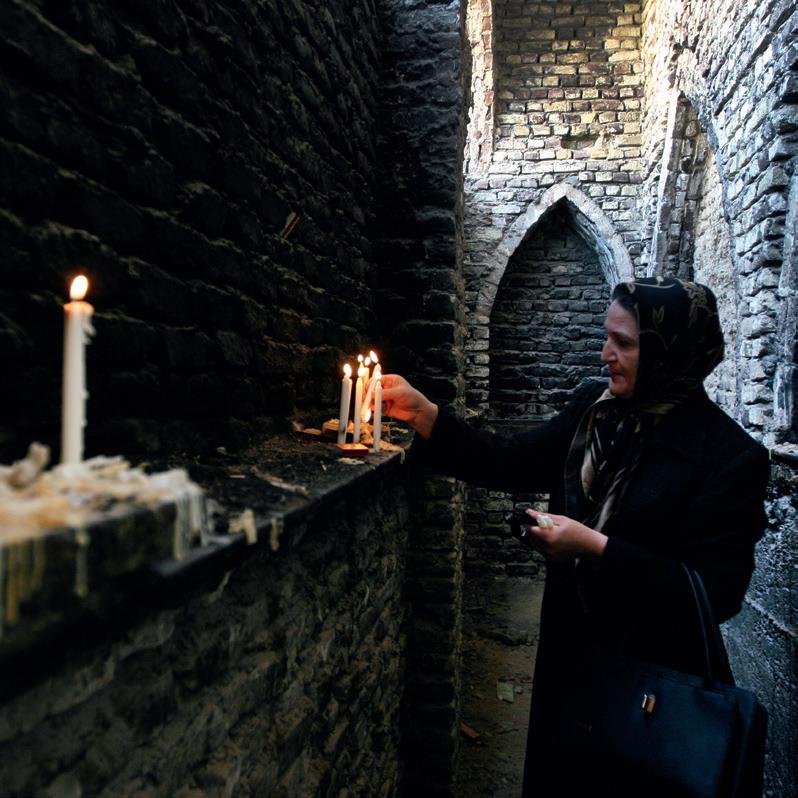
Post
“A monumental achievement that will be valuable to scholars and general readers interested in Judaism, religion, and art history.”

PENN STATE UNIVERSITY PRESS www.psupress.org
Lior
and
The Jerusalem
ןליאה ילבקה J. H. Chajes the kabbalistic tree Jews
Iran A Photographic Chronicle Hassan Sarbakhshian,
B. Sternfeld,
Parvaneh Vahidmanesh
now | isbn 978-0-271-09264-5 Available now | isbn 978-0-271-09345-1
starred review, Library Journal Available


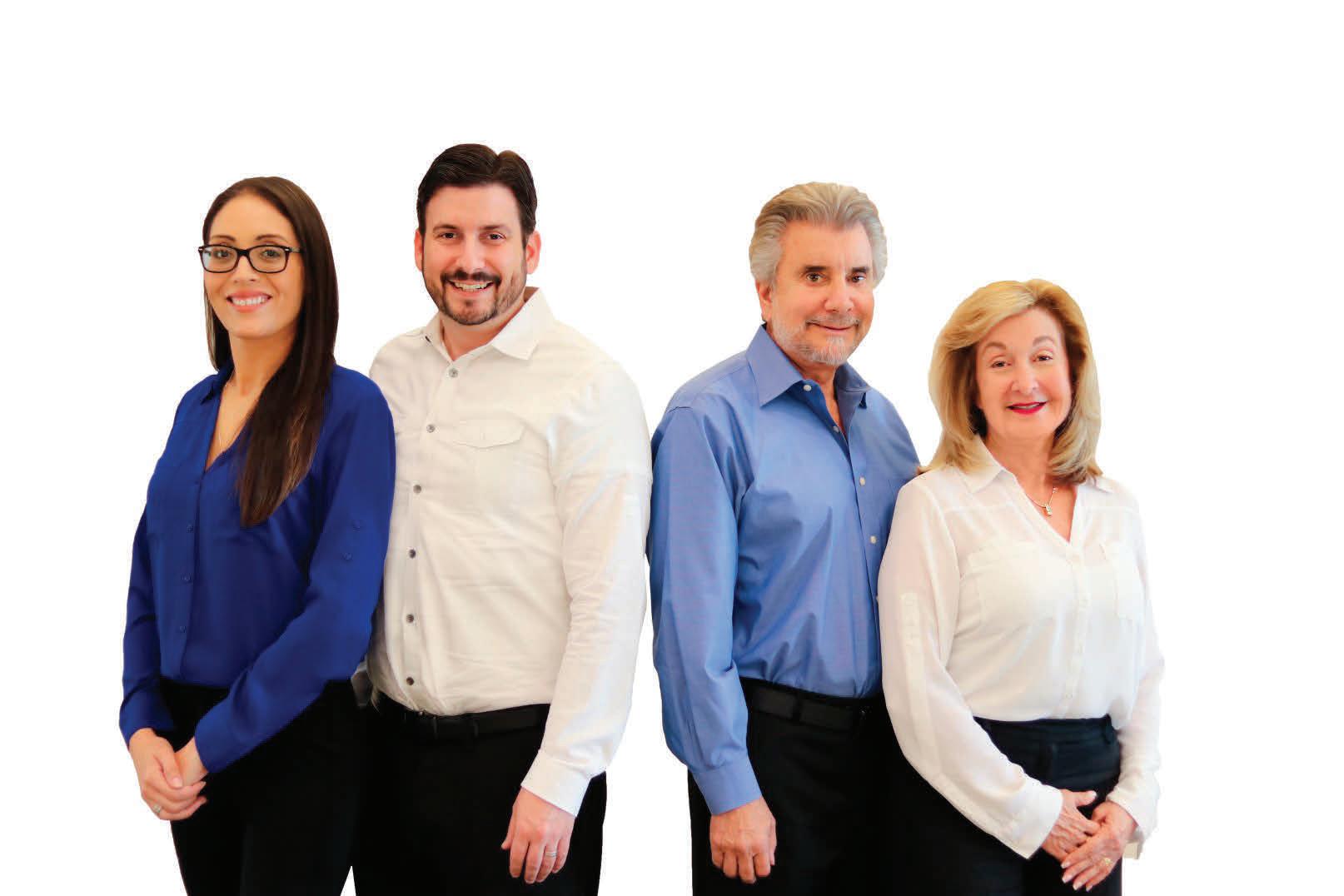



Sean P. Siegrist, P.A. Realtor ® Broker Associate - R.E. Instructor Cell: 561-568-3284 SeanSiegrist@hotmail.com Risë V. Siegrist, Realtor ® Broker Associate Certified Paralegal Cell: 561 889 6873 RiseSiegrist@hotmail.com Awarded Top 1% in Florida for Residential Sales in 2021! Your premier team of agents specializing in Wellington & Palm Beach for over 18 years. You’re Never Alone when Buying or Selling a Home! www.TheSiegristGroup.com Re/Max Direct at Kobosko ’s Crossing 9164 Forest Hill Blvd. Wellington, FL 33411
16 FINDING REFUGE IN ISRAEL
By Larry Luxner

More than 40,000 citizens of Ukraine and Russia—and to a lesser extent, Belarus—have fled to Israel since Russia’s invasion of its southern neighbor, sparking bloodshed on a scale Europe hasn’t seen since World War II. Many of the newcomers, whether they arrived as immigrants under the Law of Return or with tourist visas taking temporary refuge, are traumatized by their experiences. Some came to Israel because they already had relatives or friends there; others were seeking to take advantage of an unknown but safe haven. And some came as students, including the 29 Ukrainians now enrolled at the Hadassah-supported Meir Shfeyah Youth Aliyah Village.
24 JEWISH MATCHMAKING? THERE’S AN APP FOR THAT

 By Arielle Kaplan
By Arielle Kaplan


‘Turns out, I had been too busy crying over undatable duds on the Hinge app to notice the shidduch renaissance that started during the Covid-19 pandemic,’ writes the 28-year-old single author. From generation to generation, Jews have relied on the tradition of matchmaking to adapt to the ever-changing landscape of dating. Now, two of the newest and buzziest post-social distancing dating apps are going beyond the algorithms of established platforms like Jdate and JSwipe to incorporate a matchmaker component as well as in-person gatherings.
• Interview with Joel Grey
‘Leopoldstadt’
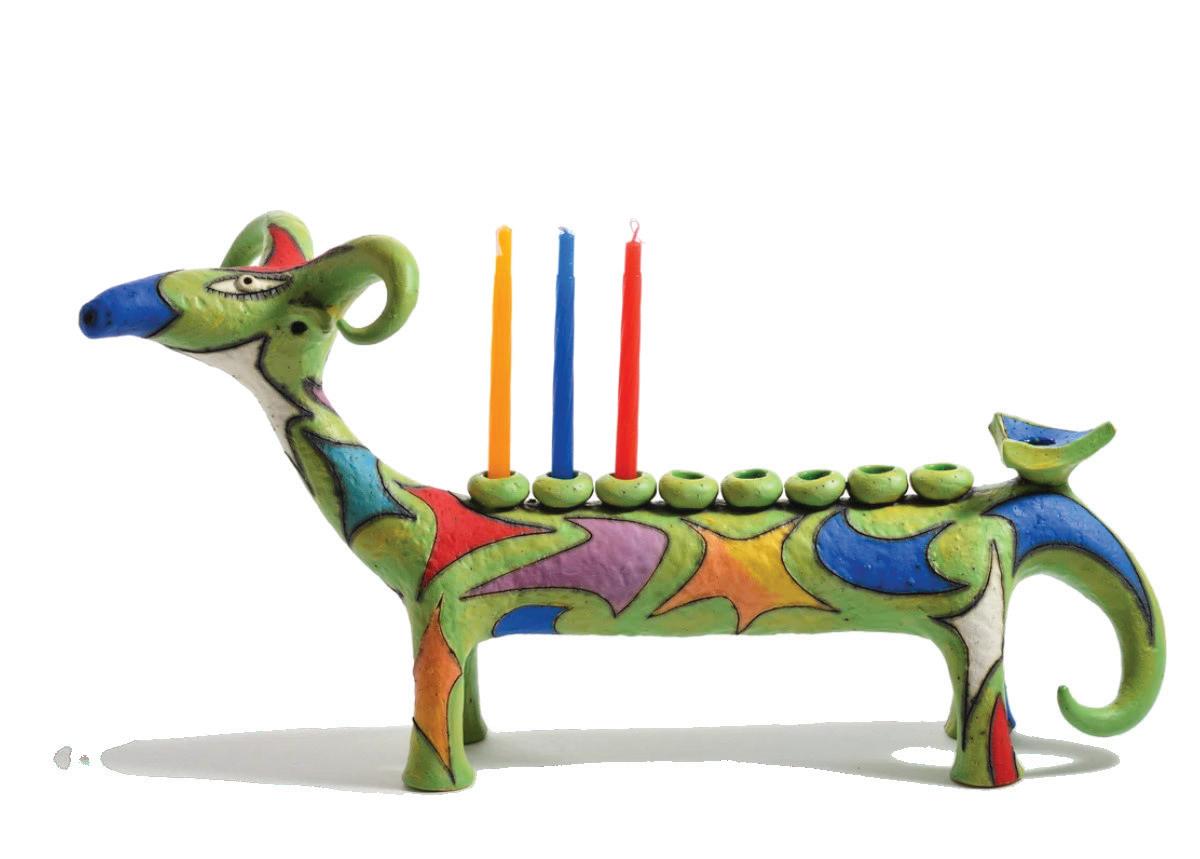
• Roundup of children’s books; new titles for young adults
• ‘Victorious,’ a page-turner from Israel
NOVEMBER/DECEMBER 2022 | VOL. 104 NO. 2 On the Cover The scene
IN EVERY ISSUE 4 President’s Column 6 The Editor’s Turn 8 Letters to the Editor 10 Cut & Post 32 Hadassah Medicine 36 Hadassah News 49 Crossword Puzzle 63 About Hebrew 64 Question & Answer facebook.com/hadassahmag @HadassahMag @hadassahmagazine Join the Conversation
at a Tel Aviv protest to mark Ukrainian Independence Day on August 24, six months into Russia’s war with Ukraine. Photo by Ilia Yefimovich/DPA/Alamy Live News
DEPARTMENTS 12 COMMENTARY A civics lesson for Jews 14 ESSAY Women, madness and supermarkets 28 HEALTH FemTech innovations out of Israel 38 TRAVEL Thessaloniki’s hidden charms 40 FOOD Deb Perelman of Smitten Kitchen fame 50 40 44 HANUKKAH GIFT GUIDE 46 ARTS
(CLOCKWISE FROM BOTTOM) INNA OLSHANSKY/INN DREAM GALLERY, INNAOLSHANSKY.COM; FROM ‘TIZZY THE DIZZY DREIDEL’ © 2022 USED WITH PERMISSION OF KAR-BEN PUBLISHING, KARBEN.COM; IMAGE FROM ‘SMITTEN KITCHEN KEEPERS’ © 2022 BY DEB PERELMAN
family saga,
50 BOOKS
• Tom Stoppard’s Jewish
3 NOVEMBER/DECEMBER 2022 I I hadassahmagazine.org
What’s in a Name?
Moses had 40 years to prepare the Jewish people for self-rule. When Theodor Herzl arrived in Basel, Switzerland, on August 25, 1897, he had just four days to prepare the scene for the First Zionist Congress—the most consequential manifestation of Jewish independence in 2,000 years.
As crucial as the agenda was that the Congress would set when it convened, Herzl was also determined to create a sense of the moment for the diverse collection of delegates from 17 countries. His most conspic uous piece of stagecraft—requiring formal attire for all—reflected not snobbery but psychology. “Even more than impress the outside world,” Amos Elon wrote in his legendary biography, Herzl, the leader “wanted to impress the delegates themselves with their own importance.”
In August, I was privileged to travel to Basel with a delegation of Hadassah leaders to join more than 1,000 participants from around the world in celebrating the 125th anni versary of the First Zionist Congress.
The gathering included speeches, discussions and commemorative events focused on Israel’s successes as well as challenges facing the Jewish state and people. The three-day event was organized by the World Zionist Organization, the body inaugurated at the First Zionist Congress and now chaired by Yaakov Hagoel. The celebration culminated at a gala in the Stadt Casino, where the first Congress was held. Israeli President Isaac Herzog and his wife, Michal, joined attendees at the gala.
Three things stood out for me in comparing Herzl’s era and our own. First and most obvious, Jewish sovereignty, instead of an aspiration, is now a reality. Indeed, November 2022 marks the 75th anniversary of the United Nations Partition Plan that endorsed the creation of a Jewish state and the 105th anniversary of the Balfour Declaration, a state ment from the British government in support of the establishment of a Jewish homeland. Both acts flowed directly from Basel.
LET US ALL REMEMBER AND CELEBRATE RESTORED JEWISH SOVEREIGNTY.
Second, our challenge has changed from addressing a world unfamiliar with Zionism to one that is largely misinformed. Of the 111 United Nations member states that achieved independence after World War II, virtually all had national movements built around independence struggles, but only Israel is routinely singled out for censure.
The Zionist movement accepted the 1947 partition plan that called for two states—one Arab and one Jewish—in historic Palestine. Many Arab nations that originally opposed the plan have since made peace with Israel. On numerous occasions, the Jewish state has also engaged in negotiations for the emergence of a
Palestinian state and will undoubt edly do so again.
As a concept, Zionism was not new in 1897; what Herzl introduced was political organization. After Judaea revolted against colonial rule between 66 and 73 CE, the Romans enslaved and deported most of the population—but the expulsion was incomplete. There was a second expul sion after the Bar Kokhba Revolt (132 to 135 CE). Even after that, some Jews remained; the Land of Israel has never been without a Jewish community. The restoration of the Jewish home land and rebuilding of Jerusalem has been a feature of Jewish daily prayer since Roman times.
Unfortunately, the assault on Zionism has prompted even many Jews to distance themselves from the term that embodies our self-determi nation. I believe it is incumbent upon us to define Zionism, and not allow it to be ill-defined by people and move ments motivated by ignorance at best and antisemitism at worst.

The third thing that stood out to me in Basel was the absence of a dress code at the events. There were a few tuxedos and long gowns at the gala, but lots of conventional suits, short dresses and open collars, too. I’m sure Herzl would understand that Jewish psychology has changed for the better and need not be molded by dress codes.
As we enter the season of Hanuk kah—which recalls our liberation from the Greek yoke that preceded Roman domination—let us all remem ber and celebrate restored Jewish sovereignty. And call it by its name.
Chag Hanukkah sameach to all!
PRESIDENT’S COLUMN
It is incumbent upon us to define Zionism | By Rhoda Smolow
4 NOVEMBER/DECEMBER 2022 I I hadassahmagazine.org
TREE OF HEALING
A new
gift opportunity
We are thrilled to share our new Tree of Healing Gift Program featured on a beautiful glass wall, within the Round Building’s Promenade entrance.
Tree of Healing is visible to all who enter — and on each of its 360 glass leaves will be etched the name of a donor who has made a new gift* of $10,000.

Take part in this exciting Tree of Healing opportunity commemorating the rebirth of Hadassah Ein Kerem’s Round Building. Please contact Miki Schulman, chair, 360° of Healing, The Full Circle Campaign, mschulman@hadassah.org or your Major Gifts Officer.
*Gifts may be paid over two years. Available to individuals only.


360 of
HEALING
HADASSAH MEDICAL ORGANIZATION
The Full Circle Campaign
HADASSAH, THE WOMEN’S ZIONIST ORGANIZATION OF AMERICA, INC.
The solicitation disclosure on page 56 is incorporated in this advertisement.
A copy of Hadassah’s latest Financial Report is available by writing to the Hadassah Finance Dept., 40 Wall Street, New York, NY 10005.
©2022 Hadassah, The Women’s Zionist Organization of America, Inc. Hadassah and the H logo are registered trademarks of Hadassah, The Women’s Zionist Organization of America, Inc.

360 Round Bldg Full Page_SepOct2022.indd 1 7/28/22 4:04 PM
CHAIR Marlene Post
EXECUTIVE EDITOR Lisa Hostein
DEPUTY EDITOR Libby Barnea
SENIOR EDITOR Leah Finkelshteyn
DIGITAL EDITOR Arielle Kaplan
EDITOR EMERITUS Alan M. Tigay
DESIGN/PRODUCTION Regina and Samantha Marsh
EDITORIAL BOARD
Roselyn Bell
Ruth G. Cole
Nancy Falchuk
Gloria Goldreich
Blu Greenberg
Dara Horn
Ruth B Hurwitz
Carmela Kalmanson
Francine Klagsbrun
Anne Lapidus Lerner
Curt Leviant
Joy Levitt
Bonnie Lipton
Marcie Natan
Nessa Rapoport
Sima Schuster
Susan S. Smirnoff
Barbara Topol
HADASSAH NATIONAL PRESIDENT Rhoda Smolow

ADVERTISING
Celia Weintrob, Advertising and Marketing Manager
Phone: (212) 451-6283 Email: cweintrob@hadassah.org
Randi O’Connor, Advertising Sales Associate Phone: (212) 451-6221 Email: roconnor@hadassah.org
Sara Ruderman, Ad Sales Representative Phone: (585) 233-2050 Email: adsales.hadassah@gmail.com
CHANGE OF ADDRESS/MEMBERSHIP INQUIRIES 800-664-5646 • membership@hadassah.org
TO SUBSCRIBE DIRECTLY hadassahmagazine.org/subscribe • (212) 451-6283
LETTERS TO THE EDITOR letters@hadassah.org
EDITORIAL INQUIRIES (212) 451-6289 • magazine@hadassah.org
GENERAL HADASSAH INQUIRIES (212) 355-7900
Hadassah Magazine is published in print bimonthly. © Copyright 2022, Hadassah, The Women’s Zionist Organization of America, Inc. issn 0017-6516. Periodicals postage paid at New York, NY, and addi tional mailing offices. Postmaster: Send address changes to Hadassah Magazine, 40 Wall Street, New York, NY 10005-1387. Subscription: $36.00.

Member American Jewish Press Association Magazine Publishers of America

Hadassah does not endorse any products or services advertised in Hadassah Magazine unless specifically noted. The acceptance of advertising in Hadassah Magazine does not constitute recommen dation, approval or other representation of the quality of products or services, or the credibility of any claims made by advertisers in cluding, but not limited to, the kashrut of advertised food products. Use of any products or services advertised in Hadassah Magazine is solely at the user’s risk and Hadassah accepts no responsibility or liability in connection therewith.
Merging Innovation and Tradition
New takes on old traumas and hallowed customs
By Lisa Hostein
What’s new is old and what’s old is new. Inno vation and tradition. This duality manifests itself in so many ways in our daily lives and in our world. It also threads its way through this issue.
Once again, for example, Jews are streaming out of Ukraine and Russia, reminiscent of the mass exoduses that led many of our ancestors from the Pale of Settlement in the late 19th and early 20th centuries and then again in the 1990s, with the fall of the Soviet Union. Today’s Jews and those of Jewish heritage—and others—are escaping not poverty and antisemitism (though signs of that scourge are once again on display in Russia these days) but rather the chaos, destruction and economic distress of war.
But how are the ones lucky enough to make it to the Jewish homeland faring? In our cover story, “Finding Refuge in Israel,” veteran journalist Larry Luxner explores that question, interviewing Ukrainian newcomers throughout the country, including at the Hadassah-supported Meir Shfeyah Youth Aliyah Village (page 16).
What’s old is becoming new again in a completely different arena, but also one with a storied history in Eastern Europe: the world of match making. Technology merges with tradition for single millennials, as our digital editor, Arielle Kaplan, reports in “Jewish Matchmaking? There’s an App for That” (page 24).
Coincidentally or not, the incomparable Fiddler on the Roof,
which delves into the subject of both emigration from Ukraine and matchmaking, is making yet another comeback. This time, the Yiddish version of the musical is being shown Off Broadway, and the production’s award-winning director, Joel Grey, sees connections between the past and present (page 46).
Elsewhere in the issue, innovation updates science in “FemTech Nation,” in which Uriel Heilman reports on startups in Israel that are finding cutting-edge solutions to women’s health concerns (page 28).
As we approach Thanksgiving and Hanukkah, our thoughts turn to food and celebration. Here once again, we find new twists on familiar classics. In “Still Smitten With Deb Perelman,” food columnist Adeena Sussman profiles the popular food blogger who wants her recipes to stand the test of time (page 40).
And in our annual Hanukkah Gift Guide, curated by senior editor Leah Finkelshteyn, you’ll find beautiful and whimsical contemporary designs for the holiday, including menorahs and dreidels (page 44). And of course, books always make terrific gifts, so check out our annual roundup of chil dren’s and young adult books as well as our new regular feature by Sandee Brawarsky, “On Your Shelf.” (Our Books section starts on page 50.)
May you celebrate the holidays in peace and good health, perhaps taking a look at our cherished traditions with fresh eyes and a new perspective!
CREDITS THE EDITOR’S TURN
6 NOVEMBER/DECEMBER 2022 I I hadassahmagazine.org
© 2022 Hadassah, The Women’s Zionist Organization of America, Inc. Hadassah is a registered trademark of Hadassah, The Women’s Zionist Organization of Amer ica, Inc. The solicitation disclosure on page 56 is incorporated in this solicitation. Contributions are tax deductible to the extent permitted by law. In accordance with IRS tax laws, only the amount of your gift that exceeds the fair market value of goods and

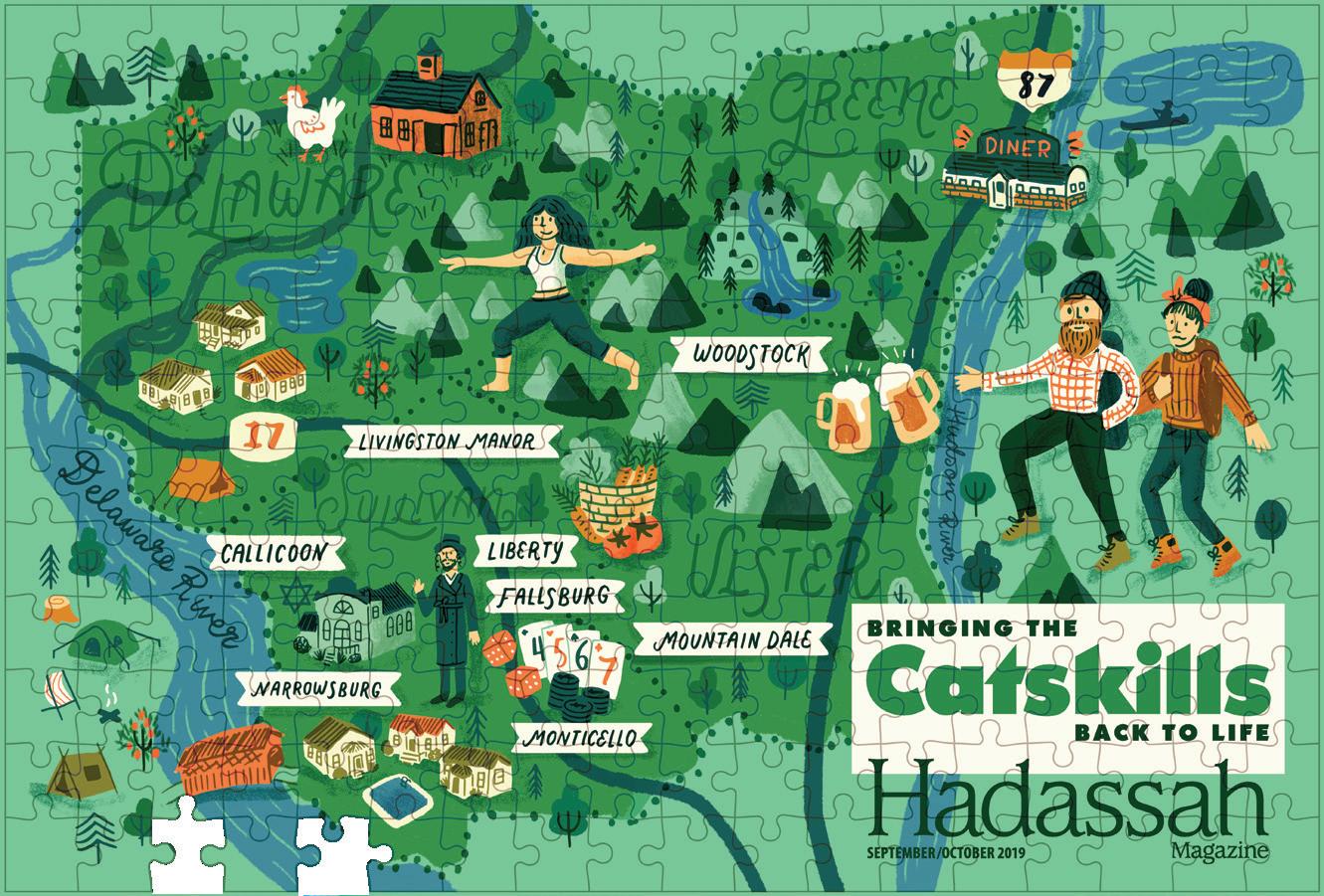

as

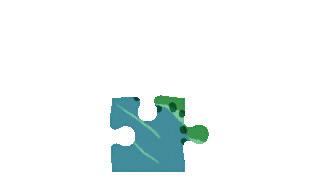
your
tax
you
deductible, you
Yes, I’d like to support the Hadassah Magazine Circle Your Name(s) Address City State Zip Daytime Phone Email Yes, I would like to receive periodic email communications from Hadassah. With my donation of $250 or more, send the jigsaw puzzle to: Please check one: Send to me at the address above OR Send as a gift(s) to: 1. Recipient Name Address City State Zip 2. Recipient Name Address City State Zip I do not wish to receive the jigsaw puzzle in exchange for my donation in which event my entire donation will be tax deductible. Check here if you do not want your donation to be acknowledged in the magazine. Mail this form and check to: (make payable to Hadassah) The Hadassah Magazine Circle 40 Wall Street, New York, NY 10005 To donate by credit card: Online at hadassahmagazine.org/make-a-gift Or call 212-451-6221 Email questions to: magazine@hadassah.org Please accept my donation of: $1,000 $500 $360 $250 $180 $100 $36 Other $ This new Catskills jigsaw puzzle makes two great gifts: a present for someone on your list, plus a gift to benefit your favorite magazine!
Magazine
MAGENV58 With each $250 donation to Hadassah for the Hadassah Magazine Circle, we’ll send you or a gift recipient of your choice one limited edition of this fun jigsaw puzzle. Of course, any contribution is welcome and will help Hadassah continue to produce the magazine you love. NEW PUZZLE! HAPPY
services received in consideration for your gift is tax deductible
a charitable contribution. The fair market value of the puzzle offered in connection with
contribution is $36. This value represents the portion of your gift that is not
deductible. If
want the entire amount of your contribution to be tax
may decline the puzzle by checking the appropriate box on the form.
Hadassah
Circle
A DIFFERENT VIEWPOINT
Normally, I try not to express my conservative views. I have alienated too many friends and relatives. Their loss, for not being able to tolerate a different viewpoint. In my synagogue sisterhood and within Hadassah, I feel that I am looked upon as a pariah. However, when I read two letters to the editor in the September/ October 2022 issue supporting abor tion, I decided that I had to write one of my own. “The other side” must be represented.
I agree that there is a difference between a fetus and a baby. I agree that a woman’s health must be considered, and I agree that a woman should have a choice about her body. But when politicians and candidates
such as Stacey Abrams of Georgia advocate for few if any government restrictions on abortion, we part company. I don’t care that Abrams calls abortion a medical decision and not a political one. At some point it becomes legalized murder.
Miriam
VALIDATING GRIEF
 Edelstein
Edelstein
Nanuet, N.Y.
As a professional grief counselor with years of experience in hospice and private practice as well as the author of Sad Is Not Bad, I want to thank Carol Saline for her article “The Journey to Healing” in the September/October issue. Through interviews with authors of other

support books, Saline offered vali dation and education around grief. While I was a bereavement coordinator in two separate hospices, I created a workshop called “Coping With the High Holy Days After the Death of a Loved One,” which I understand was helpful for those who participated. Hopefully, “The Journey to Healing” has and will continue to support those travel ing their own journey of grief.
Harriet Vogel Palm City, Fla.
TO THE EDITOR
LETTERS
Shown: Ceramic Unicorn Menorah by Inna Olshansky Under the auspices of the Jewish Theological Seminary 5th Ave at 92nd St, NYC 212.423.3333
This Hanukkah, delight family and friends with festive menorahs, holiday tableware, and gifts from the Jewish Museum Shop. Light up the holiday with Shop.TheJewishMuseum.org Every purchase supports the Jewish Museum 8 NOVEMBER/DECEMBER 2022 I I hadassahmagazine.org
Eight Miraculous Nights
CANCER RISK FACTORS
I would like to addend Sandee Brawarsky’s Q&A with writer Helen Epstein, who shares her challeng ing experience with endometrial cancer during the pandemic in the September/October issue. There are some things women can do to prevent and/or reduce the risk of developing endometrial cancer.

Use of oral contraceptives has been shown to reduce the risk by 40 to 70 percent. Excess weight and diabetes are strong risk factors, which can be reduced with appropriate dietary and lifestyle changes. Women who carry the gene for hereditary Lynch syndrome have a 40 to 60 percent risk of developing endome trial and colon cancer; removal of
the uterus after childbearing prevents the former.
Dr. Susan Richman Branford, Conn.

A NOVEL SUGGESTION


I was especially interested in the review of Javier Sinay’s The Murders of Moisés Ville in the July/August 2022 issue because of another book associated with that city in Argentina.


Not long ago, my book club read The Third Daughter by Talia Carner. The novel recounts how wealthy Jewish men in Argentina would travel to Eastern European shtetls, find poor, pretty Jewish maidens, promise money and marriage to the families
WE WANT TO HEAR FROM YOU!
We value your interest in Hadassah Magazine and welcome hearing from you. Please email letters to the editor to letters@ hadassah.org . To read more letters, visit us online at hadassahmagazine.org
and bring them back to Argentina.
I won’t spoil Carner’s story, but the book does tie into the beginnings of Moisés Ville. I suggest you read The Third Daughter first—it makes a great introduction to Sinay’s inves tigation. (Find Hadassah Magazine’s reviews of both books online at hadassahmagazine.org/books.) Gail Dinnerstein Boca Raton, Fla.


AGES Perfect for the holiday season and all year round Ages 2–5 Ages 2–5 Ages 4–8 “A lovely evocation of Shabbat traditions.” Kirkus Reviews Ages 5–8 “Visually stunning.” Publishers Weekly
Kirkus
Available wherever books are sold. Illustrations copyright © 2021 by Hannah Tolson Ages 9–12 Age
up
9 NOVEMBER/DECEMBER 2022 I I hadassahmagazine.org
BOOKS FOR ALL
“Frank and quirky. . . . A layered, utterly readable novel.”
Reviews
10 and
“At once comical and disquieting, the book is an illuminating introduction to a young life in the former Soviet Union.” —Publishers Weekly (starred review)
Israeli Olive Oil Producers Win Accolades
Famed as the startup nation for its technology industry, Israel has likewise struck gold with an endeavor whose roots lie in antiquity: making outstanding olive oil. For the second year in a row, Israeli producers have won gold and silver awards in the New York International Olive Oil Competition, which bills itself as the world’s largest and most prestigious olive oil contest. Despite harsh weather over the last year that reportedly reduced the country’s crop by more than a quarter, six out of nine Israeli
entries took home awards in 2022.
Oil-yielding olives were among the seven species named in Deuteronomy as abounding in the Land of Israel. Olive oil, prized in antiquity for its cu linary value, the light it provided and its ritual use in the Temple’s menorah, remains a key element of the healthful Mediterranean diet—and, of course, in the observance of Hanukkah.
But producing fine olive oil, like wine, requires exacting conditions, according to Hadas Lahav, CEO of Sindyanna of Galilee, a leading Israeli brand.

Factors that contribute to creating exquisite oil include “the timing of the harvest, not too early, not too late;
a very brief lapse between the harvest and the pressing; filtration and proper storage,” said Lahav. Her company won a gold medal at this year’s New York competition for its Coratina monovarietal and has garnered more than 70 prizes in other competitions.
The Arabic name Sindyanna refers to the evergreen oak trees in the Galilee known for their strength. Founded in 1996, the nonprofit aims to empower Israeli Arab women by employing them, thereby helping them contribute to their family’s income through sustain able fair-trade agriculture and thus gain influence in their society, Lahav said. Furthermore, Sindyanna reinvests profits from the sale of the olive oil as well as other
Cemetery in France in 2014 and noticed that there were not enough Stars of David to match the percentage of Jewish soldiers who had fallen in action there.
Schacter and Lamm named their organization after Benjamin Garadetsky, the first soldier at Normandy whose Jewish background they were able to verify and whose grave they rededicated in 2018. According to Lamm, Operation Benjamin has located and replaced 18 incorrect markers in France, Belgium, Luxembourg and the Philippines, with more in the works.

Star-Crossed Soldiers Receive Proper Burial
In 2015, Mariellen Miller asked a cousin who was touring Belgium to visit her step brother’s grave at the Ardennes American Cemetery, a military cemetery for soldiers killed in the European theater in World War II. Lt. Kenneth Robinson, a United States Air Force navigator, died on August 17, 1943, when his plane was shot down on a mission to Germany. When her cousin returned, she told Miller that the grave was marked with a cross.
The 85-year-old Phoenix resident was shocked. Miller contacted several agencies, including the American Battle Monuments Commission, which manages 24 American cem eteries overseas, requesting that the headstone be replaced with a Star of David. Her efforts were unsuccessful—until Operation Benjamin stepped in.
The nonprofit organization locates Jewish soldiers buried in American military cemeteries all over the world under incorrect markers, replacing crosses with Stars of David. Founded by Rabbi Jacob J. Schacter, a senior scholar at Yeshiva University in New York, and Shalom Lamm, a Jerusalem-based retired real estate developer with a master’s degree in military history, the idea for the organization was born after Schacter visited the Normandy American

The incorrect markers could have resulted from the common practice of being buried and reburied multiple times in wartime, said Lamm. Or a soldier, fearing capture by the Germans or antisemitism among his peers, may have opted for a “C” (Catholic) or “P” (Protestant) on his dog tag instead of “H” (Hebrew).
Unlike Miller, some families are not even aware of the mistake until Operation Benjamin reaches out to them. In April, she attended the rededication of her stepbrother’s grave in Ardennes.
“I really feel there’s closure,” said the Hadassah life member. “Kenny has been at rest for 80 years in this beautiful military cemetery surrounded by his comrades. But he cared a lot about Judaism, and I know he would be happy that this is done.” —Rahel Musleah
POST CUT
COURTESY OF OPERATION BENJAMIN
10 NOVEMBER/DECEMBER 2022 I I hadassahmagazine.org
Mariellen Miller (above right, center), whose stepbrother, Lt. Kenneth Robinson (left), was killed in World War II, attended the rededication of his grave at the Ardennes American Cemetery in Belgium.
ALL IMAGES COURTESY OF SINDYANNA OF GALILEE: ITIEL ZION (OPPOSITE PAGE, FAR RIGHT); ADI SEGAL (OPPOSITE PAGE, CENTER)
local goods and crafts such as nuts, honey and handwoven baskets made by the women, into educational programs.
The second goal of Sindyanna is to provide “a safe and friendly space for Arab and Jewish women to meet” and thus promote coexistence, she added, referring to Sindyanna’s factory and visitors center where Arabs and

Setting the Shabbat Table for Guests

New to Jewish practice and alone on Thanksgiving weekend last year, Stephen Cadoux of Miami signed up with OneTable, an organization that connects 20- and 30-something hosts and guests for homestyle Shabbat dinners.
“Everyone was so kind and understanding, and slowed the prayers down so I could par ticipate,” Cadoux, 26, recalls of his “Friendsgiving,” the first of many OneTable Shabbats he has attended.
Cadoux is among the 180,000 American Jews who have celebrat ed Shabbat through the eightyear-old organization, which now sponsors dinners in more than 470 cities. OneTable began as a joint project of the Paul E. Singer
Jews work side-by-side.

All Sindyanna products are kosher and many are available online and in specialty shops in the United States.
This year’s other Israeli winners at the New York olive oil competition included BVS Jerusa lem Olive Oil, Tamir Farm and KeremZait. —Esther Hecht

Foundation and the Steinhardt Foundation for Jewish Life to fos ter community and low-pressure engagement among Jews who often have yet to put down family and communal roots.
Slightly more than half of
OneTable participants are single, a plurality is secular and a quarter identify as non-white—reflecting, said spokeswoman Eva Laporte, its appeal to “people who may not have had access to a formal Jewish community.” She credits the program’s peer-topeer digital platform, which OneTable has customized for Hillel and other Jewish organizations, with giving users “agency over creating the community they want,” including vaccinated-only gatherings.
can qualify for increased credits. Meanwhile, guests pick their desired dinner by searching the platform for nearby offerings. On its website, OneTable likens the process to “Airbnb for Shabbat dinners where hosts create online profiles, post their dinners, and invite guests.”
A OneTable Shabbat spread provides a way for 20and 30-something Jews to connect.
OneTable hosts receive reimburse ment, known as Nourishment Credits, from the organization based on the number of RSVPs for each dinner. New this fall, hosts of some larger-scale dinners
While the average dinner size shrunk from 10 to 7 during the pandemic, and some gatherings are still on Zoom, enrollment has skyrocketed as isolated young adults have sought to mark time through rituals and to celebrate holidays communally. In Cincinnati, for instance, OneTable Field Ambassador Ari Rubin has organized December Shabbats themed around ugly sweaters as well as “A Rugrats Hanukkah.”
But Shabbat remains the core focus.
“That weekly practice elevates through intention,” Laporte observed, “and helps people feel connected to each other and to their own Judaism.”
—Hilary Danailova
According to Sindyanna CEO Hadas Lahav (right), the mission of the leading Israeli olive oil brand is twofold: to promote the economic and educational empowerment of Israeli Arab women as well as to create opportunities for coexistence with Jewish women.
COURTESY OF TIMOTHY SHIVERS/ONETABLE 11 NOVEMBER/DECEMBER 2022 I I hadassahmagazine.org
A Civics Lesson for Jews
The Talmud obligates us to speak out | By Beth Kissileff


Ivisited the white house on July 11, 2022. Before you “ooh” and “aah” and say, “How exciting that must have been,” I will stop you to say: “It was no fun.”
I was there with hundreds of people who have been harmed by gun violence, as I was when a shooter entered the Tree of Life synagogue in Pittsburgh on October 27, 2018, and opened fire, killing 11. The grief in Washington was palpable. The man in line ahead of me and my husband, Rabbi Jonathan Perlman— who was leading services the day of the shooting for our New Light Congregation, which then met inside Tree of Life—lost a son in a school shooting in Saguaro, Calif. Behind us stood a man from the Sandy Hook community in Newtown, Conn. There were families wearing T-shirts bearing images of their dead loved ones, others holding aloft photos of their deceased and sporting tattoos with the names and faces of those they’d lost.
The man next to us, Alexander Schultz, lost his father, Olympic wrestler Dave Schultz, when he was shot by a mentally unbalanced man who had power, wealth and access to guns. That shooting is now memori
alized in the movie Foxcatcher
We had congregated on the White House lawn to watch President Biden sign into law the Bipartisan Safer Communities Act. Among the speak ers at the event were community members from Buffalo, N.Y., and Uvalde, Texas.
Garnell Whitfield Jr. lost his 86-year-old mother, Ruth, when she was among the 10 Black people killed in the Tops supermarket in Buffalo in May 2022. Dr. Roy Guerraro, the only pediatrician in Uvalde, spoke of attempting in vain to reassure the traumatized children of his city. The astounding amount of loss that exists in this country because of gun violence was on full display.
And yet, there was an element of triumph, too. All of us were there because we had spoken out to promote change. Each attendee was present to witness the creation of a blueprint to limit weapons so that there might not be others who have to suffer as we have. This gun safety measure is an unparalleled victory for those who think public places— synagogues, churches and mosques, elementary schools and grocery stores—need to be spaces where citi zens can gather without fear.
Gun violence is not the only issue on which Jews should think about speaking out. Our tradition offers clear guidance on how we, as Jews, should be involved in the society around us. The Talmud in Shabbat 54b states:
Anyone who had the capability to effectively protest the sinful conduct of the members of his household and did not protest, he himself is appre hended for the sins of the members of his household and punished. If he is in a position to protest the sinful conduct of the people of his town, and he fails to do so, he is appre hended for the sins of the people of his town. If he is in a position to protest the sinful conduct of the whole world, and he fails to do so, he is apprehended for the sins of the whole world.
This is a tall order, but the Jewish idea that we are required to speak out against a wrong, if we have the capacity to do so, is a worthwhile lesson.
One of the strongest ways to make our voices heard is to vote, which hopefully most of us did on November 8. If we want to live in a society shaped by our values, whether safety from gun violence, advocating for Israel, saving the environment for future generations or protecting women’s reproductive choices, it is incumbent upon us to speak publicly about those values.
Not all of us will need to make the journey to the White House lawn. Instead, let us be grateful at this season of Thanksgiving that wherever we are, we can express our Jewish values with our voices and our votes.
ANDY POTTS 12 NOVEMBER/DECEMBER 2022 I I hadassahmagazine.org
Beth Kissileff is co-editor of Bound in the Bond of Life: Pittsburgh Writers Reflect on the Tree of Life Tragedy and author of the novel Questioning Return
TOGETHER, WE CAN HELP ISRAEL’S BUILDERS.
NOW AND FOR THE NEXT 74 YEARS.
Over more than 74 years, ordinary men and women devoted their lives to help build a new Jewish state. Many of these pioneers are now aging, frail, impoverished and alone. They need our help.

With more than 7,000 volunteers and 120+ branches throughout Israel, Yad Sarah is dedicated to helping to provide for Israel’s less fortunate — especially those who have sacrificed so much, who have dedicated their lives to build a nation.
We provide home and health care support services that enable people in Israel to remain independent at home and in their own communities despite illness or frailty.
Return the favor of service to Israel's Builders by supporting Yad Sarah today.

866.YAD.SARAH shalom@friendsofyadsarah.org 445 Park Avenue, Suite 1702 New York, NY 10022 Tel 212-223-7758 FriendsOfYadSarah.org @YadSarahFriends @Friends_Of_YadSarah
Eva H. Nurse, Mother, Grandmother, Yad Sarah client
Breakdown in Aisle 5
What is it about women, madness and supermarkets?
 By E. Kinney Zalesne
By E. Kinney Zalesne
My book group recently chose two works whose titles evoke grocery store hysteria: Today a Woman Went Mad in the Supermarket, a collection of short stories by Hilma Wolitzer, and Crying in H Mart, a memoir by Michelle Zauner. In both, a key char acter finds herself in a supermarket aisle white-knuckling her shopping cart and sobbing sloppy, uncontrolla ble tears.
This wasn’t the first time this year I’ve come across such breakdowns. In season two of the television series This Is Us, which my family binged years after its release, postpartum Rebecca goes to pieces in a Giant Eagle when another shopper snags the last yellow onion. And in Mary Beth Keane’s best-selling novel Ask Again, Yes, potential killer Anne succumbs to full-blown psychosis in the deli line at Food King.
What is it about women, madness and supermarkets? Do shopping baskets turn us into basket cases? Or do writers default to supermarkets as the most public spaces women haunt,
so that when we’re actually haunted, it’s a tidy backdrop for our woes? And, I wondered, was there anything in my quintessential American Jewish upbringing that could offer any clues?
I’ve had my own 40-year lovehate relationship with grocery stores. When I was growing up in suburban Philadelphia, my mother, Judy, stopped at our local SuperFresh nearly every afternoon, often with me in tow. She said she liked the freshest produce or that she’d forgotten a key ingredient for dinner or an Enten mann’s coffee cake for a holiday dessert.
Watching her do this day after day triggered in me an adolescent resolve. I vowed that when it was my turn, I’d be one of those organized moms who never shopped more than once a week. I figured that if I could shave down hours spent at the supermarket, I could have kids and a big career, whereas my mother mostly just had kids, after she left her fulltime teaching position.
My plan worked, for a while. I
became a busy corporate executive with four children. I even married a guy who saw my grocery store ambi tion and raised it. As our family grew, he could amass a haul from Whole Foods that would last 10 days. Such heady efficiency! I was living out my teenage vow.
Then one day, a colleague who’d taken a break from her own big career mentioned that every after noon, she stopped at the Giant with her teenage daughter on the way home from school. She laughed out loud that her daughter hadn’t yet figured out that she did this only to get her to talk about her day. Appar ently, the girl clammed up in the car, but became downright chatty amid the Cheetos and Cheerios.
I was stunned. Had I opened up to my mother as we strolled through those aisles all those years ago, even as I scorned the whole enterprise? More importantly, I wondered if my calculus had been wrong all along. Perhaps it was my mom, and not I, who’d had the proper regard for supermarkets.
Gingerly, I returned to the Giant. I tried to get my kids, who were all teenagers by then, to accompany me, but having probably absorbed my disdain, they usually passed. So on my way home from the office, I allowed myself to dawdle in the aisles and even developed a little swagger with my cart, steering purposefully like I was hunting on the savannah, plucking new foodstuffs to delight the family.
Then—in an even bigger snub to efficiency—I started driving 40 minutes each way to a kosher supermarket because my kids, who attended a Jewish day school, which I had not, started requesting kosher meat. The boxes of Lieber’s Strawberry Jel and cans of Streit’s
MICHELLE THOMPSON ESSAY
14 NOVEMBER/DECEMBER 2022 I I hadassahmagazine.org
Mushroom & Barley soup made me feel like I’d teleported back to the kitchen of my grandmother Ruth. Had I likewise marginalized her by my lack of interest in food shopping and never learning the difference between a rib roast and a London broil?
And that’s when it dawned on me. The reason writers today have their characters melt down in supermarkets is because lots of women are working out their mother-related complexities amid the meat and potatoes. Michelle Zauner was mourning her mother (and regretting her teenage rebellions) when she broke down in H Mart. Rebecca on This Is Us was grieving a stillborn triplet when she came undone about the onion.
While my career-versus-family conflict wasn’t nearly so wrenching, it was mother-centered just the same. My mother became a symbol of the choice of motherhood instead of career, but I’d wanted both. In my head, the supermarket was the locus of that painful choice, the place that made me feel small for either not being professional enough, or not sufficiently nurturing.
Writers who give their characters these very Publix breakdowns know this supermarket superpower. It is the liminal space in which nourishment is potential but not yet real, where the air is thick with memory, identity and fearsome female choices about whether, what and how to love.
So if you see a woman weeping at Wegmans, give her some space. She might be missing a mother, a child or an as-yet-unattained part of herself. Attention, shoppers.
E. Kinney Zalesne is a former Microsoft executive and the co-author of the best-selling book Microtrends: The Small Forces Behind Tomorrow’s Big Changes
No EMS organization in Israel arrives faster to a medical emergency than Magen David Adom. But when traffic prevents an MDA ambulance from being first at the scene, it’s usually an MDA Medicycle that is. That’s why, between our ambulances and Medicycles, MDA is first to arrive to medical emergencies 91% of the time.

Make an impact in Israel and save a life. Support Magen David Adom.
afmda.org
When our ambulances can’t get there first to begin lifesaving treatment, our Medicycles can.
15 NOVEMBER/DECEMBER 2022 I I hadassahmagazine.org
Finding Refuge in Israel
Ukrainians—and Russians—escape the war, uncertain of their future
By Larry Luxner
Anna polisuchenko, a university professor and broadcast journalist at STB, Ukraine’s largest television network, had been hearing talk of an impending Russian military strike against her country for weeks. But she had dismissed the rumors as little more than diplomatic posturing.
That suddenly changed on February 24, 2022, as Polisuchenko was getting ready for work at her Kyiv TV station. She opened the Telegram app on her phone, and it lit up with frantic messages from her daughter, Angelina, who was in Israel on a study program.
“Mom! Mom! Mom! Answer me. You are being bombed!” texted the worried 17-year-old. The war had begun. At 4:50 a.m. the next morning, the deafening roar of an
explosion startled Polisuchenko; a rocket had obliterated the building across the street. Grabbing her 76-year-old mother and some snacks, she woke up two blind, elderly neighbors and guided them all down 12 flights of stairs in the darkness to the underground parking lot of a nearby supermarket, where 1,000 people had already taken refuge.
After shivering for a week in that vast subterranean shelter, Polisuchenko managed to board a train for an 11-hour trip to the relative safety of Lviv, in western Ukraine. She had begged her mother to come with her, but she had refused.
From Lviv, she took a bus over the border to Poland, and in midMarch—following the approval of her documents by the Israeli Consulate in Warsaw—Polisuchenko flew to the Jewish state and received citi-

zenship upon arrival at Ben Gurion Airport.
For the next five months, she spent five hours a day, five days a week in an intensive Hebrew course at Haifa’s Ulpan Etzion Carmel. Half of her 20 classmates were fellow Ukrainians. Today, her daughter is studying at the Hebrew University in Jerusalem while Polisuchenko gives lectures remotely to her students at Kyiv National University of Culture and Arts.
She recently signed a contract with the municipality of Haifa to shoot informational and educational videos and is looking for a full-time job. So far, the work is “very minimal,” she said, “but gradually, everything will get better.”
Also in late February, Reuven Stamov, rabbi of five Masorti, or Conservative, congregations in Ukraine—in Kyiv, Odessa, Kharkiv,
HERNANDEZ JOSE MARIA/ALAMY
16 NOVEMBER/DECEMBER 2022 II hadassahmagazine.org
ulpan in Haifa.
Chernivtsi and Dnipro—was preparing to host a Jewish educational seminar in his native Kharkiv.
But after hearing reports of Russian troops massing at the Ukrainian border—only 20 miles to the north—he moved the event to Chernivtsi, a city in southwestern Ukraine, far from any potential Kremlin threat.
“My husband understood that war was very close,” said the rabbi’s wife, Michal, recounting from the couple’s current home in Ashdod how she and her husband and their three daughters had packed for a threeday seminar at Chernivtsi’s Magnat Cinema Hotel. They never imagined, she said, that cluster bombs and missiles would soon devastate their beloved city of Kharkiv.
On March 7, the Stamovs led some 100 Ukrainian Jews who had assem
bled in Chernivtsi across the border to Romania for resettlement in Germany and Israel; most of those who fled to Germany have established resi dence in Berlin.
Since then, the rabbi, one of few in Ukraine affiliated with the Conservative movement, has held monthly get-togethers for his congregants in Israel. He also holds Kabbalat Shabbat services every Friday via Zoom with the 40 or so families who remain in Ukraine.
“Very few of our people are left there,” said the rabbi, who briefly returned to Ukraine to conduct Rosh Hashanah and Yom Kippur services in Kyiv.
“We all have post-trauma syndrome,” Michal Stamov said. “We really miss the communal life we had in Ukraine. And when we hear about the horrible things that have happened in places like Mariupol, we feel our world is broken.”
Polisuchenko and the Stamovs are among more than 40,000 citizens of Ukraine and Russia—and, to a lesser extent, Belarus—who have fled to Israel since Russian President Vladimir Putin’s invasion of his country’s southern neighbor, sparking bloodshed on a scale Europe hasn’t seen since World War II.
Many of the newcomers, whether they arrived as immigrants under the Law of Return or with tourist visas taking temporary refuge, are traumatized by their experiences. Some came to Israel because they already had relatives or friends there; others were seeking to take advantage of an unknown but safe refuge. A number of the Ukrainians interviewed for this article were reluctant to talk about their current lives in Israel or—given the uncertainty of the war’s trajectory—their plans for the future.

Olga Kartashova has heard dozens of these tragic stories first-hand.
The founder of Haifa’s all-volunteer Refugee Assistance Center, Kartashova started helping new arrivals fleeing the war soon after they began landing in Israel.
“Only a few weeks into the war, we saw that more and more people were showing up here in Haifa, but they weren’t really receiving much support and didn’t know where to go, especially those who arrived as so-called tourists,” Kartashova said, as she showed this reporter around

NATI SHOHAT/FLASH90
(LEFT); LARRY LUXNER
Activism, Aliyah, Absorption In March, Israelis gathered in Habima Square in Tel Aviv to protest Russia’s invasion of Ukraine (left). That same month, new immigrants began landing at Ben Gurion Airport, including this family on a flight sponsored by the International Fellowship of Christians and Jews (above); Anna Polisuchenko at her
17 NOVEMBER/DECEMBER 2022 II hadassahmagazine.org
Light of a New Day Rabbi Reuven
before the war, lights a havdalah candle and plays guitar at a Jewish festival in Lviv, Ukraine (left); Olga Kartashova sorts through donations of food, clothing and other items at the Refugee Assistance Center in Haifa.


the center’s two-story headquar ters on Derech Ha’atzmaut, one of the busiest boulevards in Haifa. The city has become home to one of the largest concentrations of Russian-speaking newcomers in Israel.
Housed in a building that belongs to the Carmelite Order of the Cath olic Church, the center looks more like a thrift store than a refugee assis tance agency. Powdered milk, baby formula, jeans, T-shirts, winter coats, shoes, electrical appliances, kitchen utensils, toys, books, puzzles and other donated items cram its floor-toceiling shelves.
Boxes are labeled in Hebrew and Russian, while a huge blue-and-yel low Ukrainian flag hanging from a wall opposite Kartashova’s desk leaves no doubt as to the lean ings of those who staff this place, even though Kartashova herself is half-Russian, half-Ukrainian. Born and raised in Kaliningrad, on Russia’s Baltic coast, she is a doctoral candi date in Holocaust studies at New York University. She began her stud ies in the United States and continued them remotely from Israel once the Covid-19 pandemic began.
These days, she and 40 or so fellow Russian and Ukrainian volun teers as well as one Arab spend their time sorting through donations of food, clothing and medicines, decid ing how best to disseminate them. Open three afternoons a week, the center also provides legal consulting, job-placement assistance, family picnics, city tours and workshops at no cost.
“I’m sure we’re making a differ ence,” Kartashova said. “What we do is unique, in that we offer not only food and clothing but also informa tion and moral support. Not many organizations are providing the kind of systematic help that we do without any sort of institutional backing.”
Most of the more than 2,500 indi viduals who have used the center’s services are women, children and the elderly. Ukrainian men of military age are still unable to leave the country; the only exceptions are fathers with three or more children, or cases where a family member is disabled and must be cared for, or if the man claims citizenship of another country.
Besides haifa, the newest arrivals are settling mainly in cities with existing Russianspeaking communities, such as Netanya, Bat Yam, Ashkelon, Jerusalem and Beersheva, while they tend to avoid Tel Aviv because of its
extremely high cost of living. Most Ukrainians speak Russian.
Perhaps ironically, while Russia’s invasion of Ukraine led to a sharp increase in immigration to Israel from the country under attack, there has been an even greater surge in aliyah from Russia. Global sanctions have devastated the Russian economy and made daily life hard for average citi zens, regardless of their views about Putin or the war.
According to the Jewish Agency for Israel, 23,691 Russians settled in Israel during the first eight months of 2022, a 420 percent increase over the same period last year. In addition, 13,321 Ukrainians made aliyah between January and August 2022, a 555 percent jump compared to the same period in 2021.
During the same period, 1,320 immigrants arrived from Belarus, whose authoritarian president, Alex ander Lukashenko, is assisting Russia with its war efforts.
All told, immigrants from ex-So viet republics comprised 84 percent of all new arrivals to the Jewish state during the first eight months of 2022. But as Ukraine’s military takes back previously seized territory and conditions continue to deteriorate in Russia, aliyah figures could change dramatically.
Russians of all backgrounds began fleeing the country after Putin
COURTESY OF REUVEN STAMOV (LEFT);
LARRY LUXNER
18 NOVEMBER/DECEMBER 2022 I I hadassahmagazine.org
Stamov,
announced a mandatory conscription in late September.
In response to that development, in early October, the Israeli govern ment approved an emergency plan allocating the equivalent of $25 million for housing, job assistance, health care and education to handle an expected surge of immigration from Russia, home to an estimated 165,000 Jews.
“The State of Israel is a safe haven for every Jew in the world, and their migration to Israel, no matter the cause, lifts the spirit,” Immigration and Integration Minister Pnina Tama no-Shata said in a statement. Her ministry, she said, “will ensure that all Russian immigrants arriving in Israel these days under challenging circum stances will receive the holistic care they need to fully integrate into the Israeli society as quickly as possible.”
Under the plan, developed by Tamano-Shata and Finance Minister Avigdor Liberman, until an indi vidual’s eligibility under the Law of Return is clarified, he or she will receive the same rights all immigrants are given, including an absorption package and living allowance. The 1953 law allows anyone with at least one Jewish grandparent to immigrate to Israel, along with his or her non-Jewish spouse.
Israeli policy toward Ukrainians fleeing the bloodshed in their country has evolved since the war began. In early March, Interior Minister Ayelet Shaked capped the number of tempo rary visas for new Ukrainian refugees who didn’t qualify under the Law of Return at 5,000. The move sparked bitter criticism from the Ukrainian government and was eventually over turned by Israel’s Supreme Court.
Before the war, as many as 200,000 Jews and people of Jewish heritage lived in Ukraine, according
to Michael Brodsky, Israel’s ambas sador in Kyiv. Today, Ukrainians constitute the largest group of olim in Israel, combining those who have fled since February along with the many Ukrainian Jews who came before them, mostly during the massive Soviet emigration of the early 1990s.
“There’s definitely a strong inter est from Jews in Ukraine to make aliyah,” the Russian-born diplomat said by phone from Kyiv. “Once the war is over, the number will jump” as the men will be able to leave Ukraine.
Yet just because a new immigrant is eligible for aliyah under the Law of Return doesn’t mean the Israeli authorities will recognize him or her as Jewish. In fact, the vast majority— exactly how many isn’t known—of recent arrivals from Ukraine and Russia are not considered Jews in Israel because they weren’t born to Jewish mothers.
Mariya makarova lives in Netanya with her two children, 12-year-old Vladislav and 10-year-old Barbara. Originally from Luhansk in eastern Ukraine, Makarova—an econo mist who had worked as a sales analyst for a private company—and her husband, Oleg, a materials engineer, fled to Kharkiv in 2014 after Russian

troops invaded the Donbas region.
“We were happy in Kharkiv. We had nice jobs,” said Makarova, proudly wearing a yellow summer dress with traditional embroidery made by Nenka, a Ukrainian dress company. “But when the war started, we were very afraid for our children. Every day, bombs were falling. We arrived in Lviv, and we decided I would come here with our children.”
When they arrived in Israel as olim on March 21, Makarova and her kids spent their first two weeks at Jeru salem’s Prima Park Hotel; their stay was paid for by the Jewish Agency. Her kids are so traumatized by their experiences, she said, that she can’t leave them alone at night, even briefly, due to recurring nightmares.
“I’m studying Hebrew now because it’s necessary, and I’m look ing for a job,” she said.
As a new immigrant, Makarova received a monthly government subsidy of about $1,480 for six months, plus a monthly rent credit of about $860, which will continue for a year. While she’s at ulpan, her children attend the local school, participate in athletics programs and—like kids everywhere—play games on their phones.
She speaks to her husband, now in the western Ukrainian city of Rivne,
LARRY LUXNER
19 NOVEMBER/DECEMBER 2022 I I hadassahmagazine.org
From Kharkiv to Netanya Mariya Makarova is learning Hebrew and looking for a job while her children, 12-year-old Vladislav and 10-year-old Barbara, attend the local school.
every day using Telegram or Viber. For the moment, she said, he is safe and has not been drafted into the military.
Yet even at her ulpan in Netanya, echoes of the war are never far away. More than once, Makarova has overheard her pro-Putin, Russian Jewish classmates ridicule Ukrainian President Volodymyr Zelensky—who is Jewish—demanding to know why Zelensky hadn’t been killed yet.
It’s unclear how widespread such attitudes are—or the degree to which friction exists between pro-Putin Russians and Ukrainians. According to one recent poll cited by Israel’s i24 News channel—conducted in late August among 4,712 Israelis just as
the war was nearing the six-month mark—37 percent of newly arrived Russian immigrants see Russia as “an enemy of Israel,” compared to 61 percent of new Ukrainian arrivals. Likewise, 58 percent of Russian immigrants have a negative opinion of Russia itself, compared to 76 percent of Ukrainians.
Of the overall Israeli population, 49 percent of those surveyed called Russia an “enemy of Israel,” while 42 percent consider Russia “neither a friend nor an enemy” and only 6 percent view Russia as “a friend of Israel.”
Kartashova, whose Haifa nonprofit helps all newcomers from the former Soviet Union, said hostil ities between Ukrainian and Russian
Jews in Israel are relatively rare.
“I haven’t heard about any such encounters. There was a pro-Russian rally a few months ago, but the police made sure that no one got in fights with pro-Ukrainians,” she said. But, she added, “there are lots of nasty comments on Facebook [against Ukraine and specifically Zelensky] by Russian-speaking Israelis”—many of whom view Putin as the best protec tor of Jews that Russia ever had.
While many of the new arrivals say they have no idea if they intend to stay in Israel, Valeriia Kholodova has no doubt that she will.
Born and raised in Donetsk, also in the eastern Donbas region, she served as director of the local Hillel
At This Youth Village, ‘We Are All One Family’
The pastoral setting of the Meir Shfeyah Youth Aliyah Village— with its bucolic orchards, dairy, chicken farm and organic winery— is a far cry from the bombed-out apartment buildings and mis sile-ravaged streets of Kyiv, Kharkiv, Mariupol and other Ukrainian cities devastated by the war with Russia.
It’s hard to imagine a more ideal setting for the 29 Ukrainian Jewish teens now living at this Ha
dassah-supported boarding school just north of Zichron Ya’akov in northern Israel.
One of the students is 15-yearold David Kofman. An aspiring music producer, he composes tunes in his spare time using a computer and headphones.
“All my life, it’s been my dream to live in Israel,” said Kofman, who comes from the Danube River port city of Izmail. “It’s very cool here. I
like this place very much.”
Andrey Palienko, 16, is also a musician. He arrived from Krivoy Rog in eastern Ukraine with his mother, who is already consid ering returning even though he wants to stay.
“I don’t want to leave,” he said. “I have really good friends here who help me.”
Both teens belong to the vil lage’s mandolin orchestra. Like the other Ukrainians in their group, they had applied for the Na’ale program prior to the war, which began in February, and were scheduled to arrive in September 2022. The program, subsidized by the Jewish Agency for Israel and Israel’s Ministry of Education, enables Jewish teenagers from the Diaspora to complete their high school education in Israel for free.

“But because of the emergen cy, the Ukrainian students were accepted immediately, without
vetting, and arrived during March and April,” said Lauren Stern Kedem, a longtime English teach er and later coordinator of Meir Shfeyah’s English department.
Meir Shfeyah, established by Hadassah nearly 100 years ago and later used as a safe haven for children escaping Nazi Germany, was the first youth village in Israel to house young new arrivals from Ukraine, according to Yoram Panias, the village director. Meanwhile, nearly 60 Ukrainian athletes were resettled at Hadassah Neurim, a nearby Youth Aliyah village on Israel’s Mediterranean coast.
“What is so special about Shfeyah is the huge diversity of the kids we serve,” Kedem said. “I’m always inspired by these kids because of their willingness to trust us to take care of them.”
At Meir Shfeyah, the new Ukrainian teens mingle with Israeli students—Amharic-speaking
COURTESY OF LAUREN STERN KEDEM
20 NOVEMBER/DECEMBER 2022 I I hadassahmagazine.org
Meir Shfeyah’s mandolin orchestra includes new Ukrainian student Dovid Kofman, far left, standing next to music director Boris Feldman.
until she was forced to relocate to Kyiv after the Russians militarily occupied her city in 2014.
Eight years later, when bombs and rockets once again threatened to upend her life, Kholodova, who is also a ballet teacher and student of Jewish culture, decided once again to move—this time to Israel.
Now a resident of Bat Yam—a coastal city south of Tel Aviv where signs in Russian have long been almost as common as those in Hebrew—Kholodova still works for Hillel, but now remotely, as a program director for Ukraine, Moldova, Georgia, Belarus and Azerbaijan. In these countries, Hillel’s programming for young people is
community-based rather than located at a particular university.
“Two months before the war, I decided to convert to Judaism. I had thought about it for a long time— more than three years—because all my life I had worked and lived in the Jewish world,” said Kholodova, who is now pursuing her dream in Israel. “A lot of my friends are Jewish, so for me it’s a natural process.”
There are reports of some Ukrainians—as many as half—who had found refuge in Israel returning to Ukraine. Yevgeniy Shyder is among those who have made that return trip before, but now he’s back in Israel.
Shyder, an IT project manager for an outsourcing company, and his wife, Zhenya, spent three years in Ashdod and Petah Tikvah, from 2015 to 2018. But Israel’s high cost of living combined with the difficulties they had learning Hebrew and find ing jobs that paid well led them to return to Ukraine.
Along with their two children, 6-year-old Shmuel and 2-year-old Ida, the Shyders lived in an apartment in Kyiv, very close to the United States Embassy as well as a Ukrainian army base that later turned out to be a target for advancing Russian forces.
Shyder painted a scene of desper ation one recent afternoon at the family’s apartment in Netanya’s
Institute of Technology in Haifa. Podebriy says her mother wants to return to Ukraine, but she’s determined to stay: “I won’t even think about going back because the war is still going on.”
the adjustment process hasn’t been easy for the teens.
Ethiopians, Arabic-speaking Bed ouins and Spanish speakers from Argentina, Chile and Uruguay. In all, the school serves 640 students from 7th to 12th grade, 325 of whom live at the village. About half the residential student body is from the former Soviet Union.
Boris Feldman, the school’s Rus sian-speaking music director since 1991, said some of his Ukrainian students don’t have an extensive music background because they couldn’t afford instruments or lessons—but others have studied music for seven or eight years.
“In some cases, their parents had to sell their instruments in order to pay for the kids to come here,” said Feldman, referring to some travel and other expenses the students may be responsible for. “When they arrived, we bought cellos and violins so they could continue, because music is such an important part of their lives.”
Fifteen-year-old Sonia Podebriy was born in Uzhhorod, a small town near Lviv in western Ukraine. Her brother, Igor, has lived in Israel for eight years and studies robotics at the Technion-Israel
Given the trauma of leaving everything they know, “these kids need a lot of warmth and love— not just financial and physical support, but also emotional sup port,” said Tatiana Kharlov, who has been teaching mathematics at Meir Shfeyah since late May.

Kharlov can relate. Originally from the Ukrainian city of Kher son, which is now under Russian occupation, she first left for Israel in 2008, but after seven years in the country, she moved to Kyiv. When the war broke out, she and her husband, Alexander, whose Israeli citizenship enabled him to leave, loaded their two children and four dogs into the family car and drove to Poland, eventually making their way to Israel.
Dikla Morgan, Meir Shfeyah’s academic adviser, also noted that
“They have to undergo a process of acclimation to become students and just be able to sit in class and regain their childhood and happiness,” she said. “There’s also a linguistic issue. Everybody in Israel speaks Hebrew. That’s a huge shift for them, plus they’re without their families. And they come from a war zone and don’t know if they’re ever going home again.”
Given occasional tensions be tween Russian and Ukrainian Jews in Israel amid the war, Morgan said her staff has spoken to the Russian youth at Meir Shfeyah, urging them to put politics aside and have compassion for their Ukrainian classmates.
Though the school does not attempt to erase any of their students’ previous identities or cultures, “one of our main goals here is to create an Israeli identity that all students can adapt and relate to,” Morgan said. “Here, we are all one family.” — Larry Luxner
LARRY LUXNER 21 NOVEMBER/DECEMBER 2022 I I hadassahmagazine.org
Ukrainian teens at the youth village learn the letters of the ‘alef-bet.’
Kiryat Nordau district, as his wife served coffee, dates and warm straw berry cake.
“The first day of the war, I woke up, turned on the TV and saw that Russian forces were only 700 meters from our apartment building,” Shyder recalled as he pet the family dog, a white Scottish terrier named Milka. “The teacher texted us saying
not to bring the kids to kindergarten.
I saw the traffic jams going out of Kyiv and understood that I couldn’t take my family. I had no car.”


Trains were out of the question, too, especially with children, so Shyder sent his family to a nearby bomb shelter while he figured out what to do. As it turned out, his IT company had hired buses for
employees and their immediate family members to travel to Lviv. He immediately reserved places on the first bus, which left four hours later.


At Ukraine’s border with Poland, Shyder faced a tense moment. As a Ukrainian citizen between the ages of 18 and 60, he wouldn’t be allowed to leave the country. So Shyder showed his Israeli passport and was immediately waved through. Within a few days, the family arrived at Ben Gurion Airport and began their new lives in the Jewish state.
“I felt guilty about that, but as one of my friends told me, ‘Your job is your family. That’s the most important thing,’ ” he said. “And from another point of view, I continue working and donating to
Yam
A Second Homecoming Yevgeniy and Zhenya Shyder, here with their daughter at their new home in Netanya, have returned to Israel; Valeriia Kholodova on the promenade in
Bat
From simple to intricate designs, California Closets systems are custom designed specifically for you and the way you live. GREENVALE NEW YORK CITY WESTCHESTER NEW CITY 844.295.1402 californiaclosets.com ©2022 California Closet Company, Inc. All rights reserved. Franchises independently owned and operated. We’re hiring sales & design consultants. To apply email cc.jobs@caliclosets.com or scan QR code NY146_Hadassah_Brooks1_6.8x4.7_0822.indd 1 8/2/22 2:24 PM 22 NOVEMBER/DECEMBER 2022 I I hadassahmagazine.org
LARRY LUXNER (LEFT); JULIA SAVINA
the Ukrainian army. I’m a project engineer with an American company, and since May, I’ve hired more than 20 people in Ukraine, so this is a sort of compensation.”
This time around, he said, they are planning to stay. “We were happier in Kyiv and the level of education in Ukraine was higher,” Shyder said of his home city. “But our children are safe here. They’re learning Hebrew, so it’s O.K.”

For many of these new immigrants, getting out of Ukraine is only part of the ordeal.
A bigger one is getting a decent-paying job in Israel, one of the world’s most expensive places to live.
That’s where Gvahim comes in. A nonprofit organization based in Ra’anana, just north of Tel Aviv, Gvahim has been helping new immigrants find jobs for 16 years— particularly in the high-tech sector, for which olim from the former Soviet Union are especially wellsuited, given their traditionally high technological literacy and familiarity with computer programming and software development. The charity boasts more than 6,000 alumni, a network of 1,000-plus Israeli compa nies, 500-plus mentors and a 90 percent job placement success rate.

Juan Taifeld, Gvahim’s Mexi can-born CEO, said that soon after the war began, the nonprofit imme diately went into overdrive, hiring two Russian-speaking recruiters to identify qualified applicants—all of whom are fluent in Russian—and field phone calls from employers will ing to hire these latest arrivals. The immediate goal: secure jobs for 300 olim, helping to integrate them into Israeli society.

“For the first time, we launched a pilot program for Russian-speak
ing olim,” he said. “The tools we’re giving them are essentially the soft skills: how to find a proper job, how to write a CV, how to do a LinkedIn profile. In Israel, it’s very important to know how to do a pitch. We also offer personalized human-resource consultations in Russian.”
Taifeld waived the $180 fee that participants typically pay for Gvahim’s programs. “Those people need our help,” he said, adding that Gvahim has also begun an online ulpan for Russian-speaking immi grants to learn “business” English. “Lots of organizations will be here for the short term, but I want to be here long after nobody’s talking about the war anymore.”
That day cannot come soon
enough for Makarova, the economist now living in Netanya, who recently signed up with Gvahim and is look ing for a job.
“First, I want the war to end, and I’ll think about this later,” she said when asked if she’d like to remain in Israel permanently. “It’s a difficult question. I’m afraid for my kids. If we didn’t have children, I would have stayed in Ukraine with my husband and not come to Israel. I’m Ukrainian and I can live anywhere. But I love my kids very much, and their future is my future.”
Larry Luxner , a Tel Aviv-based freelance journalist, is news editor of The Washington Diplomat . He also writes for the Jewish Telegraphic Agency , Times of Israel and Rare Disease Advisor
23 NOVEMBER/DECEMBER 2022 I I hadassahmagazine.org
Jewish Matchmaking?
There’s an App for That

Searching for my King David online
By Arielle Kaplan
The talmud says that matchmaking is as difficult for God as the parting of the Red Sea. I beg to differ. Finding my bashert is undoubtedly harder. The reverberating tick from my biological clock is a relentless reminder that, at the ripe old age of 28, I have yet to be fruitful and multiply.
This greatly concerns my mother, who at my age was pregnant with her second child. She desperately wants grandchildren, but not at the cost of a schmuck for a son-in-law.
“Don’t go out with people who
have substance abuse problems. Don’t go out with people who show you that they are selfish and only talk about themselves,” my mother, Navah, has warned me. “Don’t go out with narcissists, those are the worst people.”
Oy, there goes the majority of the New York City dating pool, I thought. As I tuned out my mother’s unhelpful advice, I couldn’t help but wonder: Why did I elect to go on my Birthright Israel trip with my then-boyfriend when I could have met so many eligible Zionist Jews as a single traveler? What’s the point of
having three older brothers if they won’t set me up with their friends? Why aren’t Jewish leaders doing more to find me a boyfriend—I mean, ensure Jewish continuity?
Turns out, I had been too busy crying over undatable duds on the Hinge app to notice the shidduch renaissance that started during the Covid-19 pandemic. From generation to generation, Jews have relied on the tradition of matchmaking to adapt to the ever-changing landscape of dating. Now, two of the newest and buzziest post-social distancing dating apps are going beyond the


SHUTTERSTOCK
24 NOVEMBER/DECEMBER 2022 II hadassahmagazine.org
algorithms of established platforms like Jdate and JSwipe to incorporate a matchmaker component as well as in-person gatherings.
These innovations are coming as matchmakers also are making their mark in popular culture, from a shadchan plotline on Amazon’s The Marvelous Mrs. Maisel to the upcoming Jewish Matchmaking reality show on Netflix.
With raunchy stunts like launching a Pickle Vibrator, cleverly dubbed the “dill-do,” Lox Club is undoubtedly the hottest Jewish dating app for 20- and 30-something Jews. Self-described as the digital place for Jews with “ridiculously high standards,” Lox Club is an exclusive members-only group where singles must apply to join. But one need not be Jewish to join. Indeed, as stated in their online FAQs, “Lox Club is like a deli; it’s culturally Jewish, but you don’t have to be Jewish to enjoy it.”
In Lox Club’s early days in December 2020, CEO Austin Kevitch gifted me a free membership to the app, which costs $36 for three months. (At the time, I was working as an influencer on Instagram.) Its success rides on a sleek user experience, a matchmaker whom singles can text within the app and a heavy dose of nostalgia. Upon entering the app, users are welcomed into a digital speakeasy with a fictional tale based on Kevitch’s late grandparents.
Above all, Lox Club is known for hosting rowdy in-person events in New York City, Miami, Austin and Los Angeles.

From comedy shows and fitness classes to live podcast events and happy hour mixers, the app for elite Jews has gatherings for everyone.
That is, unless you’re intimidated by glitzy socialites who look like they’d bully you in high school. Those vain and vapid mean girls who rejected me from the “cool” Jewish sorority at Indiana University, relegating me to Sigma Delta Tau, snidely nicknamed “Slutty Dumpy Trolls.” But, I figured, I joined Lox Club to meet eligible guys, not necessarily befriend women.
As for the men, many of the ones I met took great pride in likening themselves to Curb Your Enthusi asm’s Larry David, only with better fashion sense. I’ll never understand the draw of a materialistic nebbish momma’s boy. Where’s the sex appeal? Give me a hunk of a mensch like Mel Brooks or Harpo Marx; heck, I’ll even take Zero Mostel!
Over the course of several months, and following a handful of unremarkable first dates, I did have a brief fling with a Lox Club suitor. He was handsome and witty and paid for our Friday night dates at Shalom Japan in the Williamsburg section of Brooklyn. Despite his weed dependency, my mom would have approved of his generosity—he spoiled me with trinkets and chocolates—but the relationship was short lived. I broke it off when I learned he was actively anti-Zionist.
DIGITAL DATING 101
Where to search for your bashert online if you’re a 20- or 30-something.
MeetJew operates via Facebook groups | meetjewonline.com
Lox Club seeks to be the coolest destination for singles | loxclubapp.com

Hinge, Bumble and OkCupid offer Jewish filters | hinge.co, bumble.com and okcupid.com
SawYouAtSinai has paired over 2,000 couples, many of them Orthodox sawyouatsinai.com
JSwipe is the No. 1 most downloaded Jewish app | jswipeapp.com
Jdate claims to be responsible for 52 percent of Jewish marriages that began online | jdate.com
FilterOff is the world’s first video speed-dating app | getfilteroff.com
CoronaCrush took off for Jewish singles during the pandemic coronacrush.com
Yente Over the Rainbow matches Jewish queer singles yenteovertherainbow.com
COURTESY OF LOX CLUB
Nostalgia Paired With 'Ridiculously High Standards' A Lox Club in-person event held during New York Fashion Week in September brought together singles looking for love.
25 NOVEMBER/DECEMBER 2022 II hadassahmagazine.org
I, a cultural Jew and Zioness who was increasingly feeling like a herring out of water, exclusively date Zionists.
If searching for Mr. Right on an app that prioritizes aesthetics over Jewish values isn’t your thing, allow me to introduce you to MeetJew, a

A Powerful Love Story With a Purpose
"THE CHOICE is about the choices Jews make and the rules

break for reasons of consideration, conscience, logic, and love. Buy this book for the endearing romance at its core and get a feminist brief for women's inclusion in sacred space and communal life, plus twenty brilliant Talmud lessons. A surfeit of riches."
Letty Cottin Pogrebin, author of twelve books including Debora, Golda, and Me, and Shanda
Anton has written a transformative novel that takes characters inspired by Chaim Potok and ages them into young adults in Brooklyn in the 1950s.

www.thechoicenovel.com In print and ebook ISBN 978-0-9763050-3-3

In lieu of an app, the platform operates on Facebook through a handful of groups catering to singles of different cohorts: “MeetJew University Dating” (ages 18 to 26); “MeetJew Post-Grad Dating” (23 to 34); and “MeetJew Professional Dating” (30 and older). Boasting around 60,000 global members, singles are encouraged to post flattering photos with colorful about me blurbs, inviting interested parties to “slide into their DMs” (slang for reaching out).

Touting seven marriages and 36 engagements since launching in 2020, MeetJew co-founders Aaron Raimi and Daniel Ebrahimi are masterful shadchanim. As their Facebook groups exploded, the Los Angeles-based duo drafted an in-depth “MeetJew IQ” question naire with prompts like: “Do you consider yourself a Zionist?”; “Do you want to make aliyah?”; “Are you looking for a serious relation ship? Yes, no, if the vibe is right, not sure?”
They also enlisted the help of coder Justin Cohen, who met his fiancée through MeetJew, to devise an algorithm that matches participants based on their answers. Now, each week on “Match Monday,” Raimi and Ebrahimi personally email members from the various groups with two to three matches. Singles are encouraged to reach out to their possible basherts.
According to Ebrahimi, the criteria that single Jews seem most adamant about is location, location, location. Long distance is a deal breaker because “Jews don’t like difficulties or hardships,” Ebrahimi asserts, only partly in jest. Above all, he adds,
COURTESY OF MEETJEW
A Masterful 'Shadchan' MeetJew co-founder Aaron Raimi (center) joins the crowd at a Tu B'Av-themed party held in August at The Dean in Manhattan.
we
26 NOVEMBER/DECEMBER 2022 II hadassahmagazine.org
“people just want to meet someone who is Jewish.”



And, crucial to me, someone who is a Zionist. MeetJew proudly organizes Yom Ha’atzmaut and Tel Aviv-themed mixers. The founders are committed to “fostering Zionism,” Ebrahimi stresses, and doing “everything to support Jews and Israel.”
The Facebook groups and the questionnaire are the social dating platform’s bread and butter, but like Lox Club, MeetJew hosts house parties as well as events at Insta grammable clubs in Los Angeles, New York City and Boston. As an extrovert weighed down by social anxiety, I find it difficult to approach potential suitors at these types of soirees. MeetJew addresses my timid


ity by collaborating on a number of their gatherings with FilterOff, a video speed-dating app created by Zach Schlein in 2020.
By arranging speed-dating sessions ahead of some MeetJew events, FilterOff allows nervous nellies like me to ensure that there’ll be someone of romantic interest at the party. FilterOff was Schlein’s response to the mental health risks posed by Tinder, the popular swipe-right hookup app that celebrated its 10th anniversary in September.
I went to a MeetJew Tu B’Avthemed party in August at The Dean, an elegant bar in Manhattan with walls covered in greenery. I arrived just a minute before the open bar closed and managed to snag a White
Claw. I quickly chugged the hard seltzer and joined my new friends on the dance floor, swinging my hips to whatever the DJ was playing three decibels too loud.
Surrounded by Jewesses in white dresses in a nod to the Hebrew calen dar’s holiday of love, I felt as though we were the daughters of Jerusalem dancing in the vineyards waiting to be plucked by an eligible bachelor. I didn’t meet my King David that night, but for the first time since my biological clock began ticking, I felt a wave of reassurance knowing that the matchmaking renaissance was in full swing. Tradition!

Arielle Kaplan is the digital editor of Hadassah Magazine

NEW TOURS FOR 2023 FEATURING: • A BG Purim Celebration | March 5–16, 2023 • Israel’s 75th Anniversary | April 18–29, 2023 • A Family Tour with Bat/Bar Mitzvah options | December 22, 2022–January 1, 2023 and December 20–30, 2023 and more! Experience the magic of Israel’s sacred places … the famous Chagall windows … the sights and smells of outdoor markets. Visit Hadassah Israel Travel at events.hadassah.org/travel-fall22 for 2023 itineraries or call 1.800.237.1517. The doors are open. Come in! HADASSAH, THE WOMEN’S ZIONIST ORGANIZATION OF AMERICA, INC. ©2022 Hadassah, The Women’s Zionist Organization of America, Inc., Hadassah, the H logo, and Hadassah the Power of Women Who Do are registered trademarks of Hadassah, The Women’s Zionist Organization of America, Inc. Ayelet 1/2Pg Ad for HMag Sept Oct Issue_F3.indd 1 8/9/22 3:45 PM 27 NOVEMBER/DECEMBER 2022 I I hadassahmagazine.org
FemTech Nation
Israeli companies seek to transform women’s health care
By Uriel Heilman
When the women behind the Israeli medical startup OCON Healthcare set out to improve upon a popular form of contraception, they were trying to solve for a problem most investors in Israeli technology—men, that is—didn’t even know existed. In the process, they also ended up creating a device that may help women suffering from a whole host of gyne cological conditions.
Millions of women worldwide rely on intrauterine contraceptive devices, or IUDs, for preventing pregnancy. The T-shaped contraceptives use either copper, which is wrapped around the device, or hormones to prevent sperm motility and implan tation. A health care professional inserts the IUD into a woman’s uterus, where it remains effective for
several years, obviating the need for pills, sterilization or other forms of birth control.
But IUDs have problems. They’re made of molded plastic and some times break. They don’t always fit correctly in the uterus cavity, leading them to shift out of position or even be expelled from the vagina. And about 1 in 1,000 women experience a perforation when the device is inserted.
“Women were suffering, women were in pain, but the IUD was ‘good enough,’ ” said Keren Leshem, CEO of OCON, based in the central Israeli city of Modiin. “Men didn’t see the opportunities in this space.”
It took a female-led team of Israeli scientists and professionals with experience in pharmaceuticals and drug development to arrive at a
unique solution: a ball-shaped device they called an IUB, or intrauter ine ball, formed from strings of a super-elastic alloy. For birth control, it uses the same material of tradi tional nonhormonal IUDs—copper, in the shape of beads strung along the ball. But this new design is less than half the size of standard IUDs, can be inserted with greater ease and conforms to the shape of female anat omy, minimizing the risk of irritation or damage.
OCON began selling its product, called the IUB Ballerine, about two years ago. It’s now in use by more than 120,000 women in Israel, Europe and South Africa. Working off that success, OCON is devising ways to use its IUB as a platform for delivery of drugs to the uterus to help treat conditions such as abnormal menstrual bleeding, endometriosis and uterine fibroids. Depending on the use, the ball-like delivery device is the same but the active ingredient—a drug-eluting bead placed on the ball itself—is different.


“While contraception is a large market, there are still many under served, untreated indications that don’t have a solution,” said Leshem, whose company is currently raising $25 million in investment to support the clinical and application process in the United States, including U.S. Food and Drug Administration approval for contraceptive use. “Oral hormones and therapeutics can cause huge side effects. Our vision is to take these oral treatments, put them on the ball and deliver them to the target tissue, which would require a much lower dose of medicine. We’re build ing the first dedicated uterine-friendly platform to treat pathologies in and around the uterus.”
OCON, recognized at the World Economic Forum in Davos this year
COURTESY OF PULSENMORE HEALTH
28 NOVEMBER/DECEMBER 2022 I I hadassahmagazine.org
Pulsenmore’s handheld device allows pregnant women to scan their ultra sound at home.
as one of 100 global “Technology Pioneers,” is a prominent example of Israel’s growing dominance in FemTech: companies that use tech nology to reimagine and innovate women’s health care in areas such as fertility, menopause and well ness. Israel has approximately 100 FemTech companies—an astonishing 9 percent of the global total, accord ing to Dr. Benny Zeevi, a pediatric cardiologist and venture capitalist investor who founded and organized the Women’s Health Innovations and Inventions summit in Israel earlier this year.
There’s no universal defi nition of what constitutes FemTech, and the term itself is more colloquial than scientific.
Companies in this area may work on everything from manufacturing medi cal or gynecological devices, like the IUB, to designing digital health apps powered by artificial intelligence (AI), such as those from Healthy.io that can diagnose a urinary tract infection via smartphone. FemTech businesses are often but not always led by women.
“FemTech, from my perspective, is a combination of several disci
plines, from high tech to cyber, cloud computing and all the life sciences, plus medical devices, pharmaceuti cals, biotech, diagnostics and health technologies,” said Karin Mayer Rubinstein, CEO of Israel Advanced Technology Industries (IATI), the nonprofit umbrella organization that advances Israel’s high-tech and life-sciences industries. “FemTech has caught on because the whole world has changed: The pandemic gave a big push to digital health.”
Israel’s strong position in this emerging field is a reflection not just of the country’s well-documented high-tech prowess, but also of its position as the world’s per capita leader in IVF, in vitro fertilization. Many of these companies work in fields related to IVF.
The global market for FemTech is expanding rapidly. In 2021, about $2.5 billion was invested in women-related health and medical enterprises worldwide, nearly double the total of 2019, according to a recent report by McKinsey & Company. Despite this, funding for FemTech companies represents less than 7 percent of global investment in digital health overall. Investments in research and development for
women’s health in general, excluding cancer, represent just 1 percent of all R&D investment, according to McKinsey.
“We’re actually not investing a lot in women’s health even though the disease burden is high,” said Gila Tolub, the Israel-based author of the McKinsey report. Women’s diseases impose a significant burden on women’s productivity, longevity and well-being as well as a heavy financial toll on both women and the economy, according to Tolub.
“Women’s health is viewed as a niche problem,” she added.
Nevertheless, in Israel, there’s no shortage of FemTech startups.
Illumigyn, a company based in Neve Ilan near Jerusalem, has devel oped an FDA-approved gynecological scope that seeks to improve upon traditional pap smears by generating high-resolution digital images of a woman’s cervix, vagina and other genital areas. Physicians can analyze the images remotely to screen for cervical cancer and other issues.
Founded by entrepreneur Ran Polia kine and medical device creator Lior Greenstein (both men), Illumigyn this year began selling its device in several countries, including Israel.
Tel Aviv-based AIVF, founded and headed by clinical embryologist Daniella Gilboa, uses AI to guide the embryo selection process when retrieving and choosing eggs for fertilization. In June, AIVF completed a $25 million investment round to expand the use of its main software platform, called EMA, an acronym for Embryology Management Assistant— and the Hebrew word for mother.

And a Jerusalem-area business led by biochemical engineer Hilla Shaviv, Gals Bio, has developed a product— the Tulipon—meant to combine the benefits of a tampon with those of

COURTESY OF HILLA SHAVIV (LEFT); COURTESY OF OCON
29 NOVEMBER/DECEMBER 2022 I I hadassahmagazine.org
Hilla Shaviv, head of Gals Bio, holding the Tulipon Keren Leshem, CEO of OCON
a menstrual cup by catching and collecting menstrual blood. Made of a disposable biopolymer, the Tulipon opens like a cup when inserted into the body and is designed to provide leak-proof protection even during heavy bleeding.
problems and they don’t understand the potential of the women’s health market,” said Dr. Zeevi, the venture capitalist. “You start to talk to them about vaginas and menstruation and they turn away. They sink down in their chairs and begin to look at their phones.”
“Women,” he continued, “consti tute 50 percent of the population and do 90 percent of the health spending in their families, yet women’s health is still considered a niche. Only 4 percent of investment in life science is in women’s health.”
As a consequence, a large number of FemTech companies in Israel rely on crowdfunding or other alternative investment methods.
If you’re a woman reading about such innovations for the first time, you may find yourself excited by their prospects. But many men listening to investment pitches from early stage FemTech startups react very differently. And therein lies one of the main challenges.
“Most of the investors are men, and they’re not aware of women’s
Hadassah gynecologist Dr. Ahinoam Lev-Sagie co-founded GynTools to diagnose a variety of vaginal conditions that often go misdiagnosed or undiagnosed, leading to months or even years of discomfort, painful sex or illness. Dr. Lev-Sagie’s device, Gyni, is a diag nostic tool that uses AI to accurately determine the results of a vaginal swab in real time. By correctly identifying the problem during an exam, health care practitioners can provide the appropriate treatment rather than offer one-size-fits-all creams or antibiotics. The device has been approved for use in Europe and is in the process of getting Israeli approval, with the United States the company’s next target, according to Dr. Lev-Sagie.
However, raising the $5 million needed to improve the product’s AI algorithm, market it and fund the FDA-required research process has been arduous.
Innovate OCON’s IUB Ballerine is half the size of a standard IUD.

The $2.8 million raised so far has come from the Israel Innovation Authority, private investors and Dr. Lev-Sagie’s family. Her brother and co-founder, Nimrod Lev, a mechani cal engineer, built the device, and her husband, Meny, a computer program mer, designed the algorithm it uses.
“We come with our device, and male investors say, ‘Why do you have to understand her problem? Just give her an anti-fungal cream,’ ” Dr. Lev-Sagie said.
Despite the difficulty raising funds, Israel is a very nurturing place for these startups, according to Tolub of McKinsey.
“What I love about FemTech in Israel is it’s a very collaborative envi ronment. Everyone seems motivated by one purpose, and it’s almost as if they don’t see themselves as compet ing with each other,” Tolub said. “We have a WhatsApp group with all the CEOs in women’s health. They help each other, they share the names of investors, they don’t try to hoard the information.”
A number of Israeli leaders in FemTech have already made it big. In addition to OCON, Healthy.io, founded in 2013 by Israeli entrepre neur Yonatan Adiri, uses smartphone technology and cloud computing for remote imaging and diagnosis. The service, which uses a phone’s camera as well as an at-home urinalysis kit,

HEALTH
‘WOMEN CONSTITUTE 50 PERCENT OF THE POPULATION AND DO 90 PERCENT OF THE HEALTH SPENDING IN THEIR FAMILIES, YET WOMEN’S HEALTH IS STILL CONSIDERED A NICHE.’
— DR. BENNY ZEEVI
COURTESY OF GYNTOOLS (TOP); COURTESY OF OCON
30 NOVEMBER/DECEMBER 2022 I I hadassahmagazine.org
Hadassah gynecologist Dr. Ahinoam Lev-Sagie
FEMTECH: BY THE NUMBERS
$2.5 billion: The amount invested in women-related health and medical enterprises worldwide in 2021
Less than 7 percent: Global digital health investment in FemTech companies
100: The number of FemTech companies in Israel, representing 9 percent of the global total
4 percent: Life science investment worldwide in women’s health
works for pregnancy-related compli cations as well as a screener for urinary tract infections and chronic kidney disease. The company’s app-based services are used widely, including in the United States.
Israeli-incubated Pulsenmore, founded in 2014, created a device for pregnant women to scan their own ultrasounds at home, using a cradle that attaches to a mobile phone. The company has gone public and is traded on the Tel Aviv Stock Exchange at a valuation of about $160 million. GE Healthcare recently announced a $50 million investment in Pulsenmore.

What’s missing in Israel isn’t success stories, but a funding frame work to help fledgling entrepreneurs turn promising ideas into promising companies, said Sharon Rashi-Elke les, founder of a now-defunct Israeli FemTech hub called Eve. Rashi-Elke les launched the hub in 2018 with a vision of providing mentoring, support and a modest pool of money that entrepreneurs could access. But funding from companies and govern mental bodies that support other
high-tech hubs—cybersecurity, for example—never materialized.
“There are so many accelerators and hubs and frameworks to push Israeli startups forward,” Rashi-Elke les said, “but when it comes time to give money to FemTech, it doesn’t happen.”
The problem goes beyond money. For decades, women have been given short shrift when it comes to health care research and treatment protocols. In the United States, women were excluded from most clinical research and drug trials into the 1990s, even though women react differently than men to many of the same treatments and illnesses. (For example, heart attacks have different symptoms in women than in men.)
And, of course, health care issues specific to women, such as meno pause, tend to be understudied and undertreated.

“Awareness of the importance of separating out women’s health as its
The Right Diagnosis
Gyni uses AI technology to determine the results of a vaginal swab.
own specific field is still missing,” said Sari Prutchi Sagiv, vice president of R&D at Gynica, an Israeli startup developing cannabinoid-based gels and suppositories for problems such as painful menstruation and uncom fortable sex.
“In women’s health, generally, there is a large unmet need,” she added. “I think there’s a lot of awakening, but more money needs to be found to create solutions for women’s health.”
Uriel Heilman is a journalist living in Israel. He works for the Jewish Telegraphic Agency’s parent organization, 70 Faces Media.
A lovely collection of Jewish prints for any gifting occasion - birthday, wedding, anniversary, bat mitzvah, or as a gift to oneself. Once matted and framed, this beautiful imagery, with a bent towards the feminine, will grace the home.



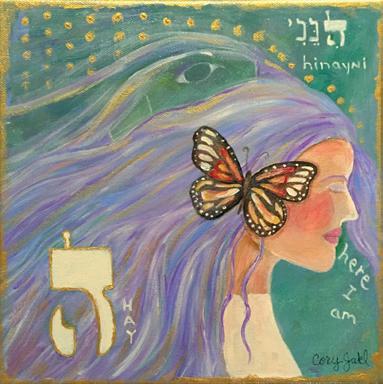
COURTESY OF GYNTOOLS
Cory-O-Graphics
&
of
Jakl,
31 NOVEMBER/DECEMBER 2022 I I hadassahmagazine.org
www.coryographics.com Instagram: @coryographics
Art
Soul
a Woman Cory Issner
Artist
Sight for Sore, Cloudy Eyes
Hadassah has Israel’s highest-volume cornea clinic
 By Wendy Elliman
By Wendy Elliman
Charlotte goller has had vision problems since her early teens. By her mid-30s, she had lost almost all sight in her left eye. Its dime-sized outer covering, the cornea, had bulged outward, the distorted cone-shape no longer able to bend the incoming rays of light into the orderly patterns essential for sight.
The condition is “called kera toconus, and I was born with it,” said the Connecticut-born Goller, a 75-year-old retired clinical psychol ogist. In the 1980s, she underwent a full corneal transplant in her left eye from a donor cornea at Mount Sinai Hospital in New York City, and a decade later, shortly before making aliyah in 1994, she had a corneal transplant in her other eye.
Whole corneas have been success fully implanted since 1905, making it the oldest and most successful type of human tissue transplantation. But, as
Goller discovered, the transplant can come with an expiration date.
“A few years back, the donor cornea in my left eye began cloud ing,” she said. “Soon, the eye was virtually blind again. With repeat whole corneal transplants usually rejected, I didn’t know what to do.”
Enter Goller’s sister, who happens to be Barbara Sofer, Israel director of public relations and communications for Hadassah. In 2019, Sofer intro duced Goller to Dr. Itay Lavy, a senior ophthalmologist and surgeon at the Hadassah Medical Organization.
Dr. lavy is a global expert in a cutting-edge method of partial corneal transplanta tion known as DMEK, Descemet’s membrane endothelial keratoplasty. His plan for Goller was to use DMEK to graft not a whole cornea, but a single microscopic layer of
cornea tissue into her eye to restore her sight.
He had learned this innovative surgery during his fellowship at the Netherlands Institute for Innovative Ocular Surgery in Rotterdam with the creator of the procedure, Dutch ophthalmologist Dr. Gerrit Melles. When Dr. Lavy returned to Israel in 2017, he introduced it to Hadas sah—making the medical center one of a handful of places worldwide to perform this advanced surgery.
“Hadassah has Israel’s high est-volume cornea clinic and has successfully implanted whole corneas to treat corneal trauma and disease for more than 50 years,” he said. “Now, the time limit on the implants is bringing many of these patients back with graft failure.”
In Goller’s case, as in many who need corneal transplants, “only one of the cornea’s five layers had failed, so only one needed replacing,” explained Dr. Lavy. The procedure takes about 30 minutes and is done under local anesthetic. Goller recalls being awake throughout, “feeling some pressure but no discomfort,” she said.
During the procedure, a surgeon gently dissects the cornea, separat ing the faulty tissue layer from the healthy ones and peeling it off. “We then inject a wisp of donor tissue,” Dr. Lavy said, “which we call a ‘megillah’ because it tends to scroll. With a virtually no-touch technique unique to Hadassah, we use air current to unscroll it and get it to the right place.”
This sounds simple until you real ize that this is all taking place in the realm of the microscopic. The cornea is a half-millimeter thick at its dens est, and the replacement layer a mere tenth of the thickness of a piece of paper. Not only that, but the donor
COURTESY OF HMO
HADASSAH MEDICINE
32 NOVEMBER/DECEMBER 2022 I I hadassahmagazine.org
Dr. Itay Lavy, senior ophthalmologist and surgeon at HMO, examines patient Charlotte Goller.
cells are implanted into the cornea’s innermost layer, atop supremely sensitive cells that, if damaged, will make the patient blind.
As a guide, Hadassah’s ophthalmic surgeons use Israel’s only intraoper ative optical coherence tomography (OCT), a noninvasive imaging system that works on light waves rather than radiation and allows surgeons to map and measure each of the cornea’s distinct layers in real time.
Demanding as it is, the surgery’s advantages are significant.

“It has minimal rejection rates, fast visual recovery and good visual acuity,” said Dr. Lavy. “It doesn’t touch the cornea’s surface, so there’s no astigmatism. And without sutures, there’s little incidence of infection.
Better yet, one donor provides suffi cient tissue for two patients.”
As with hearts and lungs, the availability of donor tissue is the bottleneck of corneal graft ing worldwide. Hadassah’s response to that need was to create a cornea bank 15 years ago at HMO. Super vised by Dr. Avi Solomon, Hadassah’s cornea service director and ophthalmic surgeon, the bank is run by Hadassah medical students. Sixth-year student Eden Amir has headed its three-mem ber team for the past five years.

“We’re on call 24/7 to harvest corneas from deceased patients,” said Amir. “Medical center staff alert us to potential donors. We check their medical suitability and then approach
Amazing Breakthroughs.
Hadassah On Call takes listeners behind the scenes at Hadassah hospitals in Jerusalem. Meet the health care superheroes who save lives every day. Hear how Hadassah innovations are saving lives. And learn tips for staying healthy. From bone health to sleep disorders to women’s health, stay ahead of the curve with Hadassah On Call.

Season 4 kicks off with our new host, American-Israeli journalist Maayan Hoffman, a third-generation Hadassah member.
Tune in to Apple, Spotify or wherever you listen. Watch videos or listen to the podcast online at events.hadassah.org/oncall-hmag.
COURTESY OF HMO
PODCAST
Medical student Eden Amir heads Hadassah’s cornea bank.
Podcast Alert! Real Stories.
HADASSAH, THE WOMEN’S ZIONIST ORGANIZATION OF AMERICA, INC. ©2022 Hadassah, The Women’s Zionist Organization of America, Inc. Hadassah, the H logo and Hadassah the Power of Women Who Do are registered trademarks of Hadassah, The Women’s Zionist Organization of America, Inc. 33 NOVEMBER/DECEMBER 2022 I I hadassahmagazine.org
MAAYAN HOFFMAN HADASSAH’S NEW PODCAST HOST
their families. It’s hard. It needs sensi tivity, focus, experience, awareness of the ethical and religious values of those involved, and a sense of when to persist and when to retreat and share the grief. I’ve had hundreds of conversations with hundreds of fami lies. No two have ever been alike.”
He recalled going to the ICU after a Muslim father of nine children had just died. “There were dozens of
sorrowing relatives there,” said Amir. “I waited and then approached two men who seemed senior. I explained, they listened and then consulted the family. One after another, they agreed to give the corneas, ‘no matter who they go to.’ ”
Once the family consents and the surgeons are informed, “we gently strip away the donor corneas in a rela tively simple 30-minute procedure that
leaves virtually no external trace,” said Amir. The tissue is then dispatched for immediate use or preservation.
When appropriate, the bank will bring together the family of the donor with the transplant recipi ent. “This closes the circle for all of them,” explained Amir, adding, “I’m uplifted by the work. I meet bereaved people who, even in their anguish, still see the other.”
MAAYAN HOFFMAN
A journalist passionate about Israel and Hadassah
When Israeli-American journalist Maayan Hoffman leaves her home in Jerusalem for her daily jog, she feels that with each step, she is running through Jewish history. “I brought my children to Israel because it is our Jewish home,” said Hoffman, who returned to Israel with her son and three daughters in 2015.
Born in Kansas City, Kan., Hoff man graduated from Washington University in St. Louis and first came to Israel in her 20s, after a short stint as managing editor of the Kansas City Jewish Chronicle . She received a master’s degree in Jewish civilizations from Hebrew University and returned to the United States in 2005, eventu ally moving to Baltimore and becoming editor-in-chief of the Baltimore Jewish Times —but, she said, “I never stopped hoping to move back to Israel.”
While history, heritage and family may have inspired her return to the Jewish state, the 44-year-old veteran reporter’s professional life has lately revolved around Israel as well, and specifically the areas of innovation and health care.
It is that interest and expertise that she is bringing to her role as the new host of Hadassah On Call: New Frontiers in Medicine , the monthly health and medicine pod cast that features interviews with Hadassah Medical Organization physicians, researchers and nurses at the cutting edge of health care, at hadassah.org/podcasts .
“As a health and innovation reporter,” said the third-gener ation Hadassah life member, “I feel lucky to tell the stories of how Israeli ingenuity is helping to make the world a better place.”

This interview has been edited for brevity and clarity.
What are you looking to bring to the Hadassah On Call podcast?
I’m passionate about Hadas sah. My two post-bat mitzvah daughters are fourth-generation life members, and I truly feel that Hadassah, and especially its
medical organization, make a dif ference in the world. I have a very solid background and wide-rang ing experience in both online and health care reporting.
I spent two years exhaustively covering the Covid pandemic for The Jerusalem Post , work that took me into Hadassah’s wards. I currently report for Health Policy Watch, a Geneva-based website, on world health trends and policy challenges.
I also ran The Jerusalem Post ’s health podcast, discontinued when I left, and I’m a former head of strategy for The Jerusalem Post Group [which includes the internet portal Walla! and Hebrew daily Maariv ]. I remain its head of conference planning for in-person and online events—although as an independent contractor through my own communications company.
You began hosting Hadassah On Call in September with an episode on monkeypox that featured an interview with infectious disease expert Dr. Allon Moses. Going for ward, what changes might you make to the podcast?
I’m very aware that I’ve come to something very good, and that any changes must be for the better.
One major difference will be that I’m physically in Jerusalem, whereas previously the podcast was created remotely. Being here, I can be face-to-face inside the medical center, making the episodes both more personal and more timely [and it will now include video as well as audio interviews]. And I’ll be adding Jerusalem snippets—sharing stories from my neighborhood and my kids’ schools, local festivals, exhibitions, exciting restaurants and happenings.
Can you share the story of your return to Israel and remarriage seven years ago?
After my divorce in 2014, I started planning on bringing my four young children to Israel for the Jewish education and social circle I wanted for them. Around this time, I reconnected with longtime colleague and friend Gil Hoffman, then- Jerusalem Post political correspondent, who was also divorced with children. I’d first met Gil when we were reporters in Israel many years before. Our friendship quickly be came personal, and when his two children gave me a card reading: “Please marry my Daddy,” that’s what I did! We married in Decem ber 2015. —Wendy Elliman
COURTESY OF HADASSAH HADASSAH MEDICINE 34 NOVEMBER/DECEMBER 2022 I I hadassahmagazine.org
Maayan Hoffman
Cornea bank staff say they are proud that, despite limited resources, their educational and outreach efforts in the hospital and local community have seen increased donations and a vastly shortened waiting list.
Among the some 100 recipients of cornea tissue at Hadassah last year was a 53-year-old woman originally from Odessa who had made aliyah 25 years earlier. Born with congenital cataracts clouding both eyes, she had both faulty lenses replaced with arti ficial ones in the former Soviet Union when she was in her teens.

These old replacement lenses “unfortunately damaged her corneas, and vision deteriorated in both her eyes,” recounted Dr. Lavy. “So she underwent whole corneal transplant in one eye, but the graft became infected and the eye lost all vision. Some years ago, now in Israel, she began losing sight in her second eye. From being fully functional, she could no longer safely make herself a cup of coffee. It was heartbreaking.”
The Hadassah team operated first on the patient’s completely blind eye, replacing the old Soviet lens and restor ing vision with transplanted cornea tissue. They then gave the partially sighted eye a new, more modern artifi cial lens, fully restoring her sight.
Another tissue recipient at Hadassah last year was a 23-year-old Ethiopian Jew who had been in a fight in a Tel Aviv bar.
“Glass from a broken bottle damaged his right eye so severely that the hospital where he was first taken wanted to remove the eye,” said Dr. Lavy.
A naval commando officer under whom the young man had served in the Israel Defense Forces contacted Hadassah.
“He’s hotheaded and gets into trouble, but he’s a good guy,” Dr. Lavy
recalled the officer saying. “He pretty much grew up on the street, and he’s come a long way. He wants to go further. Please help him keep his eye.”
In a long and complex surgery, adapting operating techniques as they went, Dr. Lavy’s team rebuilt the patient’s eye, transplanting an iris and lens as well as a cornea. Today, the young man sees well enough to drive safely.
“I always try to see the person behind the eye and tailor treatment to suit him or her,” said Dr. Lavy. “I never give up. My patients know I’ll do anything to help them. I believe their trust contributes to the surgical success.”
Dr. Lavy notes that future advances in the field may reduce demand for
corneal transplants or do away with them altogether. These innovations, he hopes, will include imaging that identifies cornea disease early enough to prevent it; injection rather than surgery to implant cornea cells; corneas created on 3D printers; heal ing with stem cells; and if surgery is still necessary, robotic surgeons to do precision work.
Until such advances are realized, Charlotte Goller has a plan.
“When the old transplant in my second eye wears out,” she said, looking up from one of the 100-plus books she reads each year, “I’m off to see Dr. Lavy.”
35 NOVEMBER/DECEMBER 2022 I I hadassahmagazine.org
Wendy Elliman is a British-born science writer who has lived in Israel for more than four decades.
A Pipeline for Future Leaders
Meet the inaugural class of Evolve fellows
By Libby Barnea
At a time when a number of establishment Jewish groups struggle to recruit and engage younger members, Hadassah is also asking, “What will our next several decades look like? And who will be responsible for leading our 110-yearold organization in the near future?”
Now, a new initiative from Evolve Hadassah: The Next Generation aims to answer those questions through a two-year pilot fellowship involving virtual learning sessions and trips to Israel and Chicago to witness Hadas sah’s peerless brand of practical Zionism in action.
The three-year-old Evolve, which caters to members under 55, already offers two signature virtual events per year as well as trips to Israel through a collaboration with the outreach organization Momentum. In 2022, the spring event featured Israeli chef Einat Admony, while an art therapist led the fall one, which explored the role that resilience plays in promoting health and well-being. Evolve makes all virtual programs available for watch parties and for in-person gath erings hosted by Hadassah groups, be they young women’s chapters or others with a sizable number of younger members.
But from its earliest days, said Randi Richmond, the group’s director, a primary goal of Evolve has been
establishing a pipeline for new leaders.
“In Hadassah’s current structure, we’re struggling to recruit young members,” said Richmond. “If we start by bringing in strong women to serve as leaders, they will then bring in new women who are friends, or who they know from their local communities. We first need those leaders to build a foundation.”
The 10 women who comprise the first class of fellows are all under the age of 45, hail from around the country and bring with them varying levels of past Hadassah involvement
A STORY PREFACED
and knowledge of Israel. Some, like attorney Amy Sapeika of Bloom field Hills, Mich., and Jewish school administrator Leah Felner of Jersey City, N.J., have strong family roots in Hadassah. Others, including Houston speech pathologist Sandye Fertman and health coach Pam Brode of Porter Ranch, Calif., were active in Young Judaea before ramping up their involvement in Hadassah.
For Stephanie Malka, who lived in Israel for eight years, her attachment to Hadassah is deeply personal.
“My two eldest sons were born in Israel in Hadassah hospitals, one in Ein Kerem and one in Mount Scopus,” said Malka, who manages several moving companies in the Las Vegas area. “I benefitted immensely from the hospitals in Jerusalem when I lived there, and I am happy to continue to support their efforts to serve the community.”
Still other fellows see their commit ment to Evolve as a means to cultivate leadership experience that will empower their own lives while at the
BY HADASSAH
Twenty-eight-year-old children’s book author Elana Rubinstein credits her mother’s Hadassah involvement in Howard County, Md., for contributing to her career choice.

“I’ve found that so much of my identity is informed by the strong Jewish values my mom instilled in me,” said Rubinstein, who was made a life member by her mother, Karen Rubinstein, when she was in elementary school. “Hadassah had a huge role in the woman, and writer, I am today!”
Who she is today is the successful author of a chapter book series fea turing 10-year-old Saralee Siegel and her tight-knit Jewish family. The third title in the series, A Donut in Time: A Hanukkah Story , which was released by Apples & Honey Press in October, features Saralee traveling back in time to meet a girlhood version of her beloved great-grand mother Gigi. Looking ahead to next year, Rubinstein’s hero will return in the Purim caper The Royal Recipe .
Back in 2019, Rubinstein’s debut Saralee Siegel book, Once Upon an Apple Cake , was a PJ Library selection.

HADASSAH NEWS
Elana Rubinstein
36 NOVEMBER/DECEMBER 2022 I I hadassahmagazine.org
same time bolstering Hadassah.
“I am intrigued by the idea of getting more involved in Hadassah and gaining leadership skills that I can use in Hadassah as well as in my health and wellness coaching busi ness,” said Pikesville, Md., resident Robin Katcoff.

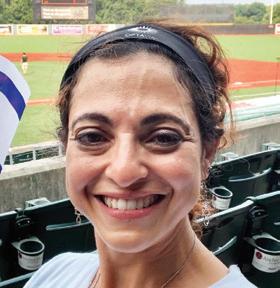
Shoshana Simones, a content marketing specialist in Phoenix, said that she hopes to build connections to help grow and strengthen the network of young Jewish women in her area. “I have been looking for an opportunity to engage more in the Jewish commu nity and advocate for things I believe in—namely, women’s rights and access to health care,” she said. “I’ve spent the last several years focusing inward, caring for my young family, and I am now ready to start giving back to my community at large.”
During the first year of the fellowship, which kicked off in July, fellows will participate in five educational and training sessions, beginning with a leadership seminar that featured Hadassah National President Rhoda Smolow and CEO/Executive Director Naomi Adler. Other sessions plan to provide an overview of Hadassah’s Israel programs, philanthropy goals, advocacy and Zionism priorities and a bootcamp on public speaking and communication.

Two fellows—Emily Shrode, who works in the entertainment industry in Austin, Texas, and Jacksonville,
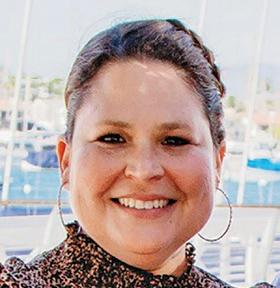

Fla.-based health care administrator Emily Godsey—will experience Israel for the first time when the entire cohort travels to Israel for Hadas sah’s 100th Convention in November. In July 2023, the 10 women will attend the organization’s national business meeting in Chicago.
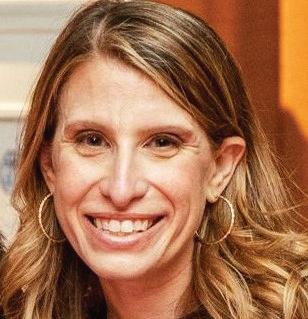
In the second year, fellows are expected either to create and lead a project in their local area or assume a leadership position in their Hadassah community.
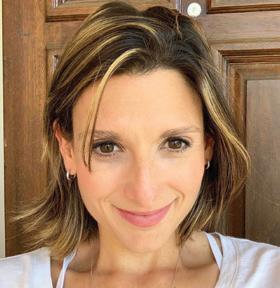

“I hope that by seeing Hadassah projects firsthand, the Evolve fellows will feel even more passionate about Hadassah’s mission and committed to becoming leaders,” said Debbie Knight, Evolve’s chair. “I love that Hadassah is a sisterhood of women who, like me, value the importance of supporting Israel and advocating for causes important to women and to the Jewish community.”

Fellow Nicky Colley of Irvine, Calif., shares Knight’s vision of Hadassah as a network linking likeminded women.
“Being a part of the Irvine Jewish community for the last 10 years, I have made some wonderful friend ships and connections,” said Colley, who has a background in event coordination. “I would love to be able to share the incredible work of Hadassah and gather my commu nity’s support for the organization. I would love to see Hadassah as a home for all women, of all Jewish denominations, to come together.”
To learn more about Evolve, including how to nominate a member for a planned second round of fellow ships, email evolve@hadassah.org
Libby Barnea is the deputy editor of Hadassah Magazine
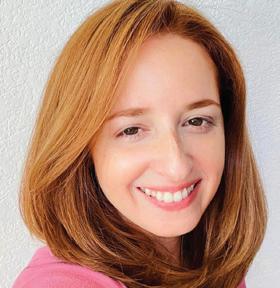
ZIONISM…DID YOU KNOW?
Israel has one of the highest number of museums—over 200!—per capita in the world. Fill in the blanks to test your knowledge of some of Israel’s smaller, less well-known cultural institutions.
Visit the Tikotin Museum of ______ Art in Haifa.
There is a Museum of Underground Prisoners in both Jerusalem and ______ .
Tour the Tel Aviv home of Haim Nahman ______ , the first great modern Hebrew poet.
The ______ Museum of Contemporary Art is just north of Tel Aviv.
The onetime home of the ______ family in Zichron Ya’akov is now a museum.
In Ramat Aviv, Zionists can visit the ______ Israel Museum.
The Negev Museum of Art is located in ______ .
The National Maritime Museum is also an ______ institution.
Next to the zoo in Jerusalem is the Gottesman Family Israel______ .
The Ayalon Institute, aka the ______ Factory, is located in Rehovot.
NOW YOU KNOW… MORE ABOUT SOME OF ISRAEL’S SINGULAR MUSEUMS
ANSWERS: 1 Japanese; 2 Akko; 3 Bialik; 4 Herzliya; 5 Aaronson; 6 Eretz; 7 Beersheba; 8 archaeological; 9 Aquarium; 10 Bullet
Evolve fellows (clockwise from top left) Amy Sapeika, Emily Godsey, Emily Shrode, Leah Felner, Nicky Colley, Stephanie Malka, Shoshana Simones, Sandye Fertman, Robin Katcoff and Pam Brode
37 NOVEMBER/DECEMBER 2022 I I hadassahmagazine.org
Thessaloniki’s Hidden Charms
As darkness fell and the energy rose across Thessa loniki’s Ladadika district, I finally understood the city’s charms.
The fierce midday heat of summer had subsided when I stepped out of the Astoria Hotel, though the sun still hung low over the Thermaic Gulf on Greece’s northeastern coast. A group of Orthodox Jewish men hustled off to Shabbat services at what locals refer to as the Bourla synagogue, named for the family of Thessaloniki’s native son, Albert Bourla, Pfizer CEO and Genesis Prize winner. The Bourlas funded the sanctuary’s restoration in 1978 after a massive earthquake.
On every corner, cafe tables were full of couples and families drinking frappés and Aperol spritzes or the pine-scented local wine called Retsina. Balloon sellers and troubadours strolled the cobblestone alleys, where children played outside well past dusk.

I had stumbled on those alleys by chance, tucked as they were into downtown Thessaloniki’s postwar grid. Truth be told, neither the charm nor the history of Thessaloniki is evident at first glance. But both are abundant for those willing to explore.
Greece’s second-largest city and its cultural capital, long known to English speakers as Salonika, is
a workaday port town enlivened by youthful energy from Aristotle University, named for the philoso pher born nearby. (Mustafa Ataturk, the father of modern Turkey, is another native.)
Successive earthquakes and fires—notably the Great Fire of 1917—all but destroyed the ancient city that, in the half millennium preceding, had been the nexus of Sephardi Jewish civilization.
Here and there, fragments of Byzantium, from buildings to crum bling walls, are visible among the high-rises. Thessaloniki was founded in 315 BCE and takes its name from Thessalonike of Macedon, a sister of Alexander the Great. Shortly afterward, it became home to one of Europe’s oldest Jewish communities, which included Saul of Tarsus, the Jewish disciple of Jesus who came to be known as St. Paul. Thessaloniki was an important outpost of the Roman Empire and the second-larg est Byzantine city before falling to the Ottomans in the fifth century.
Beginning in the 1300s, Sephardi Jews fleeing the Iberian Inquisition found refuge in Ottoman lands.
By the early 1500s, Thessalon iki’s 15,000-plus Jews made it the world’s only Jewish-majority city—and over successive centuries,
its community was the undisputed center of Sephardi Jewish intellectual and social life.

Ladino was the language of the streets. Downtown Thessaloniki was full of Jewish businesses, and the city’s cosmopolitanism became a magnet attracting Jewish intellectuals and thinkers from Bulgaria, Armenia and beyond.
That world did not end abruptly with the Holocaust, as in so many European Jewish communities. Rather, it dissipated through a series of events that began with the Great Fire—which destroyed the homes of at least 50,000 Jews, prompting migrations abroad—and continued with an influx of ethnic Greeks following the Greco-Turkish war, reducing the city’s Jewish population share to around 20 percent. Nearly all Thessaloniki’s remaining Jews at the time—around 56,000 on the eve of World War II—were deported and killed by the Nazis.
Many of the 1,000 or so who live there today gather at the recon structed Bourla synagogue, formally called Yad Lezikaron and today Thessaloniki’s only fully operational Jewish house of worship. The sanc tuary’s walls are inscribed in Greek, naming Thessaloniki’s several dozen lost congregations and the dates
SHUTTERSTOCK TRAVEL
For centuries, the nexus of Sephardi Jewish civilization | By Hilary Danailova
38 NOVEMBER/DECEMBER 2022 I I hadassahmagazine.org
of their founding, from the 1300s through World War I. Most names refer to the communities they left en route to Greece: Catalan, Sicilia, Calabria, Lisbon.
As night descended, I watched
IF YOU GO
Thessaloniki’s major sites are all within a 15-minute downtown walk near the waterfront. But walk carefully! Sidewalks are uneven and treacherous, and crosswalks and curb cuts are few.

The heart of Thessaloniki is Aristotle Square , a cafe-lined plaza that is the southern ter minus of Aristotle Street, a wide esplanade lined with porticoed edifices and popular eateries. At night, the city’s liveliest scene extends west from Aristotle to the cobblestoned Ladadika district , a tangle of Ottoman-era lanes thick with restaurants and bars.
Roman Ruins The Arch of
the lights shimmer across Thessa loniki’s waterfront, barges glowing on the horizon. The sound of music at warehouse parties thumped from industrial buildings along the dock. Today’s Thessaloniki would be

To the east of Aristotle Square stands the visual symbol of Thessaloniki—the White Tower , a Byzantine-era fortress rebuilt by the Ottomans in 1535. Nearby in Eleftherias Square, a Holocaust memorial sculpture, Menorah in Flames , was erected in 1997 on the site of a 1942 roundup of 9,000 Jewish men.
The city’s Roman forum was excavated in the 1960s along with multiple baths, crumbling arches and a small theater used by gladiators. A short walk southeast is the Byzantine-era Arch of Gale rius and Rotunda , fourth-century monuments named for that era’s Roman emperor.

Fans of pre-ancient history should Archaeological Museum of Thessaloniki , which displays artifacts dating to the Neolithic and Bronze The Museum of Byzantine Culture , mean while,
unrecognizable to those who lived here in centuries past, I thought, but its energy remains unmistakable.
Hilary Danailova writes about travel, culture, politics and lifestyle for numerous publications.
is an enjoyable survey of a concept many find difficult to pin down: Were they Romans? Greek? The answer is, well, Byzantine.

Some tombstones plundered from Thessaloniki’s storied Jewish cemetery by Nazi occupiers are on view at the Jewish Museum of Thessaloniki , and some were transferred to the new and still ac tive Jewish cemetery created after World War II. But the majority of the tombstones were used in the construction of new buildings, including Greek Orthodox church es, while Aristotle University was built upon the cemetery grounds. One ticket buys admission to the Jewish museum—whose collec tion also includes Ottoman-era ritual objects, household items and photographs—as well as to the only surviving prewar Jewish house of worship: Monastir Synagogue , built in 1926 and now used only for special occa sions. The yellow stucco façade of the building, named for Monastir, the birthplace of many of its congregants, incorporates
Moorish-style arches.
The city’s only full-time syna gogue, Yad Lezikaron , offers daily worship in a sanctuary filled with poignant visual tributes to Thessaloniki’s 600-year Sephardi community. Many Jewish visitors stay, as I did, at the Astoria Hotel , where Chabad conducts Ashkenazi services and organizes kosher food.
Thessaloniki’s hilltop Old Town , while not as well preserved as those in many other European cities, is worth a visit for its castle ruins and views over the city to the Aegean Sea.
The historic Ottoman city of Kavala , 100 miles east of Thes saloniki, makes an excellent side trip. Sprawled across mountains overlooking a bay, with scenery reminiscent of the Amalfi Coast, Kavala boasts a beautifully pre served Old Town with a stunning variety of jewel-toned Ottoman buildings as well as a Roman aqueduct and Byzantine castle.
CREDITS
A Storied City (from opposite page, far left) Views down to the Aegean Sea from Thessaloniki’s hilltop Old Town; a street scene in the Ladadika District; Monastir Synagogue’s sanctuary; the Holocaust memorial ‘Menorah in Flames’ in Eleftherias Square
39 I I
PHOTO OF MONASTIR SYNAGOGUE BY BOAZ ROTTEM/ALAMY; SHUTTERSTOCK
Still Smitten With Deb Perelman
Keepers and classics from a tiny New York kitchen
By Adeena Sussman
Back in 2006, when deb Perelman tentatively began blogging about food, she feared her efforts would end up lost in a digital desert. A passionate home cook who had worked as an art ther apist, Perelman had a penchant for prose but a pronounced lack of food industry experience and contacts. Cold-emailing various publications looking for work as a food writer yielded no bites.
“Obviously no one would hire me,” Perelman told me from Manhat tan, where she was preparing for her son Jacob’s bar mitzvah that upcom ing weekend.
And so she began developing, photographing and posting recipes for her nascent blog, Smitten Kitchen, out of her tiny East Village kitchen, where she lived with her thennewly married husband, Alex. She did everything herself—shopping, planning, styling and cleanup—tenta tively beginning to post and lingering in the emotional basement of low expectations.
“I was convinced it would be a failure,” said Perelman, 46. “I figured I’d just blather about food online to a nonexistent audience and either find something worth doing forever or get it out of my system. I had no real experience. All I had were opinions.”
It became very clear very quickly that people wanted to hear those opinions. Smitten Kitchen, featuring
early signature recipes like Short Ribs Bourguignon that Perelman paired with latkes for Hanukkah, soon garnered a coterie of fans who connected to her self-deprecating sense of humor as much as her food. Here was a woman comfortable enough in her kitchen and digital space to confess her kitchen flops as readily as her successes.
Sixteen years later, Smitten Kitchen is more popular than ever, attracting millions of unique visitors per month—not to mention 1.6 million Instagram followers. The blog has spawned three cookbooks written and photographed by Perelman, the latest being Smitten Kitchen Keepers: New Classics for Your Forever Files, which was slated to be released in November.
The proliferation of TikTok recipe creators focused on up-to-the-second trends like corn ribs and wobbly Japanese pancakes made Perelman even more determined to write a book that would stand the test of time, similar to those created by her idol Ina Garten, of Barefoot Contessa fame.

“My hope is that the recipes in Smitten Kitchen Keepers are the kinds you could make forever,” said Perelman. “I know books always eventually look dated, but a perfect pound cake recipe is, I hope, the last one you’d ever need.”

Perelman is referring to her BetterThan-Classic Pound Cake, described with her trademark wit in the recipe’s introduction as “a two-and-twothirds pound pound cake. I don’t make pound cakes that force you to look down into the pan to see them. I think pound cakes should dome tall and chaotic over the rim.”
TikTok trends notwithstanding, Perelman, who is active on that platform, does appreciate the democratizing effects of social media food content.
“I think there are many more ways for people without food media experience to get in the door, which I think is a win for everyone,” she said, citing food influencers like Edith Galvez and Carolina Gelen. “I love seeing more faces and hearing
© CHRISTINE HAN FOOD
40 NOVEMBER/DECEMBER 2022 I I hadassahmagazine.org
more voices than food media has traditionally celebrated.”
For Gelen, the appreciation is reciprocal.
“Deb’s work and success are very inspiring to me, as a creator,” said Gelen, a Romanian-born Jewish immigrant to the United States. “Her inviting, friendly and approachable way of cooking is what makes her recipes so great and gets people comfortable in the kitchen. Her will
Slow-Roasted Chicken With Schmaltzy Croutons

Serves 4
FOR THE CHICKEN
1 1/2 pounds bread (sourdough, miche or sturdy country loaf)

Olive oil
6 medium garlic cloves, but who’s counting, unpeeled Kosher salt and freshly ground black pepper
4 pound whole chicken
1 lemon
A few sprigs fresh thyme
FOR THE SALAD Juice of 1 lemon
1 teaspoon smooth Dijon mustard
4 tablespoons olive oil
1/4 cup roughly chopped green olives
1 small fennel bulb, sliced very thin
4 ounces firm, leafy lettuce, such as escarole
to never compromise her website’s voice inspired me to stay true to myself when it comes to the recipes and stories I share online.”
Smitten Kitchen Keepers is heavy on what has always defined Perelman’s website—comfort-food classics like spaghetti and meatballs and s’more bars alongside a pantry of global flavors. Dishes like falafel, tomato-chickpea masala and ovenbraised beef with harissa raise the
FOR THE CROUTONS:
Cut the bread into 1-inch-thick slices. Coat a 9 by 13-inch roasting pan or baking dish with olive oil. Arrange the bread snug in the bot tom, cutting the slices into small pieces as needed. (Tetris-heads, this is our time to shine.) Nestle the garlic cloves between the bread pieces throughout the pan. Drizzle the bread with 2 table spoons olive oil, 1/2 teaspoon kosher salt and lots of freshly ground black pepper.
FOR THE CHICKEN: Sprinkle the chicken with 2 teaspoons kosher salt, black pepper, finely grated zest from the lemon, and the leaves from a couple thyme sprigs. Cut the lemon in half and toss it, and any additional thyme sprigs, into the bird’s cavity. Place the chicken on top of the bread, and—this is essential to keep the bread from drying out until the chicken releases any juices—sprinkle the exposed pieces of bread around the chicken with 1/2 cup water. Roast for about 2 hours to 2 hours 20 minutes, or until a thermometer inserted into the thickest part of the breast reads 155°, or 165° for the thigh.
FINISH THE CROUTONS:
question of cultural appropriation in recipe development. Perelman has written previously about wading into the dialogue around which country or ethnic identity can truly claim a dish as its own. Case in point: When she adapted a Saveur recipe for shak shuka on her site and referred to it as an “Israeli” dish, and she heard from a chorus of followers that shakshuka is in fact Tunisian in origin. She has corrected the mistake.
Transfer the chicken to a cutting board, but before you do, take a look at the croutons. If they’re very dry, tilt the bird over them, drizzling juices that have collected inside the bird over the bread to moisten it. If they are not yet dried out, you can skip this. In all cases, use a spatula to flip the croutons, and return them to the oven to cook for about 15 to 20 minutes, or until they’re largely crisp and golden brown, while the chicken rests. The amount of time this takes depends on how dried out they were going in; they sometimes need longer.
MEANWHILE, PREPARE YOUR SALAD: Combine the lemon juice and Dijon mustard in a large bowl, and whisk in the olive oil in a thin stream. Season well with black pepper and salt. Add the olives and fennel and toss to combine. Set aside until right before serving; then add the leafy greens and toss to coat them.
Season salad with additional salt and pepper.
TO SERVE: Remove the pan with the croutons from the oven and transfer them to a serving platter. Shmear the garlic cloves over the toasts, discarding the peels. Heap the salad on top. Carve the chicken and arrange the pieces on top of the salad and croutons. Pour any juices from the cutting board over the chicken and serve immediately.
RECIPE
OF PENGUIN RANDOM HOUSE LLC. ALL RIGHTS RESERVED. NO PART OF THIS EXCERPT MAY BE REPRODUCED OR REPRINTED WITHOUT PERMISSION IN WRITING
THE
41 NOVEMBER/DECEMBER 2022 I I hadassahmagazine.org
PHOTO BY DEB PERELMAN.
FROM
‘SMITTEN KITCHEN KEEPERS’ BY DEB PERELMAN. COPYRIGHT © 2022 BY DEB PERELMAN EXCERPTED BY PERMISSION
OF ALFRED A. KNOPF, A DIVISION
FROM
PUBLISHER
“I think we should cook anything that we enjoy and want to eat,” said Perelman. “But if you’re going to write about it, at minimum you should know where the dish came from and how whatever you’re making might deviate from the way it’s more typically made. I am hardly perfect at any of this, but I am always happy to make a correc tion.”
Indeed, Perelman takes seriously feedback from her followers. She adjusts recipes and makes tweaks based on their comments, reading or responding, she says, to more than 350,000 queries since she started her blog.
The obsession over how every recipe will fare in the kitchens of her reader-cooks is what drives her the most.
“I’m realistic about our time, energy and grocery limitations at home,” said Perelman, who uses her own family—Alex, Jacob and 6-year-old daughter, Anna—as her ultimate tasting panel. Alex also helps in the kitchen. While we were corre sponding for this article, he was testing the Chicken With Rice, Chorizo, and Tomatoes from her new book. And he regularly makes her famous Crème Brûlée French Toast on the weekends.
“Once he loves a dish enough that he requests it, I hand off the recipe to him, especially when he has more time,” Perelman said of her husband.
For Smitten Kitchen Keepers, she labored over how to improve upon a
classic roast chicken, eventually land ing on a bed of schmaltzy croutons and a lower cooking temperature than most versions require.
The schmaltzy chicken, shared here, and other “keepers” allude to Perelman’s Jewish roots. While she
dairy from a cake or bread to make it pareve, making doughy soup dump lings with matzah meal.”
Perelman grew up in Franklin Township, N.J., part of a family that identified as Conservative but preferred the nearby Reform synagogue, where Perelman celebrated her bat mitzvah.
“We just unearthed the photos as we got ready for my son’s bar mitzvah,” she told me, before launching into typical, and comical, self-mockery. “What a terribly awkward time for a girl to be so heavily photo graphed!”
A quick search through the “best of” recipe collec tion on smittenkitchen.com returns several quintes sential Ashkenazi recipes: Best Challah, Mom’s Apple Cake, Tangy Spiced Brisket, My Ultimate Chicken Noodle Soup and Marbled Cheesecake Hamantaschen, among many others.
isn’t particularly observant, and many of her recipes are not kosher, she says that she does think about what makes certain foods Jewish.
“Most Jewish foods are of a place and time where they were made by everyone,” she said. “But in their own homes, Jews did what they needed to make them kosher—swapping chicken or beef for pork, removing
Still other treats from Smitten Kitchen Keepers evoke the Jewish kitchen in homey and delicious ways, like her savory Bialy Babka (find the recipe online at hadassahmagazine.org/ food) and, with Hanukkah in mind, a Chocolate Olive Oil Spread that Perelman states in her recipe introduction makes “a wonderful host gift.”
And, she adds, it’s “wonderful for gifting yourself.” Chag sameach and b’teyavon.

DEB PERELMAN
FOOD
Adeena Sussman is the author of Sababa: Fresh, Sunny Flavors from My Israeli Kitchen and co-author of Gazoz: The Art of Making Magical, Seasonal Sparkling Drinks. She lives in Tel Aviv.
Savory Strands Perelman’s Bialy Babka is one of several homey Jewish ‘keepers’ in her new cookbook.
(OPPOSITE PAGE)
42 NOVEMBER/DECEMBER 2022 I I hadassahmagazine.org
PHOTO BY DEB PERELMAN. RECIPE FROM ‘SMITTEN KITCHEN KEEPERS’ BY DEB PERELMAN. COPYRIGHT © 2022 BY DEB PERELMAN EXCERPTED BY PERMISSION OF ALFRED A. KNOPF,
A
DIVISION OF PENGUIN RANDOM HOUSE LLC. ALL RIGHTS RESERVED. NO PART OF THIS EXCERPT MAY BE REPRODUCED OR REPRINTED WITHOUT PERMISSION IN WRITING FROM THE PUBLISHER
Chocolate
Olive Oil Spread


Makes 1 cup spread
4 ounces dark chocolate (semi- or bittersweet), roughly chopped
1/2 cup olive oil
1/2 cup confectioners’ sugar
1/4 cup cocoa powder, any kind Flaky sea salt
1. In a medium saucepan, melt the chocolate and olive oil together over medium-low heat, whisking until they’re evenly combined. Whisk in the confectioners’ sugar and cocoa until the mixture is smooth. It will be liquid and needs to cool
to become a spread. There are two ways to do this.
2. You can leave it out at room temperature for several (4 to 6) hours, faster in a cooler kitchen and slower in a warmer one. You can also cool this in the fridge, but it requires more monitoring. After 15 minutes, remove from the fridge and thoroughly whisk the mixture until it’s even.Repeat this every 5 minutes (it shouldn’t take more than 30 minutes total) until a spreadable consistency forms.
3. Spoon the mixture into its final jar for storage and sprinkle the surface with flaky sea salt, to taste.
We love this best spread on a baguette for breakfast, with a bowl of fresh berries on the side.

43 NOVEMBER/DECEMBER 2022 I I hadassahmagazine.org
Nostalgia Meet Whimsy
Hanukkah items are playful and eye-catchingly colorful this year, with jewelry, Judaica and food in pink, green and blue. Our array of gift recom mendations will appeal to your inner child while taking you on a trip to the sights and smells of yesteryear. For more information and items, go to hadassahmagazine.org
THE TOP BRASS
Israeli Judaica metal artist Ayala Adler designs and creates collectable copper, bronze and brass tops and dreidels as well as other ritual items decorated in a host of patterns and patinas (dreidels between $105 and $150 each; etsy.com/shop/AyalaAdlerJudaica ).

AT A GLANCE
The Joyce Evil Eye and Hamsa Evil Eye lariat necklaces from Miami-based Miriam Merenfeld Jewelry balance modern aesthetics with good luck charms and designs from Jewish folk traditions (in gold vermeil, from $150 each, or sterling silver, from $130 each; moderntribe.com ).

GOAT APPEAL

A charming take on the animal menorah, Russian-born Israeli artist Inna Olshansky’s ceramic green goat is just one example of her menagerie of handcrafted Hanukkah Judaica. Go to her website ( Innaolshansky.com ) to view more of her Judaica and whimsical sculptures, including menorahs in the shape of horses or adorned with birds (goat menorah from $340; etsy.com/shop/InnDreamGallery ).
LET’S GET A HEAD
Who else but MacKenzie-Childs, leading tableware and ceramics manufacturer, would imagine a moose-head menorah? Handpainted with the company’s signature checkerboard pattern in blue, this 18-inch-wide Royal Check Moose Menorah will turn heads year-round (from $258; at mackenzie-childs.com and other retailers).


HAMSAS ON A CHAIN
New York City-based jewelry designer Ariel Tidhar has made a name for herself on Instagram ( @arieltidhar ) with her small-batch, clever and colorful acrylic and metal Judaica pieces, such as this 18-inch hamsa pomegranate charm necklace (from $145; arieltidhar.com ).
HANUKKAH GIFT GUIDE
44 NOVEMBER/DECEMBER 2022 I I hadassahmagazine.org
RETRO PUZZLE


’ s latest 500-piece jigsaw puzzle, picturing an illustration by Jessica McGuirl from our popular September/October 2019 Catskills theme issue. Receive or gift the puzzle, and help support your favorite publication, with a $250 donation to the hadassahmagazine.org ).



Go back to the Catskills with Hadassah Magazine


BAGEL AND A SANDWICH, TO WEAR



“Delicore,” clothing and objects that evoke favorite Jewish eateries, is an ongoing trend. You can don (clockwise from top right) a Zabar’s T-shirt (from $20; zabars.com ) or a pumpernickel sandwich bracelet set (from $23; everydayyiddish.com ), smell the nostalgia with a Katz’s Chocolate Egg Cream Candle (from $25; katzsdelicatessen.com ) or shop for more with a vintage Russ & Daughters tote (from $55; russanddaughters.goldbelly.com ).

ONE HAPPY COOKIE
these one-inch Mismatched Jeweled Gold Dreidel Earrings (from $25; moderntribe.com ).
OLD CITY LIGHTS


With a marble base and brass branches inspired by the labyrinthine streets and pathways of Jerusalem’s Old City, the Rova Menorah’s abstract geometric design is a modernist ode to a locale layered in Jewish history and lore (from $695; l-objet.com ).
Jewish food personality Jake Cohen’s mini rainbow black & white cookies may seem like an oxymoron, but the brightly colored, sweet and cake-like treats are a welcome update on the classic Jewish bakery staple. And go to Goldbelly, the online marketplace for gourmet foods, to discover more offerings from Cohen (tin includes 12 cookies, from $50; goldbelly.com/jake-cohen ).
45 NOVEMBER/DECEMBER 2022 I I hadassahmagazine.org
Bringing Anatevka Back ‘To Life!’
Joel Grey on the return of ‘Fiddler on the Roof’ in Yiddish
By Jane Levere
When joel grey was first approached five years ago about joining the National Yiddish Theatre Folksbiene’s planned production of Fiddler on the Roof in Yiddish, he was asked if he would prefer to star as fabled milkman

TOM STOPPARD’S
JEWISH FAMILY ALBUM
“Here’s a couple waving goodbye from the train, but who are they? No idea,” Grandma Emilia Merz tells her assembled relatives as she flips through a photo album in the opening act of Leopoldstadt , the latest production from legendary British playwright and screenwriter Tom Stoppard. “It’s like a second death, to lose your name in a family album.”

Leopoldstadt , now on Broadway at the Longacre Theater after a successful run on the West End in London, takes its title from the Jewish ghetto in Vienna. Emilia, played by Jewish actress Betsy Aidem, is the matriarch of
Tevye or direct the show. The legend ary actor’s choice to stay behind the scenes as director has proven itself a wise one, yet again, as this award-winning Fiddler returned to Off Broadway in November for a limited run at the New World

At that gathering in the opening—a Christmas party in 1899 enlivened with interwoven, playful dialogue that is a Stoppard trademark—family members debate the meaning of assimilation, discuss mathematics and opine on Theodor Herzl’s pamphlet Der Judenstaat . Ironically, as theatergoers will see, one character wonders if there is an actual need for a Jewish homeland: “…the beating heart of Viennese culture. This is the Promised Land,” he insists. There’s also talk about who would come to their next large get-togeth er—a Passover seder.
Questions about Jewish acculturation and endurance—as well as that photo album— cycle through Leopoldstadt . Its five acts shift from 1899 to 1900, then 1924, 1938 and 1955, creating snapshots of the Merzes and Jakobo viczes’ journeys that saw them attain almost full acceptance in their native country only to lose everything under the Nazis.
If this Jewish story of success followed by dev astation seems familiar, Stoppard nevertheless invests his tale of memory, grief and love with an intimate, haunting beauty. The play is set largely
Stages theater. This will be the third time that the winner of an Oscar, Tony and Golden Globe has helmed the production, whose Yiddish title is A Fidler Afn Dakh. It was first presented to packed audi ences in 2018 at the Folksbiene’s home in Lower Manhattan before transferring to Stage 42 in Hell’s Kitchen; a planned national and international tour was shuttered largely due to Covid.
Grey, perhaps best known for originating the role of the Emcee in the musical Cabaret on Broadway in 1966, has a personal connection to Yiddish theater. His father was klezmer clarinetist and vaudeville star Mickey Katz, who performed songs in Yiddish as well as English.
in one room that changes to reflect the families’ fortunes, from the warm, sepia-toned grandeur of bustling celebrations filled with relatives to a stark post-World War II scene with harsh lighting. Those who remain, whittled down to three, return to Vienna, look at the photo album and must contend with their guilt.
These scenes are intimate by design; this is Stoppard’s most personal play, a fictional take, he has said, on his own Jewish history. The 85-year-old Tony- and Oscar-award winner, best known for plays such as Travesties and Rosencrantz and Guildenstern Are Dead and for the screenplay to, among other films, Empire of the Sun , only discovered that he is Jewish 30 years ago, and that both sets of his grandpar ents had died in the Holocaust.
In Leopoldstadt , 6-year-old Leo escapes the Nazi regime in Vienna and finds refuge in En gland. As a young adult, Leo, a proxy for Stop pard, can barely recall his Viennese relatives, let alone recognize them in photos—yet another tragic erasure for these Jewish families already subsumed by loss.
—Leah Finkelshteyn
ARTS
© LEV RADIN (LEFT); HENRY LEUTWYLER
Steven Skybell as Tevye in the Folksbiene’s ‘Fiddler on the Roof’ Joel Grey JOAN
MARCUS
46 NOVEMBER/DECEMBER 2022 I I hadassahmagazine.org
In 1899 Grandma Emilia (right, played by Betsy Aidem) looks at the family photo album with her daughter Eva (Caissie Levy).
The 90-year-old Manhattan resident spoke with Hadassah Magazine several weeks before the reopening of A Fidler Afn Dakh. This interview has been edited for brevity and clarity.


What is the appeal of Fiddler, especially today?
The appeal has always been the same, but it’s heightened probably because of the awareness of the war in Ukraine. [Fiddler on the Roof’s fictional shtetl, Anatevka, is thought to be located in Ukraine.] The people there are being murdered and kicked out, so I think it’s a very poignant time.
The play is timeless in its political point of view and political circum
stances and world view. People coming to see it, including non-Yiddish speak ers and non-Jews, can relate to the fact that this type of oppression and bias has been going on forever.
Is the creative team the same as in the previous productions in Yiddish?
All the same people. Everybody loves it and wanted to be a part of it—including me.
Which of the original cast has returned?
I would say three-quarters of the cast will be the same. Steven Skybell, who won a Lucille Lortel Award (given for excellence in Off-Broadway theater) for his performance, is coming back as Tevye. He is now performing

with the Lyric Opera of Chicago’s Fiddler in English as we speak. It’s his first time doing Tevye in English.
How did the New World Stages engagement come about?
It was always talked about that we would have another engagement more uptown that would, hope fully, open the doors to more people who don’t want to go downtown to Lower Manhattan, where the Folksbiene’s Yiddish Fiddler was first staged. We’re all excited. It’s like being closer to Broadway.
Jane Levere is a New York City-based freelancer for The New York Times, The Washington Post, Architectural Digest, CNN, Afar and Metropolis, among other publications, and a life member of Hadassah.
My eldest daughter said it best, “ When you gave my sister the van, you gave her a new life!” www.MitzvahMobility.org Donations of used vans in good condition are tax-deductible for full appraised value. 501c3 Tax ID 58-2550249 Endorsed by Helping those who aren’t able to do, what we often take for granted... Contact: MitzvahMobility@gmail.com We provide adapted vans for underprivileged special needs children, the elderly, and those with debilitating illnesses ...for many who live every day with loneliness. • Support this Mitzvah • Donate a Van • Request a Van 47 NOVEMBER/DECEMBER 2022 I I hadassahmagazine.org
StopAntisemitism Is On The Frontlines Against Jew-Hatred on College Campuses
Liora Rez Executive Director, StopAntisemitism

StopAntisemitism.org’s success in achieving real-world results in combatting antisemitism—such as antisemites being fired or expelled—means the small but mighty organization has become a trusted and leading entity in the fight against antisemitism. In her mission to protect and preserve Jewish culture, StopAntisemitism’s Executive Director Liora Rez is now pointing a finger at an area of society that’s seen a shocking rise in Jew-hatred: American higher education.
In response to Jewish students and their families inquiring about the safest schools for Jews to attend in the United States, StopAntisemitism released its inaugural report in September—Antisemitism on U.S. College & University Campuses 2022—that assesses 25 different schools on how they’ve previously handled antisemitic incidents and what they’re currently doing to protect their Jewish communities.
Through extensive background research and surveys sent out to both school administrators and Jewish students, it’s clear that antisemitism on college campuses is not taken as seriously as other acts of discrimination. Grades were assigned using baseline measures that included questions such as: Does the school include Jewish representation in DEI efforts? Do Jewish students feel like they are held responsible for Israel’s actions? Has the school adopted the IHRA definition of antisemitism? How does the school respond to acts of antisemitism? Only three schools earned an ”A” while seven schools received failing grades.
In the survey sent out to students, more than half of respondents confirmed they had experienced antisemitism at their school, with only half of these victims choosing to report the incidents to school administrators. Additionally, the majority agreed their schools do not take antisemitic incidents and the protection of Jews on campus seriously and more than half feel the need to hide their support for Israel while on campus.

“What the results of this report show is that American colleges and universities are not doing enough to protect their Jewish students and foster a welcoming environment for Jews,” said Executive Director Rez. “We’ve had some shocking responses from some of the schools that refused to participate in our survey, such as ‘this isn’t in our best interest.’”
Except, it is in their best interest. What StopAntisemitism’s report does is implores these universities and colleges to look inward and see how they can effectively combat antisemitism. Additionally, it offers the opportunity for these schools to work in conjunction with StopAntisemitism, which uses call-to-actions to motivate its followers in helping garner legitimate results.
Take for instance the case of Yasmeen Mashayekh, an engineering student at the University of Southern California who was exposed by StopAntisemitism in November 2021 for posting antisemitic tweets such as, “Death to Israel and it’s b***h the US” and “yel3an el yahood,” which is Arabic for “curse the Jews.” Following StopAntisemitism calling her out on social media and featuring her in its “Antisemite of the Week” newsletter, Mashayekh lost her job as a tutor and was demoted from her position as a “Diversity, Equity, and Inclusion” graduate student senator at the USC Viterbi School of Engineering. She was even paid a visit by the FBI for her previous comments vilifying Jews.
While it’s important that there are organizations willing to stand on the frontlines in the fight against antisemitism, everyone needs to do their part. Administrations at these higher education institutions must act on their students’ behalf to expose and combat Jew-hatred and bigotry. Allies have been at the core of every social justice movement in history. Without their support, the future welfare of Jews remains in question.
To view the survey report and the Antisemite of the Week newsletter, visit www.stopantisemitism.org
SPONSORED CONTENT
By Jonathan Schmalzbach
TV's Remington et al. Dirtier, as a chimney Schmatte
Whence the phrase “wear one’s heart on one’s sleeve” comes
He coined the term "Gestalt therapy" Slangy suffix with glitter or Caught in the act
“The Interpretation of Dreams” author
Actress Charlotte and explorer John Shrink rap?
Original "SNL" cast member Newman Unaspirated consonant Phoebe on "Friends" The world's largest crypto NFT marketplace Place for just washed dishes Top baseball executive ___ Epstein Air pollution Stanley of a shocking psychology experiment
The face of psychology in 50s and '60s To boot Partners of la's Six-pointers, for short Postulator of eight basic needs influenced by the Talmud Beam of light
4.
10.
14.
16.
17.
18.
20.
21.
22.
24.
25.
28.
30.
31.
32.
37.
38.
39.
43.
44.
ACROSS 1. Me, according to Miss Piggy
Ancient Greek satirist
German pronouns
Psychoanalyst daughter of 18-across
Coagulate
“I could horse!”
TV’s Remington et al.
Dirtier, as a chimney
Schmatte
He coined the term “Gestalt therapy”
Slangy suffix with glitter or liter
Caught in the act
Actress Charlotte and explorer John
Shrink rap?
Original “SNL” cast member Newman
Unaspirated consonant
Phoebe on “Friends”
The world’s largest crypto and NFT marketplace
Place for just washed dishes
46.
47.
50.
51.
53.
56.
57.
58.
61.
63.
64.
68.
69.
73.
74.
75. Leonine sound 76. Bringing up the rear 77. Despise 78. Some college degs. DOWN 1. Part of WMD 2. “Don’t bet !” 3. “Bus Stop” playwright 4. Former Fords 5. Former TV band 6. Wax:
7. -de-France 8. Have for life 9. Help
10. In
it
the
11. Actress
12. The
and the
13. Great balls
fire 15. Diluted espresso drink 16. Shabbat 19. Diminutive suffix 23. Grand Ole 25. “Don’t put that in your mouth!” 26. Wobble from a punch 27. About, on a memo 28. One of David’s song leaders: var. 29. David who caught a miraculous Super Bowl pass on his helmet 30. Erotic 32. Connive 33. Master’s Voice 34. “Sunny true, I love you” (1966 Bobby
lyric) 35. Mr. 3 6. Gum treatment, briefly 39. Big Hollywood Buzz 40. “The Lady ” 41. Big name in retail, once 42. Kind of dealer or race 45. Cockpit abbr. 48. Eight: prefix 49. Purell target 51. Head 52. “Kapow!” Those Who Ask, ‘Tell Me About Your Mother?’ 53. Saudi 54. Metric measures: var. 55. Knowledge, in the end 58. Online shopping mecca 59. Word with ‘’scarlet’’ or ‘’yellow’’ 60. Marie Antoinette, e.g. 61. Court figures 62. Airport abbr. 64. Leaves’ home? 65. Nose-in-the-air sort 66. Aliases, for short 67. Some
short 70.
71.
72.
CROSSWORD Answers on page 58 Those Who Ask 'Tell Me About Your Mother?' 123 456789 10111213 14 15 16 17 18 19 20 21 2223 24 252627 2829 30 31 32 3334 3536 37 38 39404142 43 4445 46 474849 50 51 52 535455 56 57 58 5960 6162 63 64 656667 68 69707172 73 74 75 76 77 78
Top baseball executive Epstein
Air pollution
Stanley of a shocking psychology experiment
The face of psychology in the ‘50s and ‘60s
To boot
Partners of la’s
Six-pointers, for short
Postulator of eight basic needs influenced by the Talmud
Beam of light
Day play
Brewer and Wright
Spanish Open
“Man’s Search for Meaning” author
Property claim
David and Goliath
prefix
in pulling an all-nighter
Great Britain, Lipton sells
without
“d”
Bloom
King David
Inbal
of
Hebb
cameras, for
“The Wonder Years” nickname
Texter’s “I didn’t need to know that”
Hanukkah menorah filler
Across Me, according to Miss Piggy Ancient Greek satirist German pronouns Psychoanalyst daughter of -across Whence the phrase "wear one's heart on one's sleeve" comes Coagulate "The Interpretation of Dreams" author "I could ___ horse!"
Day play 69. "Man's
Meaning"
73. Property claim 74. David and Goliath 75. Leonine sound 76. Bringing up the rear 77. Despise 78. Some college degs. Down 1. Part of WMD 2. "Don't bet ___!" 3. "Bus Stop" playwright 4. Former Fords 5. Former TV band 6. Wax: prefix 7. -de-France 8. Have ___ for life 9. Help in pulling an all-nighter 10. In Great Britain, Lipton sells it without the "d" 11. Actress ___ Bloom 15. Diluted espresso drink 16. ___ Shabbat 19. Diminutive suffix 23. Grand Ole ___ 25. "Don't put that in your mouth!" 26. Wobble from a punch 27. About, on a memo 28. One of David's song leaders: var. 29. David who
miraculous Super
pass on his helmet 30. Erotic 32. Connive 33. ___
34.
35. Mr.
36. Gum
39. Big
40. "The
41. Big name in retail, once 48.
49. Purell
51. Head 52.
53.
___ 54.
55.
58.
59.
60.
61.
62.
64.
65.
66.
67.
70.
71.
72.
49 NOVEMBER/DECEMBER 2022 I I hadassahmagazine.org
Search for
author
caught a
Bowl
Master's Voice
"Sunny ___ true, I love you" (1966 Bobby Hebb lyric)
___
treatment, briefly
Hollywood Buzz
Lady ___"
Eight: prefix
target
"Kapow!"
Saudi
Metric measures: var.
Knowledge, in the end
Online shopping mecca
Word with ''scarlet'' or ''yellow''
Marie Antoinette, e.g.
Court figures
Airport abbr.
Leaves' home?
Nose in-the-air sort
Aliases, for short
Some cameras, for short
"The Wonder Years" nickname
Texter's "I didn't need to know that"
Hanukkah menorah filler
Eight Books, Eight Nights
Inspiring children’s books for Hanukkah | By Erika Dreifus
It’s impossible to include all this year’s estimable Jewish children’s book offerings, but note worthy among new titles are picture book biographies that honor the resilience and achievements of Jewish women in an array of fields. Also available: a beautiful new collection of “reimagined” Bible stories. And we cannot ignore Hanukkah, with some recommended holiday-themed books sure to tickle youthful funny bones.
Rosalind Looked Closer: An Unsung Hero of Molecular Science By Lisa Gerin. Illustrated
 by Chiara Fedele (Beaming Books)
by Chiara Fedele (Beaming Books)
I’m not sure what surprised me more when I read this biography of 20th-century British-born chemist Rosa lind Franklin: that I’d never learned of her essential contribution to the discovery of DNA’s double helix structure, cred ited to Nobel Prize-winning scientists James Watson and Francis Crick, or that she achieved so much despite both gender discrimination and a tragically brief lifespan. (An author’s note at the end of the book reveals that Franklin died of ovarian cancer in 1957 at age 37.)
The book emphasizes Franklin’s life as a scientist and devotion to her research, yet her Jewishness is also part of the story. She is the only Jewish pupil in her British boarding school. “While the other girls attended
church,” writes author Lisa Gerin, “Rosalind studied Hebrew with a private teacher.” Franklin’s inquisitive ness led to her groundbreaking work on DNA, RNA and viruses as well as in coal and graphite. An author’s note explains that scientists used the research methods that she pioneered to study the coronavirus.
“Rosalind always took a closer look” is a recurring phrase through out. This account of her curiosity and resilience is an inspirational story for budding scientists, and the rest of us.
The Tower of Life: How Yaffa Eliach Rebuilt Her Town in Stories and Photographs By Chana Stiefel. Illustrated by Susan Gal (Scholastic)
Yaffa Eliach was born in 1937 in Eishyshok, a shtetl located in what is now Lithuania “that pulsed with love, laughter, and light” and where Jews had lived, writes author Chana Stiefel, for “900 years. Their histories and spirits were woven into the fabric of the town.”
The book begins with bright images of prewar life, then carefully traces the town’s destruction by the Nazis—Susan Gal’s expressive watercolor artwork and use of light, darkness and color powerfully depict the devastation—and the survival of Eliach and her family. The Tower of Life also reveals the trajectory of Eliach’s postwar life in Israel and America, including her marriage, motherhood and career.
Eliach became a world-renowned scholar focused on Jewish studies and the Holocaust. Indeed, in the 1970s, President Jimmy Carter asked for her help in creating a memorial at the new Holocaust museum being built in the nation’s capital.
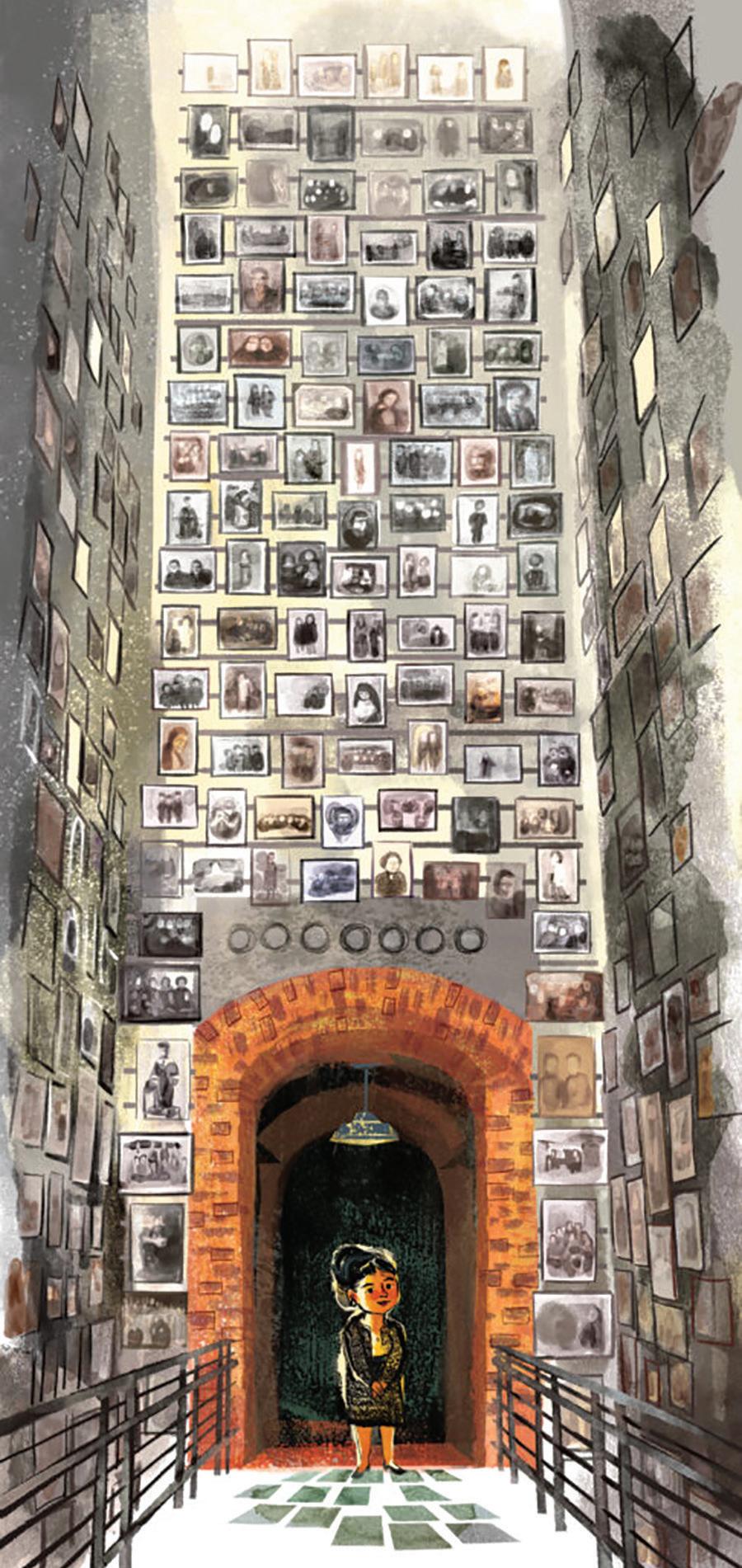

The Tower of Life describes her extraordinary 17-year endeavor to create that memorial and “shine a light” on the “beautiful lives” in her hometown by collecting and displaying photographs of its residents. One of the book’s final images shows the memorial with 1,500 photos from Eishyshok—called the “Tower of Life” (also known as the “Tower of Faces”)—at the United States Holocaust Memorial Museum in Washington, D.C.
Sally Opened Doors: The Story of The
First Woman Rabbi By Sandy Eisenberg Sasso. Illustrated by Margeaux Lucas (Apples & Honey Press)
In their previous picture books, the writer/illustrator team of Sandy Eisenberg Sasso and Margeaux Lucas have depicted the true stories of Judith
FROM ‘THE TOWER OF LIFE: HOW YAFFA ELIACH REBUILT HER TOWN IN STORIES AND PHOTOGRAPHS.’ ILLUSTRATION BY SUSAN GAL/COURTESY OF SCHOLASTIC BOOKS
‘The Tower of Life’
Kaplan Eisenstein, daughter of Rabbi Mordecai Kaplan, who in 1922 became the first American woman to celebrate a bat mitzvah; and Regina Jonas, who in 1935 in her native Berlin became the first woman to be ordained, privately, as a rabbi.

This third collaboration spotlight ing Jewish women’s achievements moves forward in time to the 1970s, “when doors were opening for women all across America,” high lighting the childhood and career of Sally Priesand, who was ordained at the Reform movement’s Hebrew Union College-Jewish Institute of Religion in June 1972.
Priesand became the first woman to complete rabbinical studies, commence a career in the rabbinate and lead her own congregation. Sally Opened Doors references some of the discrimination that she faced, includ ing the comments of one visitor to her congregation in New Jersey who said, “A woman rabbi? Outrageous! You start opening the door to change, and this is what happens.”
Priesand persevered, not only “open ing doors” for others, but also provid ing a valuable lesson, the text notes, in “getting on with” the work of fulfilling one’s dreams.
Fighting for YES! The Story of Disability Rights Activist Judith Heumann

 By Maryann Cocca-Leffler. Illustrated by Vivien Mildenberger (Abrams Books for Young Readers)
By Maryann Cocca-Leffler. Illustrated by Vivien Mildenberger (Abrams Books for Young Readers)
Born in 1947, acclaimed Jewish disability activist and educator Judith Heumann contracted polio at 18 months. After she recovered, an author’s note explains, “she was unable to walk and had limited use of her hands and arms.” Fighting for YES! opens with Heumann’s 1950s childhood, more than 30 years before the Americans with Disabilities Act became law.
Engaging text and illustrations depict the young Heumann in her wheelchair and demonstrate the challenges she encountered in daily life, including access to an elemen tary school education. One especially effective image reveals the obsta cles in going to restaurants and the library, in addition to school, by showing Heumann, seated in her wheelchair, looking up at an insur mountable set of stairs. “Judy heard the word NO much too often,” the accompanying text reads. “It didn’t seem fair.”
The narrative follows her teen years and emerging activism—her fight for institutions to say “yes” to accommo dations—culminating, in the 1970s, in the enactment of Section 504 of the federal Rehabilitation Act, an
Sarah Sassoon’s debut picture book draws from her Iraqi Jewish back ground to recount the story of young Shoham and her family in their native country, and what happens when, as Shoham’s mother says, “The time has come” for the family to leave Iraq for Israel. Shoham’s bond with her beloved Nana Aziza—including the “jingle-jangle of bangles” that the two wear on their wrists—helps smooth the transition to their new life.
The beautifully told story, with
ONE BOOK, ONE HADASSAH

Join us on Wednesday, December 7 at 7 PM ET as Hadassah Magazine Ex ecutive Editor Lisa Hostein interviews New York Times
best-selling author of The Plot , Jean Hanff Korelitz, about her latest book, The Latecomer. The novel centers around the dysfunctional Oppenheimers, a wealthy New York Jewish family struggling under the weight of secrets. Witty and multi faceted, The Latecomer explores betrayal and sexuality, religion and art, sibling bonds and rivalry. But most of all, it is an examination of what makes a family— genes, birth or cohabitation? Or is it love? Free and open to all. To register and read our full review of The Latecomer , go to hadassahmagazine.org/books
essential precursor to the ADA.
Shoham’s Bangle By Sarah Sassoon. Illustrated by Noa Kelner (Kar-Ben Publishing)
‘Sally Opened Doors’
‘Shoham’s Bangle’
51 NOVEMBER/DECEMBER 2022 I I hadassahmagazine.org
FROM ‘SHOHAM’S BANGLE’ ©2022 USED WITH PERMISSION OF KAR-BEN PUBLISHING, KARBEN.COM (TOP); FROM ‘SALLY OPENED DOORS: THE STORY OF THE FIRST WOMAN RABBI’/ ©2022 COURTESY OF APPLES & HONEY PRESS
ON YOUR SHELF: NEW JEWISH READS FOR THE COLDER MONTHS
By Sandee Brawarsky
The mega-talented writer and artist Maira Kalman presents, in radiant color, Women Holding Things (HarperDesign)— paintings and text describing women holding things that matter, whether a book, a petite pink teapot or a young daughter on her lap. Some hold court while others hold a grudge; the writer Natalia Ginzburg is portrayed “holding strong,” and Kalman’s grandmother is holding the weight of the world on her shoulders. Kalman’s brief texts are thought ful, autobiographical and powerful. This life-affirming book shines a light on women’s lives and how we all hold our humanity.
Language creates worlds, and Jerusa lem-born author Moriel Rothman-Zecher’s Before All the World (Farrar, Straus & Giroux) is an inventive novel that overlays Yiddish inflection and syntax onto English to bring to life a slice of America. Soon after Prohibition ends in 1933, Gittl and Leyb, the two sole Jewish survivors of a pogrom in their shtetl, or “dustvillage,” find each other in Philadelphia. They befriend Charles, a Black Yiddish-speaking gentleman who translates Gittl’s mayses , or stories, shown in the book. This is a story of loss—with pages of names and blessings of the lost, including the many unnamed—and hope, with deep truths about love, purpose and history. All three well-drawn characters choose to believe that “all the world is not darkness.”
A debut novel by Eden Robbins, When Franny Stands Up (Sourcebooks Land mark) is set in the early 1950s in Chicago— a postwar world where mobsters as well as antisemitism and racism lie barely under the surface. Protagonist Franny Steinberg wants to make people laugh, and she feels empowered, free, even magical when doing so. Her first attempt at stand-up comedy is when she bursts onstage (shades of
The Marvelous Mrs. Maisel ) in a torn brides maid’s dress at a women’s nightclub, amid a whirl of perfume, smoke and whiskey, in front of tough broads, lesbians and subur ban matrons alike. Trying again and again, Franny wrestles with her memories, her pain and her guts to conjure comedy. This dialogue-driven novel is daring, entertain ing and moving.
A multifaceted history that will appeal be yond the academic community, A Brilliant Commodity: Diamonds and Jews in a Modern Setting by Saskia Coenen Snyder (Oxford University Press) examines the global market for diamonds, from mining rough stones to trading gems to wearing brilliant jewels. Historian Coenen Snyder digs through international archives in her original research that highlights the role of Jewish entrepreneurs on several continents.
In an impassioned and personal book, Screaming on the Inside: The Unsus tainability of American Motherhood (Mariner), journalist and novelist Jessica Grose addresses the expectations, responsi bilities and related guilt and exhaustion that contemporary mothers have been feeling, particularly in light of the pandemic. An opinion writer at The New York Times who pens a newsletter on parenting, she inter views women of all backgrounds, along with historians, sociologists and policy experts, and advocates for meaningful change. She understands that there are many ways of raising healthy children, quoting her Opa, a small-town family doctor, who would say, “You cannot raise a daisy like an orchid.”
Sandee Brawarsky is a longtime columnist in the Jewish book world as well as an award-winning journalist, editor and author of several books, most recently of 212 Views of Central Park: Experiencing New York City’s Jewel From Every Angle.
colorful illustrations from Israeli artist Noa Kelner, depicts important aspects of the Middle Eastern Jewish experience, including the often urgent immigrations to Israel that followed the state’s establishment in 1948 due to antisemitic attacks and discrimi nation. An author’s note references Sassoon’s memories of times spent with her own grandmother, who “retold the story of Operation Ezra & Nehemiah, when she was airlifted to Israel in 1951,” along with her family members and 120,000 other Iraqi Jews.
Maybe It Happened This Way: Bible

Stories Reimagined By Leah Rachel Berkowitz and Erica Wovsaniker. Illustrated by Katherine Messenger (Apples & Honey Press)
This collection opens with an informal definition of the concept and use of midrash: “Did you ever try to make up an explanation for a plot hole in your favorite series? Or wonder what two characters from different universes might say to each other if they met? There have been generations of people who have asked those same kinds of questions about the Torah.”
The 20 stories included in this accessible reader use midrash to discuss and describe characters who have received plenty of attention— Adam and Eve, Rachel and Leah—as well as those who may be less familiar. (I was middle-aged before I encountered Machlah, Milcah, Noa, Tirzah and Hoglah, aka Zelophehad’s Daughters; in this book, Hoglah narrates the sisters’ story.)
If I had to choose a favorite, I’d go
BOOKS
52 NOVEMBER/DECEMBER 2022 I I hadassahmagazine.org
with the chapter titled “Sisters Stick Together,” which depicts matriarchs and sisters Leah and Rachel as allies rather than the more traditional portrait of them as rivals. An extensive discussion guide highlights values, source materials for the retell ings and more.
Tizzy the Dizzy Dreidel By Allison Marks and


Wayne Marks. Illustrated by Francesca Assirelli (Kar-Ben Publishing)
Poor Tizzy! Spinning makes this dreidel dizzy, and everyone in the house seems to know it. When the family gathers to play the dreidel game on the first night of Hanuk kah, Tizzy is certain that no one will choose her. “They’d only pick the

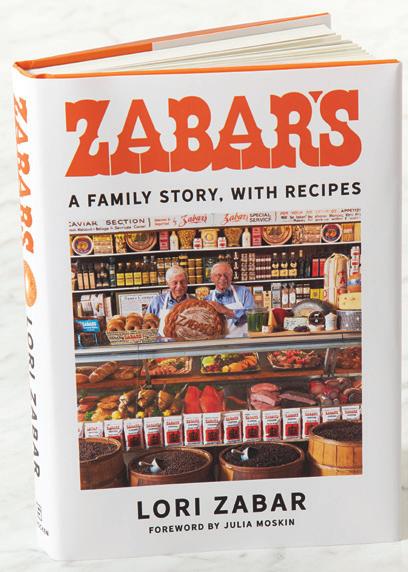
strongest,” she worries. But when 4-year-old Sara “plucks Tizzy off the floor,” a new Hanukkah miracle ensues.
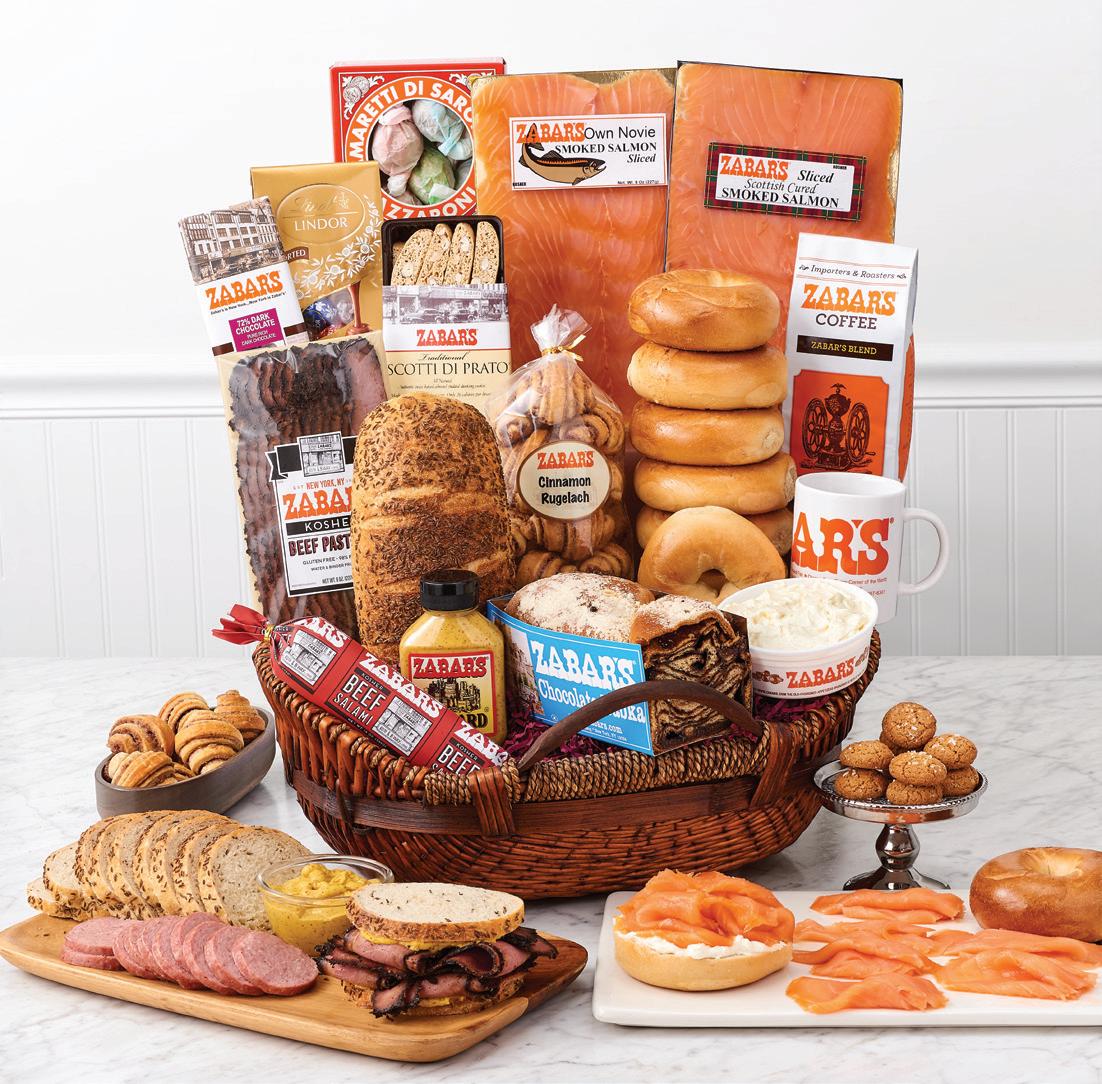
This is a sweet, clever story with a meaningful conclusion: “When winter’s chill has filled the air/ and dreidels start their dance,/ why not pick a dizzy one/ who only wants a chance?”
Best Kids’ Hanukkah Jokes Ever! By Highlights (Highlights Press)
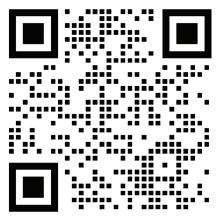
“Knock, knock. Who’s there? Noah. Noah who?
Noah good Hanukkah joke?”
So begins this collection of over 500 jokes, puns and riddles that will provide young comedians with a trove of new material to recite over the family table while enjoying latkes or jelly doughnuts. Note that despite the many Hanukkah-centric chapters, with titles such as “Menorah Mania,” “Latke Laughs” and “Maccabee Mirth,” the book also includes clusters of “Tu Bishvat Tee-Hees,” “Shavuot Sillies” and plenty more for year-round entertainment.
Erika Dreifus has published two books for adults: Birthright: Poems and Quiet Americans: Stories. A fellow in the Sami Rohr Jewish Literary Institute, she lives in New York City and writes and teaches on Jewish and literary subjects (erikadreifus.com)
A NEW YORK TRADITION SINCE 1934 Zabar’s & Co., Inc. | 2245 Broadway, NY, NY 10024 212-787-2000 (in NYC) or 800-697-6301 | Zabars.com ZABAR’S: A FAMILY STORY, WITH RECIPES by LORI ZABAR FREE USPS SHIPPING #B110178 | $19.95 More details at Zabars.com/Book ZABARS.COM/GIFTS GIFT BASKETS & BOXES START YOUR OWN TRADITION. GIVE ZABAR’S! GO TO ZABARS.COM 53 NOVEMBER/DECEMBER 2022 I I hadassahmagazine.org
BOOKS FOR TWEENS AND TEENS
Salt
& Honey:
Jewish Teens on Feminism, Creativity, and Tradition Edited by Elizabeth Mandel, Emanuelle Sippy, Maya Savin Miller and Michele Lent Hirsch with the jGirls+ Magazine Collective (Behrman House)
“We are self-identifying Jewish girls, young women, and nonbinary teens. Because we are so often misunder stood, airbrushed, or flat-out ignored, to tell our own stories is both a revolt and a victory…. Here, we embrace the salt and the honey, the sting and the sweetness, of our lives.”

This statement of revolution, iden tity, critique and acceptance in the preface to Salt & Honey sets up the challenges and wisdom offered in this book of 78 works—poems, essays,
short stories and visual art— from 62 young contributors.
Collected from jGirls+ Magazine, an online publication and community, the book is divided into six chapters whose themes are tradition, bigotry, family, growing up, race and religion. Readers are introduced to the bat mitzvah musings of the great-great-grandniece of Judith Kaplan Eisenstein, the first girl to have a bat mitzvah, and the Jewish coming-of-age celebration of a young woman with cerebral palsy.

There are essays about struggles with eating disor ders and poetry from those coming to grips with their gender identity and sexual ity. There are paintings that reflect the diversity of the Jewish community and a photograph that expresses the turmoil of a teenager suffering from anxiety.
This collection is a vivid show case of the innermost thoughts and raw emotions as well as the deep connection to family and heritage of a generation growing up in a time of profound change.
—Leah Finkelshteyn
Leah Finkelshteyn is senior editor at Hadassah Magazine.
in year
Trendsetter
Policy forms
available in
subject
underwriting. In most states, in the event of suicide during the first two policy years, death benefits are limited only to the return of premiums paid. Suicide is no defense to payment of life insurance benefits, nor is suicide while insane a defense to payment of accidental death benefits, if any, under this policy where the policy is issued to a Missouri citizen, unless the insurer can show that the insured intended suicide when s/he applied for the policy, regardless of any language to the contrary in the policy. Transamerica Life Insurance Company is rated A (Excellent) by A.M. Best for financial strength as of September 12, 2019. A is the third highest of 16 ratings awarded by A.M. Best, a leading independent rating service that evaluates insurance companies’ financial strength and ability to meet obligations to policyholders. Call The Leibowitz Group at 888-448-LEBO for a no obligation quote.**
BOOKS
‘SALT & HONEY: JEWISH TEENS ON FEMINISM, CREATIVITY, AND TRADITION’/COURTESY OF ‘JGIRLS+ MAGAZINE’ AND BEHRMAN HOUSE 10 Year Level Premium Policies * 20 Year Level Premium Policies * Issue Age $100,000 $250,000 $1,000,000 Issue Age $100,000 $250,000 $1,000,000 30 Male $ 85 00 $ 112 50 $ 220 00 30 Male $ 104 00 $ 150 00 $ 370 00 Female 79 00 100 00 170 00 Female 95 00 132 50 300 00 40 Male 100 00 137 50 270 00 40 Male 131 00 207 50 590 00 Female 92 00 127 50 250 00 Female 117 00 177 50 490 00 50 Male 171 00 285 00 830 00 50 Male 257 00 480 00 1,580 00 Female 146 00 235 00 680 00 Female 210 00 365 00 1,140 00 15 Year Level Premium Policies * 30 Year Level Premium Policies * Issue Age $100,000 $250,000 $1,000,000 Issue Age $100,000 $250,000 $1,000,000 30 Male $ 92 00 $ 120 00 $ 250 00 30 Male $ 145 00 $ 225 00 $ 650 00 Female 86 00 112 50 220 00 Female 131 00 192 50 520 00 40 Male 109 00 152 50 400 00 40 Male 203 00 337 50 1,110 00 Female 103 00 147 50 390 00 Female 178 00 282 50 890 00 50 Male 212 00 372 50 1,230 00 50 Male 425 00 812 50 2,890 00 Female 171 00 287 50 900 00 Female 342 00 622 50 2,120 00 *Annual premiums shown are for preferred plus nonsmoker class (preferred nonsmoker class for $100,000 face amounts) Equivalent premiums are available for other underwriting classes, ages, face amounts and payment modes. Trendsetter® Super 10, Trendsetter® Super 15, Trendsetter® Super 20, and Trendsetter® Super 30 are
life insurance
year 11 for
Super
in year 16 for
Are YOU Paying TOO MUCH For LIFE INSURANCE?
you
(5326)
54 NOVEMBER/DECEMBER 2022 I I hadassahmagazine.org
‘Feminine Strong’ by Rachel Kaufman
FROM
term
policies issued by Transamerica Life Insurance Company, Cedar Rapids, IA 52499. Premiums increase annually starting in
Trendsetter
10,
Trendsetter Super 15, in year 21 for Trendsetter Super 20, and
31 for
Super 30.
and numbers may vary, and these policies may not be
all jurisdictions. Insurance eligibility and premiums are
to
Transamerica Life Insurance Company offers term life insurance policies, which guarantee that the premiums
pay will remain level for 10, 15, 20, or 30 years.
**No quotes are final until underwriting is completed.
Ethel’s Song: Ethel Rosenberg’s Life in Poems
By Barbara Krasner (Calkins Creek)
Ethel’s Song by Barbara Krasner opens with the line, “Wash out your baby brother’s diapers.” This is a portentous beginning for the fictional first-person story based on the life of Ethel Greenglass Rosenberg, from her Lower East Side childhood to her 1953 execution for espionage along side her husband, Julius Rosenberg.

Although the Rosenberg case remains a subject of debate, unearthed documents and further testimony show that Ethel was falsely accused of typing out United States nuclear secrets to be passed to the Soviets. Her beloved younger brother, David Greenglass, known here as
Dovey, had lied about her involve ment during the trial.
Krasner, who has a master’s degree in children’s writing and a Ph.D. in Holocaust and genocide studies, has written numerous books for young people, including several in verse. And because Ethel Rosenberg was an accomplished singer, poetry is an apt lyrical form for Krasner to tell her story.
Most of the poems are free verse, although some have more complex forms of repetition and rhyme. A repeated motif throughout is Ethel’s Four Questions: “Why does a govern ment allow its people to live in such poverty?/ Why can’t we all believe in whatever makes sense to us?/ Why must there be hate in the world?/
Why must there be war?”
Indeed, the young Ethel was a Communist and labor activist even before she met Julius Rosenberg. Recently declassified government records reveal that her husband recruited spies for the Soviet Union— which, Krasner writes, Ethel knew. Julius “compiles documents, draw ings, specifications,” Ethel says in the book. “He takes them to this Russian man with a code name.”
Yet Krasner’s Ethel blames her prosecution and conviction on innocent mistakes and the actions of others. Her signature on a Communist Party petition was just “A knock on the door.… I scribble my name.” When she tells us that Julius has recruited Dovey “into
Help continue to provide vital services to refugees and asylum seekers.
55 NOVEMBER/DECEMBER 2022 I I hadassahmagazine.org
HIAS is the international Jewish organization that provides critical support to refugees in the United States, Ukraine, and countries around the world. hias.org
Foreword, STARRED REVIEW GROUNDWOODBOOKS.COM @GROUNDWOODBOOKS




CHARITABLE SOLICITATION DISCLOSURE STATEMENTS
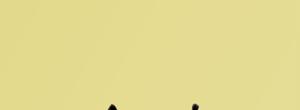
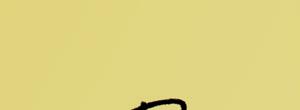

HADASSAH, THE WOMEN’S ZIONIST ORGANIZATION OF AMERICA, INC. 40 Wall Street, 8th Floor – New York, NY 10005 – Telephone: (212) 355-7900 Contributions will be used for the support of Hadassah’s charitable projects and programs in the U.S. and/ or Israel including: medical relief, education and research; education and advocacy programs on issues of concern to women and that of the family; and support of programs for Jewish youth. Financial and other information about Hadassah may be obtained, without cost, by writing the Finance Department at Hadas sah’s principal place of business at the address indicated above, or by calling the phone number indicated above. In addition, residents of the following states may obtain financial and/or licensing information from their states, as indicated. DC: The Certificate of Registration Number of Hadassah, The Women’s Zionist Organization of America, Inc. is #40003848, which is valid for the period 9/1/2021-8/31/2023. Registration does not imply endorsement of the solicitation by the District of Columbia, or by any officer or employee of the District. FL: A COPY OF THE OFFICIAL REGISTRATION AND FINANCIAL INFORMATION FOR HADASSAH, THE WOMEN’S ZIONIST ORGANIZATION OF AMERICA, INC. (#CH-1298) AND HADASSAH MEDICAL RELIEF ASSOCIATION, INC. (#CH-4603) MAY BE OBTAINED FROM THE DIVISION OF CONSUMER SERVICES BY CALLING TOLL-FREE 1-800-HELP-FLA, OR ONLINE AT www.FloridaConsumerHelp.com. KS: The official registration and annual financial report of Hadassah, The Women’s Zionist Organization of America, Inc. is filed with the Kansas Secretary of State. Kansas Registration #237-478-3. MD: A copy of the current financial statement of Hadassah, The Women’s Zionist Organization of America, Inc. is available by writing 40 Wall Street, 8th Floor, New York, New York 10005, Att: Finance Dept., or by calling (212) 355-7900. Documents and information submitted under the Mary land Charitable Solicitations Act are also available for the cost of postage and copies, from the Maryland Secretary of State, State House, Annapolis, MD 21401 (410) 974-5534 MI: Hadassah, The Women’s Zionist Organization of America, Inc. MICS #13005/Hadassah Medical Relief Association, Inc. MICS # 11986/ The Hadassah Foundation, Inc. MICS #22965. MS: The official registration and financial information of Hadassah, The Women’s Zionist Organization of America, Inc. may be obtained from the Mississippi Secre tary of State’s office by calling 1(888) 236-6167. NJ: INFORMATION FILED BY HADASSAH, THE WOMEN’S ZIONIST ORGANIZATION OF AMERICA, INC. AND HADASSAH MEDICAL RELIEF ASSOCIATION, INC. WITH THE NEW JERSEY ATTORNEY GENERAL CONCERNING THIS CHARITABLE SOLICITATION AND THE PERCENTAGE OF CONTRIBUTIONS RECEIVED BY THE CHARITY DURING THE LAST REPORTING PERIOD THAT WERE DEDICATED TO THE CHARITABLE PURPOSE MAY BE OBTAINED FROM THE ATTORNEY GENERAL OF THE STATE OF NEW JERSEY BY CALLING (973) 504-6215 AND IS AVAILABLE ON THE INTER NET AT www.njconsumeraffairs.gov/charity/chardir.htm. NC: FINANCIAL INFORMATION ABOUT HADASSAH, THE WOMEN’S ZIONIST ORGANIZATION OF AMERICA, INC. AND A COPY OF ITS LICENSE ARE AVAILABLE FROM THE STATE SOLICITATION LICENSING BRANCH AT 919-8145400 OR FOR NORTH CAROLINA RESIDENTS AT 1-888-830-4989. PA: The official registration and financial information of Hadassah, The Women’s Zionist Organization of America, Inc., Hadassah Medi cal Relief Association, Inc., and The Hadassah Foundation, Inc. may be obtained from the Pennsylvania Department of State by calling toll free, within Pennsylvania, 1(800) 732-0999. VA: A financial statement of the organization is available from the State Division of Consumer Affairs in the Department of Agriculture & Consumer Services, P.O. Box 1163, Richmond, VA 23218, Phone #1 (804) 786-1343, upon request. WA: Hadassah, The Women’s Zionist Organization of America, Inc., Hadassah Medical Relief Association, Inc. and The Hadassah Foundation, Inc. are registered with the Washington Secretary of State. Financial disclosure information is available from the Secretary of State by calling 800-332-GIVE (800-332-4483) or visiting www.sos.wa.gov/charities. WV: West Virginia residents may obtain a summary of the registration and financial documents of Hadassah, The Women’s Zionist Organization of America, Inc. from the Secre tary of State, State Capitol, Charleston, WV 25305. WI: A financial statement of Hadassah, The Women’s Zionist Organization of America, Inc. disclosing assets, liabilities, fund balances, revenue, and expenses for the preceding fiscal year will be provided to any person upon request. ALL STATES: A copy of Hadassah’s latest Financial Report is available by writing to the Hadassah Finance Dept., 40 Wall Street, 8th Floor, New York, New York 10005. REGISTRATION DOES NOT CONSTITUTE OR IMPLY ENDORSEMENT, APPROVAL, SANCTION OR RECOMMENDATION BY ANY STATE. Charitable deductions are allowed to the extent provided by law. Hadassah shall have full dominion, control and discretion over all gifts (and shall be under no legal obligation to transfer any portion of a gift to or for the use or benefit of any other entity or organization). All decisions regarding the use of funds for any purpose, or the transfer of funds to or for the benefit of any other entity or organization, shall be subject to the approval of the Board or other governing body of Hadassah. The Hadassah Foundation, Inc. is a supporting organization of Hadassah, The Women’s Zionist Organization of America, Inc. September 2022




his network,” she adds: “I prefer to stay out of it/ I don’t need a code name other than Mommy.”
When Julius and Ethel are accused of passing atomic secrets, she insists they had no knowledge of Dovey’s wartime work on the Manhattan Project.
Krasner’s collection is exten sively researched and packed with fascinating details, yet it feels a bit problematic: How are young readers, perhaps encountering the Rosenbergs for the first time, to know which parts of the story are truth and which are conjecture?


This “novel in verse” is explicit that Ethel was a Communist, not a spy. But the historical record is still controversial, despite general agreement that neither Rosenberg deserved execution.
In addition, although all the char acters in this tragic American story are Jewish—the accused, lawyers, witnesses and judge—Krasner makes little mention of either Judaism or antisemitism. Ethel says Kaddish over postwar reports of Jewish corpses at Bergen-Belsen, but her commit ment to helping the Soviets during the war is about fighting fascism, not protecting Jews. Nevertheless, Krasner presents Hitler as a prime determinant of Ethel’s choices.
“How could helping/ the Soviet Union/ defeat Hitler,” Ethel asks, “make us the bad guys?”
—Elizabeth Edelglass
Elizabeth Edelglass is a fiction writer, poet and book reviewer living in Connecticut.
Crossword Puzzle on page 49
BOOKS
“An affecting account of the Dreyfus Affair that highlights the importance of acting against injustices.”
56 NOVEMBER/DECEMBER 2022 I I hadassahmagazine.org
FICTION
Victorious
By Yishai Sarid. Translated by Yardenne Greenspan (Restless Books)

At first blush, the setup for celebrated Israeli author Yishai Sarid’s sixth novel, Victorious, seems like a cliché perfect for film or television. Abigail, a psychologist for the Israel Defense Forces, herself the daughter of a therapist, seduces a high-ranking army commander so that he will father a child with her. Despite the salacious opening, Victo rious is a nuanced, thoughtful and even darkly humorous investigation of one of Israel’s bedrock institu tions—the IDF and compulsory military service.
Abigail is now a middle-aged single mom with a son, Shauli, who is preparing for the army. She has spent most of her career as a psychologist in the military, considered an expert in training the troops for time in captivity or pushing them to get over their fears of fighting and killing.
As she says when talking to the army chief of staff about one soldier she had treated, “I’d drained out the pus of doubt and fear with the scalpel of my words, and now he was clean.”
Her therapist father, however, believes his daughter has betrayed her calling.

“The military is a totalitarian cohesion that erases the individual,” he tells her, “and in our profession the individual is all that exists, and your loyalty toward them must be absolute. What are you hoping to achieve?”
With her own son joining an elite combat unit at a time when war


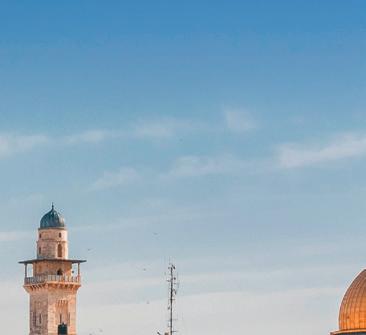
PERPETUAL YAHRZEIT
Kaddish will be recited annually for your loved one in perpetuity in the Fannie and Maxwell Abbell Synagogue at Hadassah Medical Center beneath Marc Chagall’s iconic stained glass windows.
ENHANCED PERPETUAL YAHRZEIT
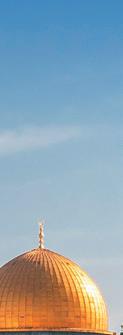
Kaddish will be recited for your loved one daily for 11 months after burial, after which Kaddish will be recited annually.


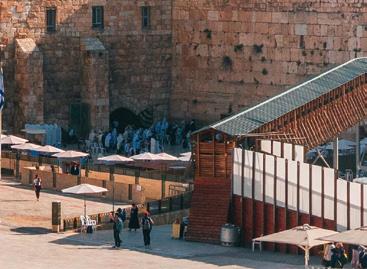
ADVANCE YAHRZEIT
A reservation to ensure Kaddish will be recited for you and your loved ones upon their death. Available in standard and Enhanced Perpetual Yahrzeit.
MAR 14 – 26 MAR 14 – 29 • MAY 2 – 14 MAY 2 – 17 • MAY 9 – 21 MAY 9 – 24 • OCT 10 – 22 OCT 10 – 25 • OCT 17 – 29 OCT 17 – NOV 1 • OCT 31 – NOV 12 OCT 31 – NOV 15 JUN 13 – 25 JUN 13 – 28 • JUN 27 – JUL 9 JUN 27 – JUL 12 • AUG 1 – 13 AUG 1 – 16 • AUG 15 – 27 DEC 19 – 31 Adults Only Tours 13-DAY & 16-DAY TOURS • Family & Bar/Bat Mitzvah Tours 13-DAY & 16-DAY TOURS • ISRAEL—Our Experience Creates Yours! Re-Visitor Tours 13-DAY TOURS SMALL GROUP ADULT TOURS MAY 2 or OCT 31 Private Tours TWO OPTIONS 1. Take Our Scheduled Group Tour by Private Car 2. Create your own completely customized tour For your detailed brochure visit margaretmorsetours.com or call (954) 458-2021 FAMILY OWNED & OPERATED SINCE 1980 *Free Land Tour for the Bar/Bat Mitzvah celebrant *RESTRICTIONS APPLY Join us in 2023 for the trip of a lifetime! ISRAEL AT 75 WHO
WILL SAY KADDISH? HADASSAH’S PERPETUAL YAHRZEIT PROGRAM ENSURES THAT KADDISH WILL BE RECITED IN JERUSALEM FOR YOUR LOVED ONES. EVERY YEAR. FOREVER.
HADASSAH, THE WOMEN’S ZIONIST ORGANIZATION OF AMERICA, INC ©2022 Hadassah, The Women’s Zionist Organization of America, Inc. Hadassah, the H logo, and Hadassah the Power of Women Who Do are registered trademarks of Hadassah, The Women’s Zionist Organization of America, Inc. The solicitation disclosure on page 56 is incorporated in this advertisement.
hadassah.org/yahrzeit For further information, or to establish a Yahrzeit, call 877.212.3321 or email yahrzeit@hadassah.org.
Yahrzeit Ad_onethird_2022.indd 1 10/3/22 11:04 AM 57 NOVEMBER/DECEMBER 2022 I I hadassahmagazine.org
appears imminent, will Abigail start questioning her focus on victory at all costs?
Sarid presents the dilemmas facing Abigail as well as other characters
in thought-provoking asides as he examines the scars left on those who have gone through the military.

One of her patients, years later, remains traumatized by his battle








FRANCISCO BOOK REVIEW
Available in print, Audible, Kindle and on Amazon. Visit andylazris.com to learn more.

A two-part epic journey of Jewish History told through the voice of Yadel, a Roman Jew who travels through history and promotes Hannukah across the world, and across time.
Yadel lives during the most tumultous time in Jewish history, the “Jewish Revolt against Rome”. He mingles with some of the more famous, and infamous, Jews and Romans helping forge a new path of Judaism after the Temple’s destruction; A path we still live with today.
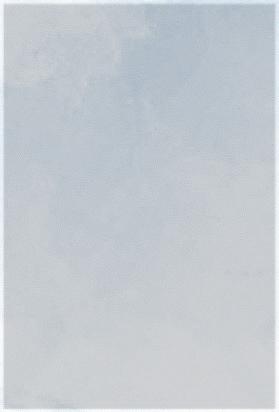

experiences and blames those who sent him into combat, including Abigail and her therapist colleagues at the IDF. Abigail also keeps in touch with several former patients, including a male combat soldier who confesses, after years of therapy, the thrill he felt in killing and his attempts to recapture that feeling in post-army life. Indeed, he has harmed his wife and daughter in pursuit of the level of intensity he felt while in the army.
This is not Sarid’s first novel critiquing aspects of Israeli society. The Memory Monster explored the impact of Holocaust memorials and memory on Israel’s culture. Now, in Victorious, he examines the contra dictions and moral ambivalence at the heart of his nation, tackling military service, PTSD, war and ther apy to create a page-turner for the thinking reader.
—Beth Kissileff
Beth Kissileff is co-editor of Bound in the Bond of Life: Pittsburgh Writers Reflect on the Tree of Life Tragedy and author of the novel Questioning Return
The latest in Richard Zimler’s Sephardic Cycle—a series of novels that explore the lives of an extended Portuguese Jewish family across several centuries—The Incandescent Threads interweaves history and mysticism, ghosts and lovers, tragedy and transcendence. Readers already familiar with Zimler’s exceptional gift for multigenerational storytelling will find this work among his best; those new to his work will surely want to make up for what they have been missing. The textured themes of exile, secrecy, mysticism, resilience and illumination echo in each of the volumes, making Zimler one of

MOI LUCIAN ICHS ANNA OTHELLO CLOT SIGMUNDFREUD EATA STEELES SOOTIER RAG FRITZPERLS ATI SEEN RAES PSYCHOTHERAPY LARAINE LENE LISA OPENSEA DRAINER THEO SMOG MILGRAM JOYCEBROTHERS ALSO TRAS TDS ERICHFROMM RAY MATINEE TERESAS ABRE VIKTORFRANKL LIEN ENEMIES ROAR LAST REVILE BSS A N S W E R S Crossword Puzzle on page 49 BOOKS
The Incandescent Threads By Richard Zimler (Parthian Books)
our
“Andy Lazris beautifully recounts Jewish history in an engaging, humorous manner through his novel...”
—SAN
58 NOVEMBER/DECEMBER 2022 I I hadassahmagazine.org
AMAZON BEST-SELLER
most important and essential modern Jewish writers.
The American-born author, who has been living in Portugal for more than three decades, brings intri cate depth to the members of his imagined Zarco family, who endure epic losses as well as sensational metamorphoses. In The Incandescent Threads, Benjamin “Benni” Zarco and his cousin Shelly are the only two members of their family to survive the Holocaust, and each man struggles with a variation of survivor guilt— from deliberately suppressing the past to fiercely engaging in sexual freedoms.
The six sections of the book are nonlinear and told through multiple narrators who are an array of Benni and Shelly’s friends and relatives.
They recount the cousins’ move from a Poland decimated by World War II to contemporary New York City and Boston. The novel’s core questions explore what it means to be haunted as well as healed by our ancestors.
Neuroscientists are confirming what many already know from astute self-awareness—that catastrophic experiences shape not only those who live through them, but also their descendants. Zimler’s characters reveal this truth in their own epiphanies.
“While holding the receiver in my hands, listening to the dial tone, I continued counting,” thinks Benni’s son, Eti, of the silence on the phone
Hanukkah Gifts

after he comes out to his father. “I pictured my future self, looking back at this moment, and remembering that it was precisely at the count of twelve that I’d learned that I was separate from everything in the world, but most especially from my father.”
Page by lyrical page, Zimler offers insight into the costs of untold suffering alongside the rewards of passionate love. Shimmering through every scene is an understanding of human capacities for profound sorrow as well as stubborn hope.
 —Elizabeth Rosner
—Elizabeth Rosner
Elizabeth Rosner is the author of five books, most recently, Survivor Café: The Legacy of Trauma and the Labyrinth of Memory. Her debut novel, The Speed of Light, won Hadassah Magazine’s Ribalow Prize in 2002.
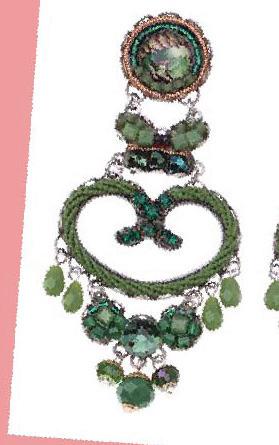

S ETTY GALLERY
Support Israeli Jewelry Designers and Look Great Doing it! Since 2013 SettyGallery.com has been bringing handmade designer jewelry to women worldwide via their online store. SettyGallery.com
HANUKKAH M ENORAH NAPKIN R INGS

Bring sparkles and smiles to your dinner table. Gift boxed 4 piece set in polished GOLD or SILVER (with opposing crystal flames). BONUS: we’ll refund your USPS parcel select ground shipping charges. Order from AcrylicGiftware.com or call 972-345-0472

YOUR PERSONAL B IOGRAPHY

Will your grandchildren know your story? Capture Your Story turns your most important memories and messages into beautiful keepsake Life Story books, to be treasured now and by future generations.
CaptureYourStory org
BOBBLE MENORAH AND DREIDEL
Don’t miss out on these perfect, unique gifts for all ages. A great decoration. Each bobble is individually numbered and comes in a collector’s box. Only $25 each plus $8 fl at rate shipping.
To order call 800-414-1482 or online at https://bit.ly/bobblehanukkah
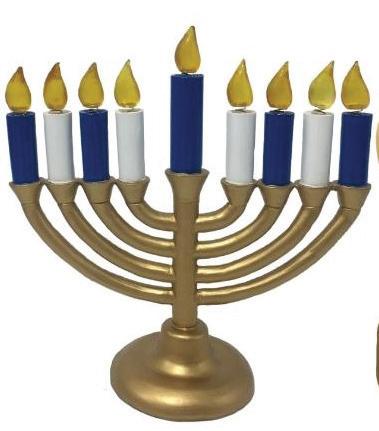
1 3 4 2 59 NOVEMBER/DECEMBER 2022 I I hadassahmagazine.org
1 2 3 4
Guide to Jewish Literature






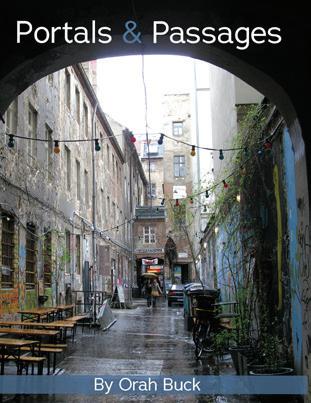
Order these books directly through the Hadassah Magazine website! Just go to Hadassahmagazine.org and click on Guide to Jewish Literature.

H ERSHEL AND THE HANUKKAH GOBLINS (GIFT EDITION)
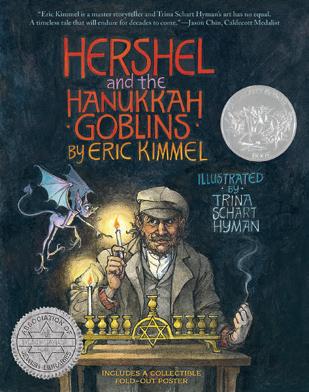
Eric A. Kimmel
For more than thirty years, this clever story of a folk hero outwitting dreadful goblins has been a staple of family Hanukkah celebrations. Adapted from a Ukrainian folktale, with an imaginative twist from master storyteller Eric Kimmel and featuring the timeless illustrations of Caldecott Medalist Trina Schart Hyman, Hershel and the Hanukkah Goblins is a true classic of children’s literature. This elegant gift edition includes beautiful foil detailing, slipcase, poster with the evocative artwork and special afterword. Published by Holiday House Books. Available on Bookshop.org and wherever books are sold.


THE U NWANTED





Peter Clenott
Germany has just invaded Poland; 14-year-old Hana Ziegler, the product of an illicit a air, is being driven by her grandfather and her psychiatrist to a euthanasia center; 16year-old Silke Hartenstein graces the covers of Nazi propaganda magazines; Avi Kreisler is a Munich police detective rounded up for Dachau; David McAuli e’s patrician father wants his eldest son elected first Catholic president of the United States. In the aftermath of war, revenge brings these four people together in ways unimaginable.
Available on Amazon and Barnes & Noble.

PRAIRIE SONATA


Sandy Rabin
Named one of the Best Books of 2021 by Kirkus Reviews. “A compelling work…poignant and eloquent.” For ages 13 to 110. The story of Mira Adler and what she learns about life and love from her Yiddish and violin teacher, Chaver B, an intriguing and paradoxical immigrant from Prague who harbors a painful secret.

Winner of the Independent Press Award.

Great for book clubs. www.PrairieSonata.com.

WOMAN ON FIRE
Lisa Barr

This New York Times bestseller is a gripping tale of a savvy, young journalist who gets embroiled in a major international art scandal centered around a Nazilooted masterpiece, forcing a showdown between passion and possession, lovers and liars, history and truth. Is fi nding the painting and exposing its dark history worth the young reporter’s life? This propulsive thriller forces readers to question where the line should be drawn between the pursuit of justice and the hunt for revenge. Actress Sharon Stone is set to produce and star in the fi lm adaptation of the novel. Available wherever books are sold.
G IRL IN THE WALL Marilyn Gottlieb



If you love the Catskills, this is the book for you. When an ultrafashionable modern-day woman renovates a boutique on Madison Avenue, she finds a skeleton. To learn who it is, she must explore the lives of a Jewish immigrant family who lived above the store in the 1950s. This stand-alone sequel to Dance Me Younger, by Marilyn Gottlieb, is available on Amazon.
PORTALS AND PASSAGES Orah Buck














Behind her camera, photographer Orah Buck absorbed what she saw in Eastern Europe. Within the context of her love of Judaism, the Jewish people and the Hebrew language, she created an extensive collection of photographs. From Holocaust-abandoned shuls to rebuilt synagogues, old-world shtetl farm communities to modern apartment blocks, she captured this spirit with love and awe. The collection shows a historic footprint of Judaism as well as passages of Jewish heritage, emotion, and devotion. Throughout it all is the stark reality of the Holocaust, which must never be forgotten or diminished. Available on Amazon.
THE PRISONER AND THE WRITER
Sophie Casson
Accused of betraying France in 1895, Captain Alfred Dreyfus is exiled to a prison on Devil’s Island, far from his wife and children. But what if he’s innocent, the famous writer Emile Zola wonders? Is Alfred a traitor to France…or a victim of anti-semitism? Emile knows that it is his DUTY to help. He pens the famous letter “J’Accuse …!” explaining that Alfred was blamed, then convicted … only because he was Jewish. A powerful middle-grade story told from the perspectives of two men whose courage changed the world.
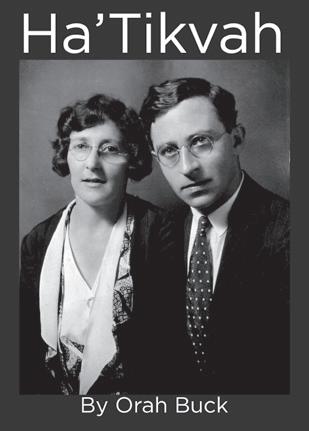
At all bookstores.
HA’ TIKVAH Orah Buck
A story about family, resilience, strength, determination, religion, culture, and history… but mostly of hope –Ha’Tikvah – in survival, in culture, in literature, in a language once left for dead. Orah Buck’s father, Dr. Abraham Wigser, began life as an orphan in Jerusalem. He became an important activist for Jewish culture, determined that the Jewish story and language must never be neglected in the perilous times leading up to and during WWII. The great gift of his words, illuminated in his many letters, is an integral part of history. His legacy echoes through the generations. Available on Amazon.

THE VILLAGE T WINS
Izzy Abrahmson
“In the spirit of Sholem Aleichem… identical twins, confused from birth” – AudioFile. The Village life is rarely uneventful, but with Abraham and Adam Schlemiel, everything gets crazier. A delicious page-turning epic comic novel you won’t want to end. Jewish Book World: “The mix-ups are many and the potential for laughter abundant. Purchase on Amazon or izzyabe.com.
ADVERTISEMENT
a n ove M a ril yn Go ttl ie b l
BAT YAM BEATS: THE RUSSIAN I MMIGRANT E XPERIENCE IN ISRAEL
Orah Buck
Photographer Orah Buck chronicled the life and experiences of immigrants of all ages arriving at Bat Yam, Israel, from Russia, in the second half of the 20th century. In this story in photographs, she captured moments and activities in daily life as the Russians retained their culture while they went about their new lives. Available on Amazon.



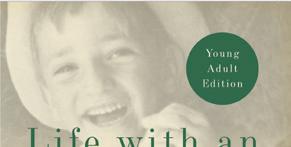
LIFE WITH AN ACCENT
Marilyn Gottlieb
Teens will enjoy reading a child’s viewpoint of moving from Berlin to the British Mandate of Palestine before it became Israel, then starting over again in America. Three countries, three languages, in a life a ected by political happenings. The journey continues into adulthood with historical tidbits and emotional insights that will inspire courage. Life with an Accent , by Marilyn Gottlieb, is available on Amazon.
ECOWARRIORS: THE BLUFFS OF BARABOO
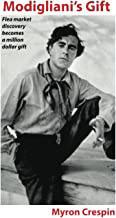
Sandra Dreis

“
An engaging lighthearted read that o ers a profoundly powerful message about the environment” –Kirkus Review. This YA contemporary fantasy follows four teenagers’ mission and Grandpa’s hopes to save their community from ecological collapse. Silver Nautilus Award winner and iUniverse Rising Star book is available online at Amazon and B&N.com.
MODIGLIANI’S
G IFT
Myron Crespin
A well-told story of an Italian Sephardic artist and his famous impressionist style of elongated faces. The book is an adventure story of fi nding a fl ea market Haggadah, becoming a million-dollar gift. Available on Amazon.

A DAUGHTER’S K ADDISH: MY YEAR O F G RIEF, D EVOTION AND H EALING
Sarah Birnbach

A woman breaks with Jewish tradition to honor her late father in this moving memoir. Birnbach commits to reciting the Mourner’s Kaddish twice a day in synagogue for eleven months, a Jewish mourning ritual historically reserved for sons. A novice worshipper and single working mother, she encounters many obstacles—including genderbased objections to her prayer practice—but perseveres on a tumultuous path to true healing. Available at Amazon.
E SCAPE TO THE TATRAS –A BOY, A WAR AND A LIFE I NTERRUPTED
Oscar Sladek with Corinne Joy Brown
“
A masterpiece of love and survival” – James Carroll (Constantine’s Sword). “A gripping pageturner… as dramatic and powerful an account of the Holocaust era as a reader is likely to fi nd.” Chris Leppek - Intermountain Jewish News. The Štaub family; Irene, Frici, and young son Oskar, citizens of Prešov, Slovakia, flee into the forbidding Tatra mountains in the winter of 1944. Young Osi finds the courage and resiliency to cope with physical and emotional challenges far beyond his years. EscapeToTheTatras.com and Amazon.
MODERN J EWISH COMFORT FOOD


Shannon Sarna

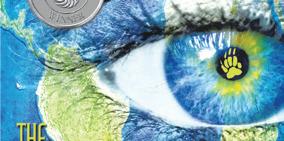


A satisfying collection of Jewish comfort food from across the Jewish global Diaspora. In her second cookbook, The Nosher editor Shannon Sarna shares many traditional homestyle dishes plus exciting variations for the modern American dinner table. Her Basic Tomato & Pepper Shakshuka is cleverly interpreted into a deep-dish pizza; Classic Potato Latkes invite vegetable-focused variations such as Beet & Carrot and Summer Corn Zucchini; and a multitude of dumplings reflect the range of the Jewish diaspora. Sweets include two kinds of Israeli-Style Yeasted Rugelach, Funfetti Macaroons, and more. Bookshop.org and wherever books are sold.
“



THE BOY BEHIND THE DOOR : HOW SALOMON KOOL E SCAPED THE NAZIS
David Tabatsky
A powerful story, powerfully told.”
–Michael Berenbaum, Sigi Ziering Holocaust Institute, American Jewish University. This historical fi ction is enlightening and accessible, especially for young readers. Inspired by the true story of Salomon Kool, a teenager who survived the German occupation of the Netherlands. Barely 13 years old when the Nazis invaded Amsterdam, Sal “celebrated” his Bar Mitzvah before being forced to survive through a combination of wit, guts, luck, and the help of several courageous Dutch Christians. Amsterdam Publishing. www.theboybehindthedoor.org. Available on Amazon (Kindle, paperback, hardcover).
A BRILLIANT COMMODITY –D IAMONDS AND J EWS IN A MODERN SETTING
Saskia Coenen Snyder
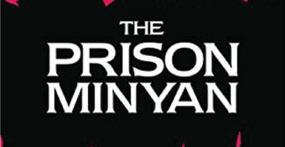
Following diamonds from African mines to the necklines of high society women, this multi-faceted history shows why Jews were central to the transatlantic gem trade. This dazzling new book focuses on Jews in the international diamond trade, drawing on original archival material from South Africa, United Kingdom, the Netherlands, and the United States. Covering the entire commodity chain from mining, processing, cutting, polishing, appraising, and selling, unearthing how Jewish populations became the central architects of a new, global exchange of diamonds.
Available from Oxford University Press (www.global.oup.com).
THE PRISON M INYAN
Jonathan Stone
Welcome to Otisville Prison in upstate NY – the only Jewish prison in the federal system – where a talkative crew of white-collar criminals, led by a rabbi and fellow convict, hold daily services, debate Talmud and ethics…until a celebrity inmate’s arrival upends everything. “A puckish Philip-Rothesque satire” – Publishers Weekly. “Delectable...glorious...you want immediately to read it all over again...this most cherishably Jewish of books.” – Jewish Chronicle. Available in paperback and e-book from Amazon and all online bookstores.
ADVERTISEMENT
THE YELLOW BIRD SINGS
Jennifer Rosner
A National Jewish Book Award Finalist for Debut Fiction and Book Club; called “exquisite and heartrending…an absolutely beautiful and necessary novel” by The New York Times Book Review. Jennifer Rosner’s breathtaking novel, The Yellow Bird Sings, is about the unbreakable bond between a mother and a daughter, and the essential role of creativity in human survival. A testament to the triumph of hope – a whispered story, a bird’s song – in even the darkest of times. Available at Bookshop.org, Amazon, and wherever books are sold.

WINTER BLESSINGS
Izzy Abrahmson
Delightful Chanukah tales your family will enjoy again and again. Lethal latkes, frozen flames, muddled challah, and a heartwarming community. Funny, silly, heartwarming, and tasty!

National Jewish Book Award for Family Literature Finalist by an Audie Award–nominated author and professional storyteller. The Times of Israel: “…utterly charming… so right and so touching.” Amazon and Audible. Signed copies at izzyabe.com.

HOW TO M AKE A LIFE
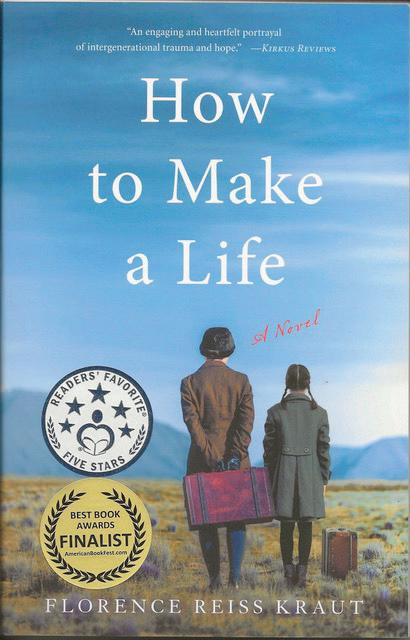
Florence Reiss Kraut
An award-winning and riveting historical novel of four generations of an immigrant family. When matriarch Ida escapes a pogrom in Ukraine determined to save her family, she cannot foresee the struggles of her descendants. Through war, mental illness, secrets and betrayal, each generation’s actions impact the lives of the next, as love and loyalty is tested by secrets and betrayal. You will recognize these family members and grieve and rejoice with them. Readers cannot put the book down. Gift it. Pick it for your book club and author will Zoom with you for a lively conversation.
Available in paperback, audio, and e-book on Amazon, or wherever you buy books. www.florencereisskraut.com
BUBBIE’S BABY: 15TH ANNIVERSARY E DITION

Elaine Serling
A musical story celebrating and honoring the special relationship between grandparents and a grandchild. This new redesigned hardcover edition features fresh lyrics, a toe-tapping memorable melody and colorful illustrations that mirror moments of joy this special bond brings. Use the digital download code printed inside the book to download the song. Reading, listening and singing together will create memories that will last a lifetime!
Available from www.elaineserling.com. 800-457-2157; $19.95 + $3 shipping.

THE ASSIGNMENT
Liza Wiemer
Inspired by a real-life incident. When a favorite teacher gives an assignment requiring students to pretend they’re Nazis and debate the Final Solution, two brave teens speak up and refuse to participate. The situation explodes, forcing the school and larger community to confront antisemitism and bigotry. What does it take for tolerance, justice, and love to prevail? Find out in this riveting, fastpaced, multi-award-winning novel. Available in hardcover, e-book, paperback, and audio wherever books are sold. Free curriculum guide through Penguin Random House. Liza will speak to Hadassah chapters, synagogues, schools, and other groups. Visit lizawiemer.com for more information.
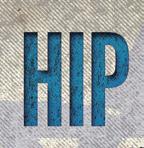
A YOUNG WIDOW’S T WENTY-YEAR JOURNEY: NAVIGATING THE NEW NORMAL
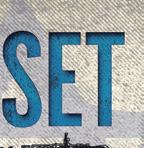




 Carol Goldblum Nathenson
Carol Goldblum Nathenson
A powerful autobiographical account of the loss of the author’s husband at an early age and how she managed to move forward through her grief. Then when a second chance at romance appears, Goldblum must maneuver blending two families together.
Readers who wish to experience this potent work can purchase “A Young Widow’s Twenty-Year Journey: Navigating the New Normal” at bookstores everywhere, or online at the Apple iBooks Store, Amazon, or Barnes and Noble.
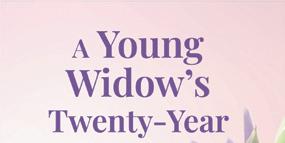
H IP SET
Michael Fertik
“Fast paced with an original, exotic setting, Hip Set is an unstoppable read from fi rst page to last,” Faye Kellerman, best-selling author. A noir thriller set in modern-day Tel Aviv, Hip Set begins with what appears to the police to be a simple murder but swiftly takes our heroes through the hidden lives of Sudanese refugees and the violent underground economy of Russian gangsters, in search of an ancient mystery, lying untouched in the desert for millennia, that has been troubling scholars since it first appeared in the Old Testament itself.
Available on Amazon.
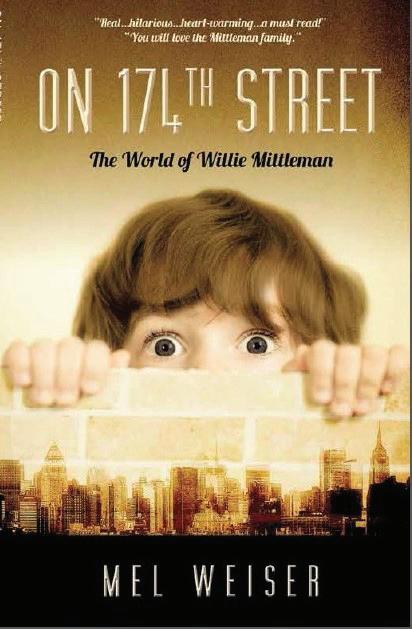
O N 174TH STREET: THE WORLD OF WILLIE M ITTLEMAN
Mel Weiser
Days are bad in the Great Depression of the 1930s. But for little Willie Mittleman and the Mittleman clan in their Bronx, NY neighborhood, life is still good, proving that laughter and love will always be the lifesaving forces to rescue us from adversity and pain. A big-hearted gem. Funny, touching and insightful. For readers of all ages.
Available on Amazon.

J UDAISM AND CHRISTIANITY: A CONTRAST
Rabbi Stuart Federow Christian missionaries calling themselves messianic “Jews,” Jews ingratiating themselves to Evangelical Christians for their support of Israel, the overuse of the term “Judeo-Christian,” and the increasing use of Jewish rituals in Christian churches are among the factors that blur the lines between Judaism and Christianity. Judaism and Christianity: A Contrast explains, from a Jewish perspective, the irreconcilable di erences and mutually exclusive beliefs of the two faiths. Now available in Spanish, as Judaismo y Cristianismo: Un Contraste.
Available at Amazon and Barnes and Noble in hardcover, paperback and in all e-book formats.
To advertise here, please call Randi O’Connor at (212) 451-6221, or email roconnor@hadassah.org. Space is limited.
ADVERTISEMENT
So, What Else Is New?
Innovators, clean slates and new olim
By Joseph Lowin
There are two types of people in this world: those who divide the world into opposites—e.g., new and old—and those who don’t. Take the example of the Hebrew root שׁ ד ח (het-dalet-shin), “to be new.” This very old root traveled many linguistic roads before settling into modern Hebrew. For example, the ancient city of Carthage was given the Phoenician name Qart-hadasht, which means “New City,” at its founding. In Islam, Hadith, designating a form of sacred Muhammadan literature second only to the Koran, is also derived from the same root, where the Arabic “th” sound is equivalent to the Hebrew “sh.”
Jewish scripture refers to the root hundreds of times with the word שֶׁדֺח (hodesh), month. For example, שֶדֺח שׁאׂר (rosh hodesh), the new moon, is celebrated with animal sacrifices. But Isaiah 1:14 gives a nuance to the root, asserting that םֶכיֵשְׁדָָח (hodshekhem), “your sacrifices,” are offered merely to assuage a guilty conscience. A single biblical verse—שָׁדָח ךְֶלֶמ םָקָיַָּו (va-yakom melekh hadash), “a new [Egyptian] king has arisen”—foreshadows an era of oppression for the Israelites. At a later time, Deborah’s song in the Book of Judges, celebrating military victory, uses our root in the enigmatic expression םיִשָׁדֲח םיִהלֱֹא (elohim hadashim), literally, “new gods,” but the verse is probably referring to “new leaders.” Lamentations 5:21 provides us with a beautiful prayer for national renewal based in tradition, םֶדֶֽקְכּ וּניֵמָי שֵׁדַּח (hadesh yameinu ke-kedem), “Renew our days as of old.” And then there is Ecclesiastes, for whom שֶׁמָשַּׁה תַחַתּ שָׁדָח לָכּ ןיֵא (ein kol hadash tahat ha-shamesh), “There is nothing new under the sun.”
Some Jewish fundamentalists who reject תוּנָשׁדַּח (hadshanut), modern ization, prohibit not only new produce but any religious innovation, שָׁדָחֶה (he-hadash), literally, the new itself.
Today, we may want to start a discussion שָׁדָחֵמ (me-hadash), with a clean slate. Modern Hebrew offers the perfect conversation starter—שָׁדָח הֶמ (meh hadash), “What’s new?” Answers to that question can be found in a broadcast of םוֹיַה תוֹשָׁדֲח (hadashot ha-yom), news of the day, which may feature a ןֲשׁדַּח (hadshan), innovator, or introduce the latest שׁיִדָח (hadish), up-to-date, Hebrew word derived from our root.

And, when an הָשָׁדֲח הָלוֹע (olah hadashah), a newcomer settling in Israel, shows up, sometimes stylishly coiffed, sporting a fashionable outfit and driving a brand new car, it’s surely the right moment to voice a multifaceted יִשׁדַּחְתּתּ (tit-hadshi), “May you be renewed.”
Statement of Ownership, Management and Circulation: (Act of October 23, 1962 Section 4369, Title 39, and United States Code.) Date of filing: October 2022. Title of Publication: Hadassah Magazine. Frequency of Issue: Bi-monthly. Location of Known Of fice of Publication: 40 Wall St., 8th Floor, New York, NY 10005. Location of Headquarters of General Business Offices of the Publishers: 40 Wall St., 8th Floor, New York, NY 10005. Executive Editor: Lisa Hostein,: 40 Wall St., 8th Floor, New York, NY 10005. Owner: Ha dassah, The Women’s Zionist Organization of America, Inc.: 40 Wall St., 8th Floor, New York, NY 10005. Known Bondholders, Mortgages and other Security Holder Owning of Hold ing One Percent or More of Total Amount of Bonds, Mortgages or other Securities: None. Average No. of Copies of Each Issue Printed During 12 Months from September/ October 2021—July/August 2022: 229,950. Paid Subscriptions on Form 3541 and Other Classes Mailed Via USPS: 223,960. Paid Circu lation Via Non-USPS Distribution: 2,703. Free Distribution by USPS Mail or Other Means: 1,771. Total Distribution: 228,434. Copies Not Distributed: 1,156. Total: 229,590. Total Num ber of Copies Printed Nearest to Filing Date: 227,916. Paid Subscriptions on Form 3541 and Other Classes Mailed Via USPS: 223,358. Paid Circulation Via Non-USPS Distribution: 2,720. Free Distribution by USPS Mail or Oth er Means: 1,595. Total Distribution: 227,673. Copies Not Distributed: 243. Total: 227,916.

ABOUT HEBREW SHUTTERSTOCK
Joseph Lowin’s columns for Hadassah Magazine are collected in the books HebrewSpeak, HebrewTalk and the recently published Hebrew Matters
63 NOVEMBER/DECEMBER 2022 I I hadassahmagazine.org
QUESTION
ANSWER
Shelley Greenspan
When shelley greenspan was appointed over the summer as the new white house liaison to the American Jewish community, she found what she calls “more than her dream job,” combining her passion for public service and Jewish life. A self-described “proud Zionist,” the 32-year-old Miami Beach native and granddaughter of Holocaust survivors is no stranger to the alphabet soup of American Jewry. She has worked profes sionally at the American Israel Public Affairs Committee and has served on the boards of the Anti-Defamation League, Jewish National Fund and Jewish Women International.

Greenspan also has been politically active, helping lead Jewish Women for Joe during President Biden’s 2020 campaign. In addition to her liaison role, she is continuing to serve as a policy advisor at the National Security Council.

When we spoke through Zoom one week before her September wedding, the Hadassah life member and Young Judaea Year Course alumna was wearing a Hadassah pin—a golden lion sitting between the words “Hadassah” and “Young Judaea”—that once belonged to her grandmother. This interview has been edited for brevity and clarity.
To what extent has your Jewish back ground influenced your career path?
I went to a Reform synagogue, a Conservative summer camp and an Orthodox day school. So from a very young age, I learned to embrace the diversity in our community. As I got older, the more I connected with my own Jewish identity, I fell in love with public service, which goes hand in hand with the values from our tradition.
How would you describe your role as liaison to the Jewish community?
I serve as the administration’s voice to the community, and I’m also tasked with gathering consensus from the community on issues that we care about—which isn’t always the easiest—for the benefit of White House policymakers. I want to ensure that diverse voices are being heard, not just the traditional voices that are the loudest, and that their concerns are turned into action.
What key issues are American Jews most concerned about these days?
I think of it in the reverse: What are the key issues for the administration?
And also making sure we have rela tionships within the Jewish community, which is so involved in domestic poli tics and foreign policy, everything from the availability of kosher baby formula to reproductive rights to antisemitism.
What about Iran? Many Jews worry about what reviving the nuclear agreement would mean for Israel.
My job is making sure our commu nity is being updated and that people’s concerns are being relayed to admin istration officials. We recently set up a briefing with Rob Malley, the special envoy for Iran, with about 30 Jewish leaders to ask their questions and voice their opinions. You know they might not always agree when it comes to something as heavy as Iran, and even within the Jewish community there’s a lot of diversity on foreign policy. But I think as long as you’re being transpar ent and keeping each other in the loop, that’s how I define success in this role.
The American Jewish world is far from monolithic. How do you navigate those internal politics?
I really am trying to be strategic in
the ways in which we either set up a roundtable or invite folks to a briefing. We aren’t just trying to build rela tionships with Jewish Democrats. We want to hear from all American Jews, including Jewish Republicans. It’s also about empowering women and minori ties within the community, including Jews of Color, who maybe in the past haven’t gotten a seat at the table.
Some say one of your most import ant roles is determining who’s invited to the White House Hanuk kah party. Would you agree?
We all joke about the Hanukkah invites, but I think it’s really something to celebrate the fact that this means so much and that it has come to be a tradition in the White House. [It began with President George W. Bush in 2001.] We are koshering the kitchen in the White House yet again for this year’s Hanukkah celebration for so many leaders—that’s never something you want to take for granted.
Lisa Hostein is the executive editor of Hadassah Magazine . Read a longer version of this interview at hadassahmagazine.org
The bridge between the White House and American Jews | By Lisa Hostein
64 NOVEMBER/DECEMBER 2022 I I hadassahmagazine.org
A Win-Win Way to Support Hadassah
Sheila and Stanley Schwartz have built lifelong friendships through Hadassah. With family in Israel, they’ve also seen Hadassah’s work on the ground and believe in its mission. The Schwartzes have now established four

charitable gift annuities (CGAs) to support Hadassah’s work.
You can make a lasting impact and receive lifetime income, too. Contact us to learn how a CGA could benefit you.
The information and content contained herein are intended for educational purposes only and are not intended to provide legal, tax or other professional advice or to be relied upon. For such advice, please consult with an attorney, tax advisor or accountant. Figures cited in any examples are for illustrative purposes only. References to estate and income taxes include federal taxes only and are subject to change. State income/estate taxes and/or other state laws may impact your individual results. The solicitation disclosure on page 56 is incorporated in this advertisement.
Charitable deductions are allowed to the extent provided by law. Hadassah shall have full dominion, control and discretion over all gifts (and shall be under no legal obligation to transfer any portion of a gift to or for the use or benefit of any other entity or organization). All decisions regarding the use of funds for any purpose, or the transfer of funds to or for the benefit of any other entity or organization, shall be subject to the approval of the Board or other governing body of Hadassah.
California residents: Annuities are subject to regulation by the State of California. Payments under such agreements, however, are not protected or otherwise guaranteed by any government agency or the California Life and Health Insurance Guarantee Association. Oklahoma residents: A charitable gift annuity is not regulated by the Oklahoma Insurance Department and is not protected by a guaranty association affiliated with the Oklahoma Insurance Department. South Dakota residents: Charitable gift annuities are not regulated by and are not under the jurisdiction of the South Dakota Division of Insurance.
HADASSAH, THE WOMEN’S ZIONIST ORGANIZATION OF AMERICA, INC.
©2022 Hadassah, The Women’s Zionist Organization of America, Inc., Hadassah, the H logo, and Hadassah the Power of Women Who Do are registered trademarks of Hadassah, The Women’s Zionist Organization of America, Inc.
1.800.428.8884 giving@hadassah.org plannedgiving.hadassah.org Like
Free Personalized Example
Sheila and Stanley, you can help make a lasting impact on Hadassah’s work and receive lifetime income for you or someone you choose. Contact us today to learn how a charitable gift annuity could benefit you.
*Rates
July
2022. Rates are fixed when annuity is established.
in New York, please contact us directly as your rates may vary slightly.
ONE-LIFE RATES * Age Rate Age Rate 65 4.8% 80 7.0% 70 5.3% 85 8.1% 75 6.0% 90+ 9.1%
as of
1,
Rates are also available for two-life gift annuities. If you reside
Minimum age: 65 | Minimum contribution: $5,000.
“If you want to make a gift which will benefit Hadassah in the future, while also earning some income ... [you] might as well do it through a charitable gift annuity. It’s a simple win-win decision.”
—Stanley Schwartz, Atlanta, Georgia
Charitable Gift Annuity Rates
Stanley and Sheila Schwartz


















 By Arielle Kaplan
By Arielle Kaplan

















 Edelstein
Edelstein




















 By E. Kinney Zalesne
By E. Kinney Zalesne










































 By Wendy Elliman
By Wendy Elliman

























































 by Chiara Fedele (Beaming Books)
by Chiara Fedele (Beaming Books)




 By Maryann Cocca-Leffler. Illustrated by Vivien Mildenberger (Abrams Books for Young Readers)
By Maryann Cocca-Leffler. Illustrated by Vivien Mildenberger (Abrams Books for Young Readers)













































 —Elizabeth Rosner
—Elizabeth Rosner




















































 Carol Goldblum Nathenson
Carol Goldblum Nathenson









